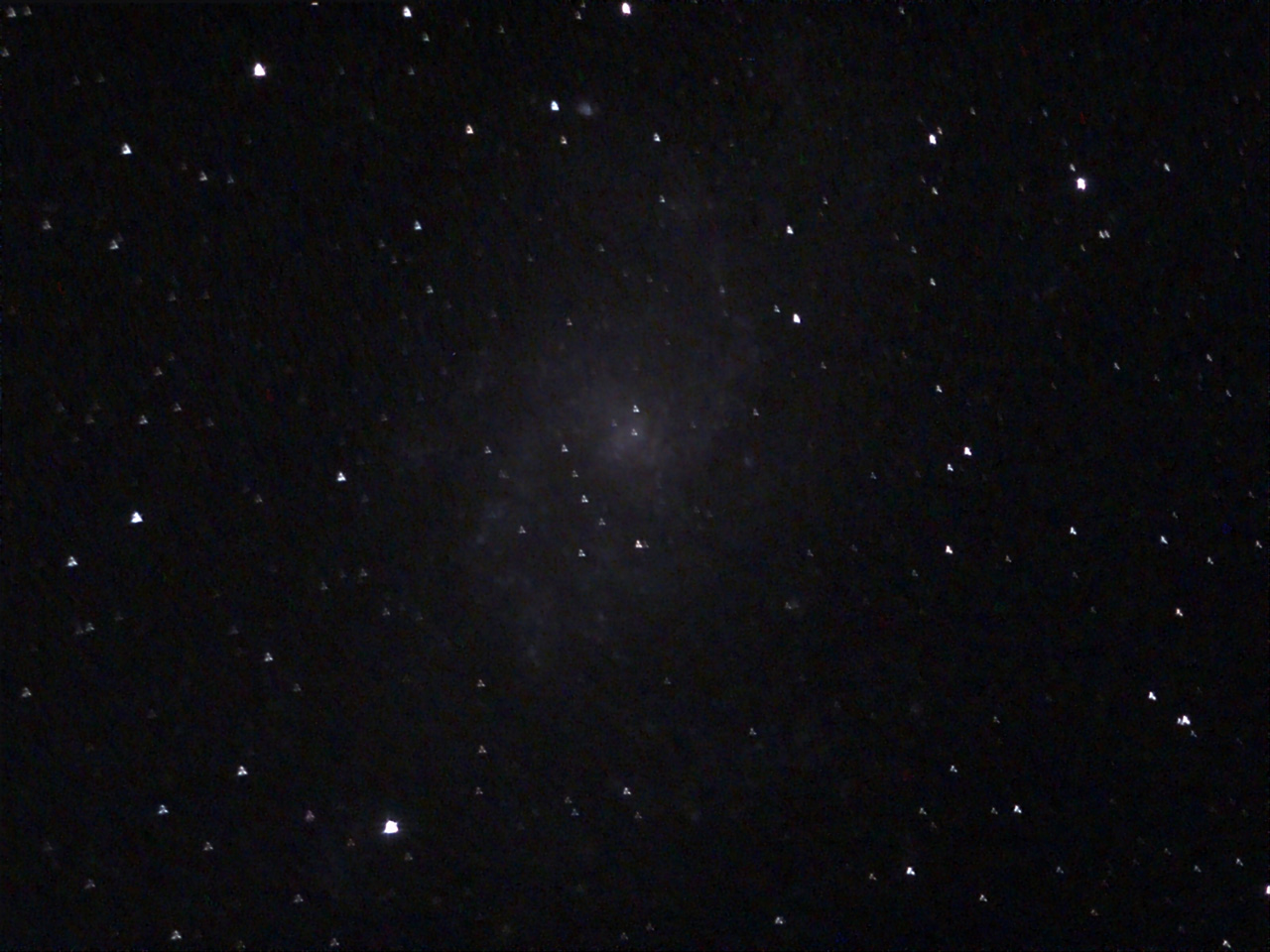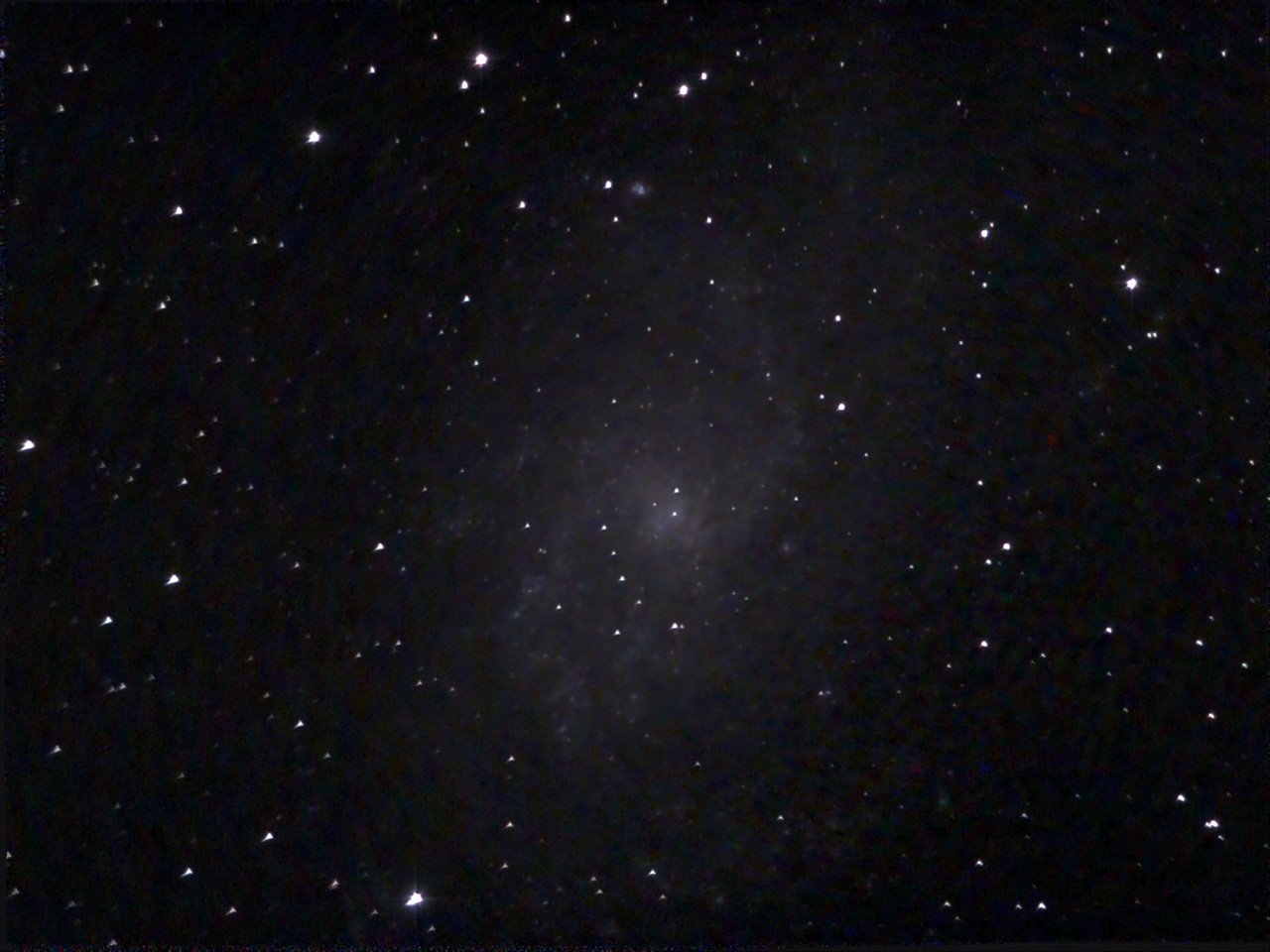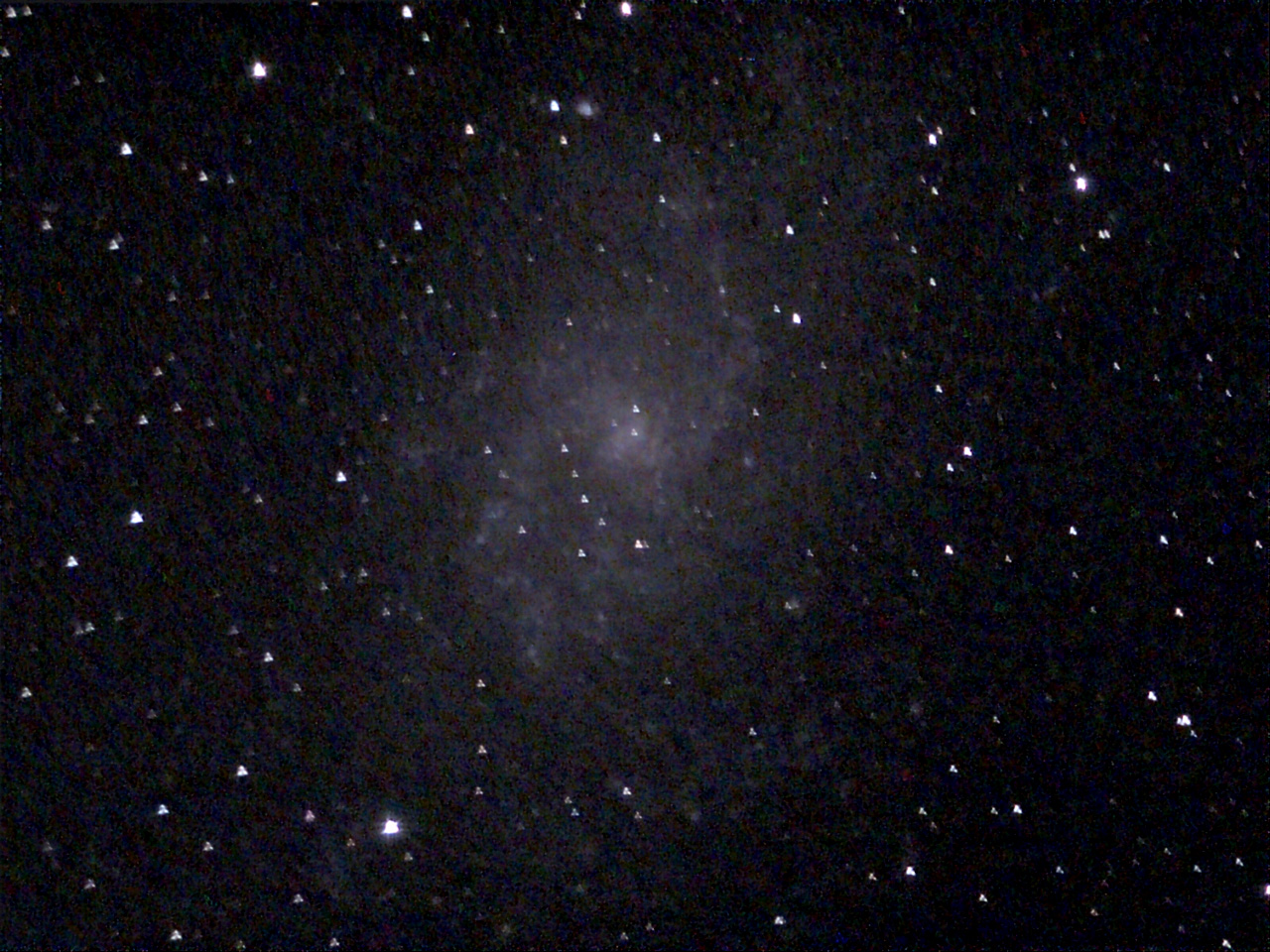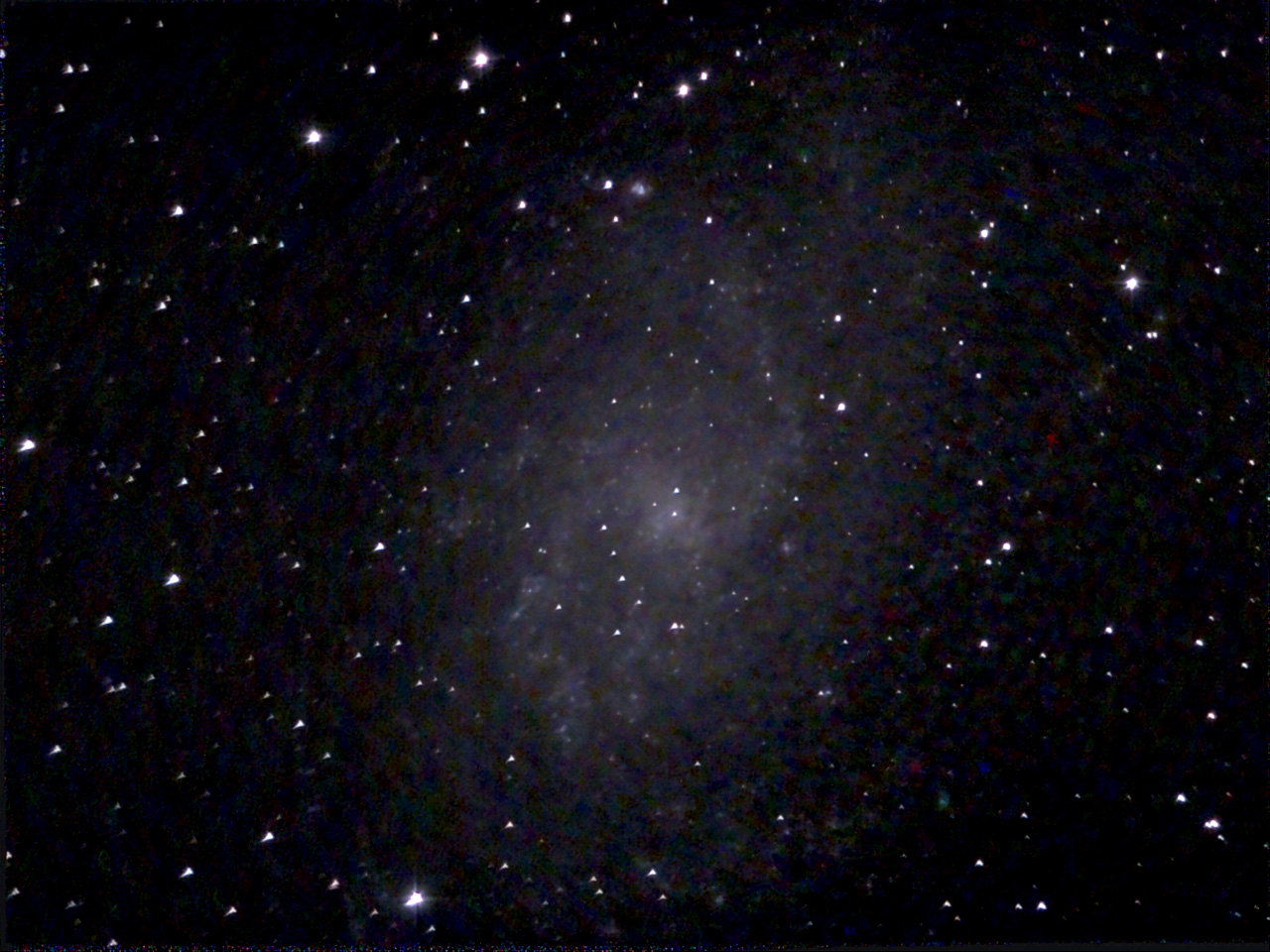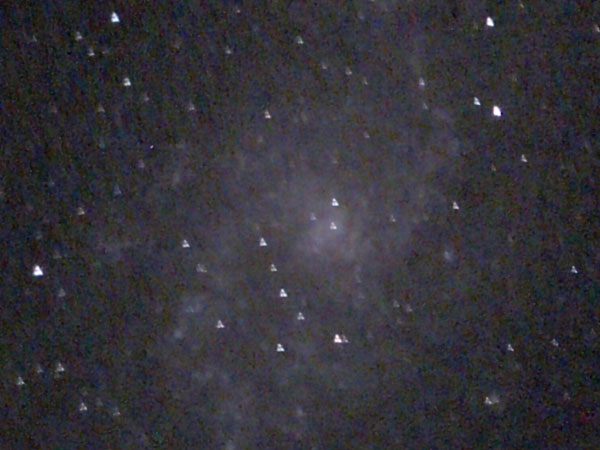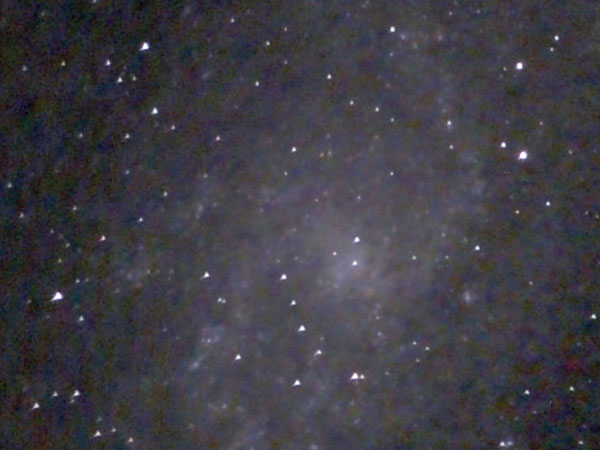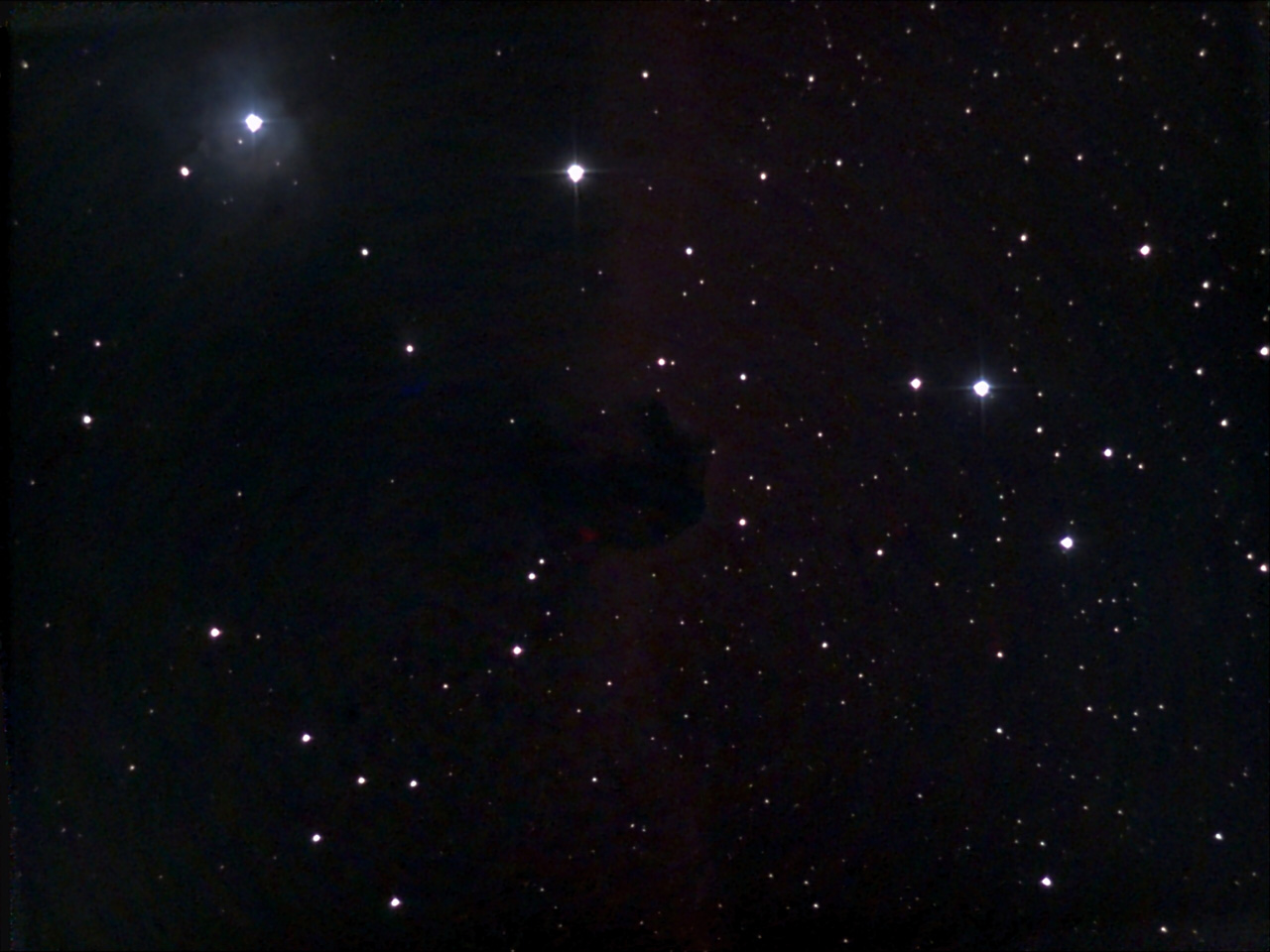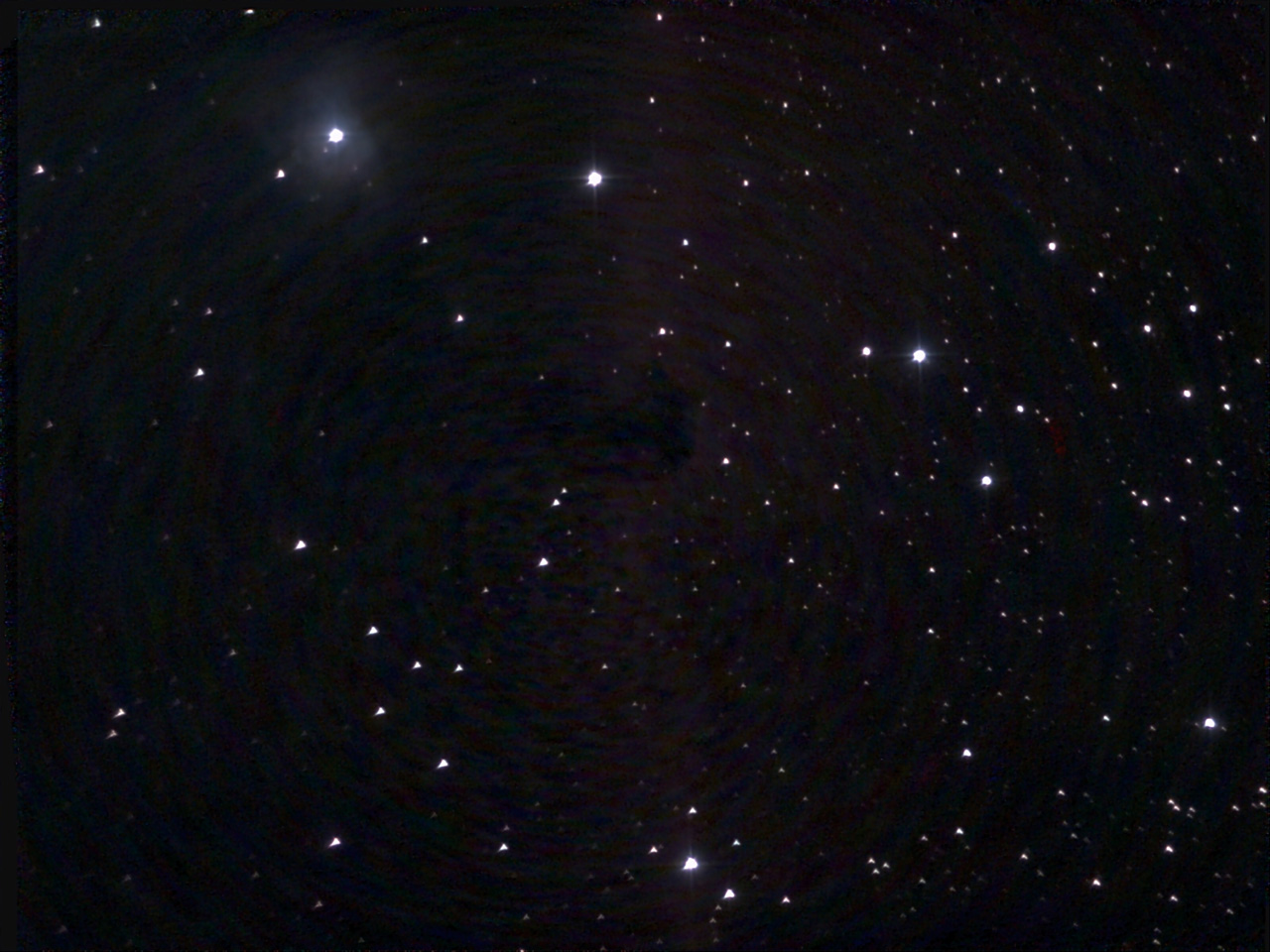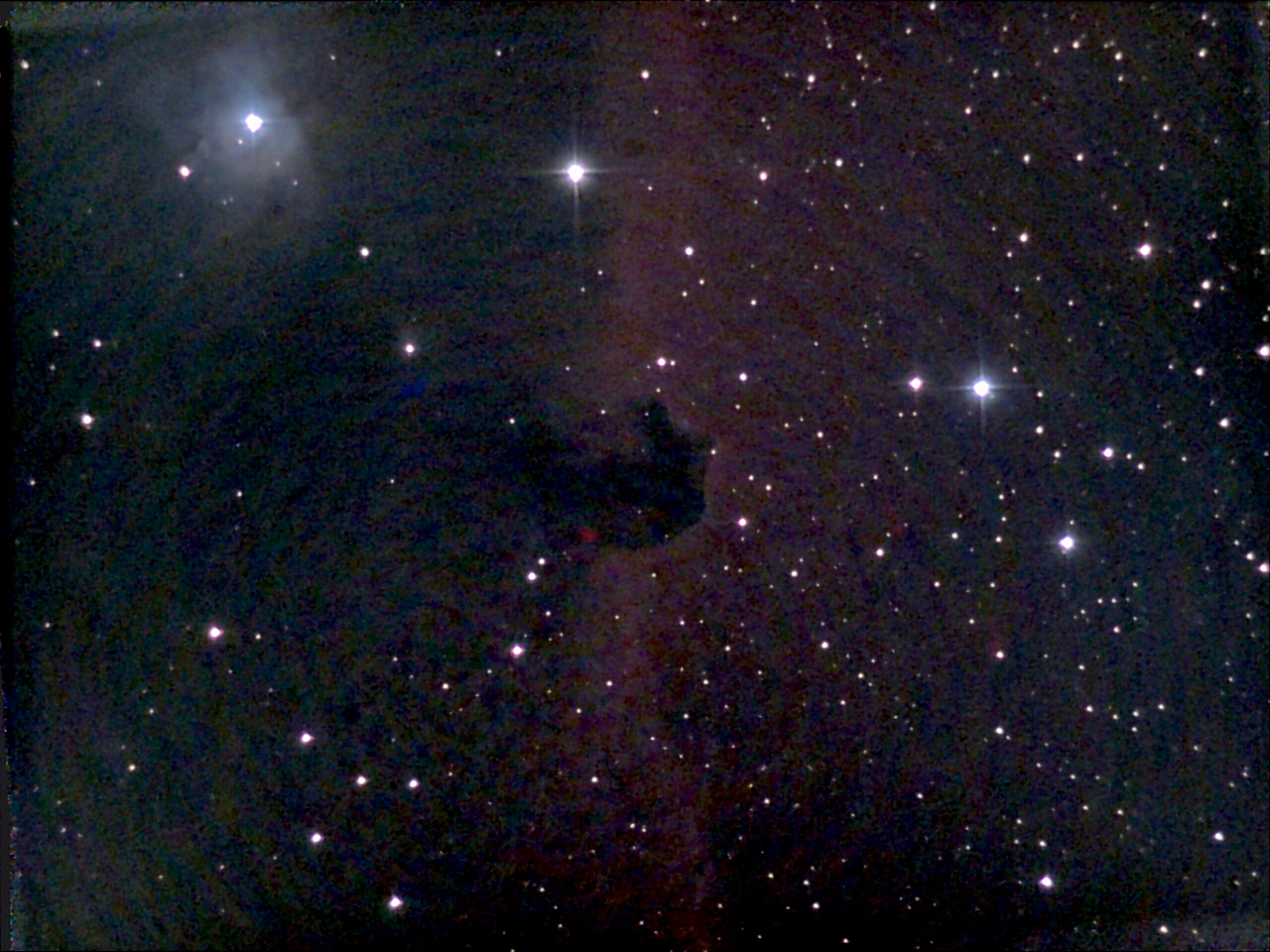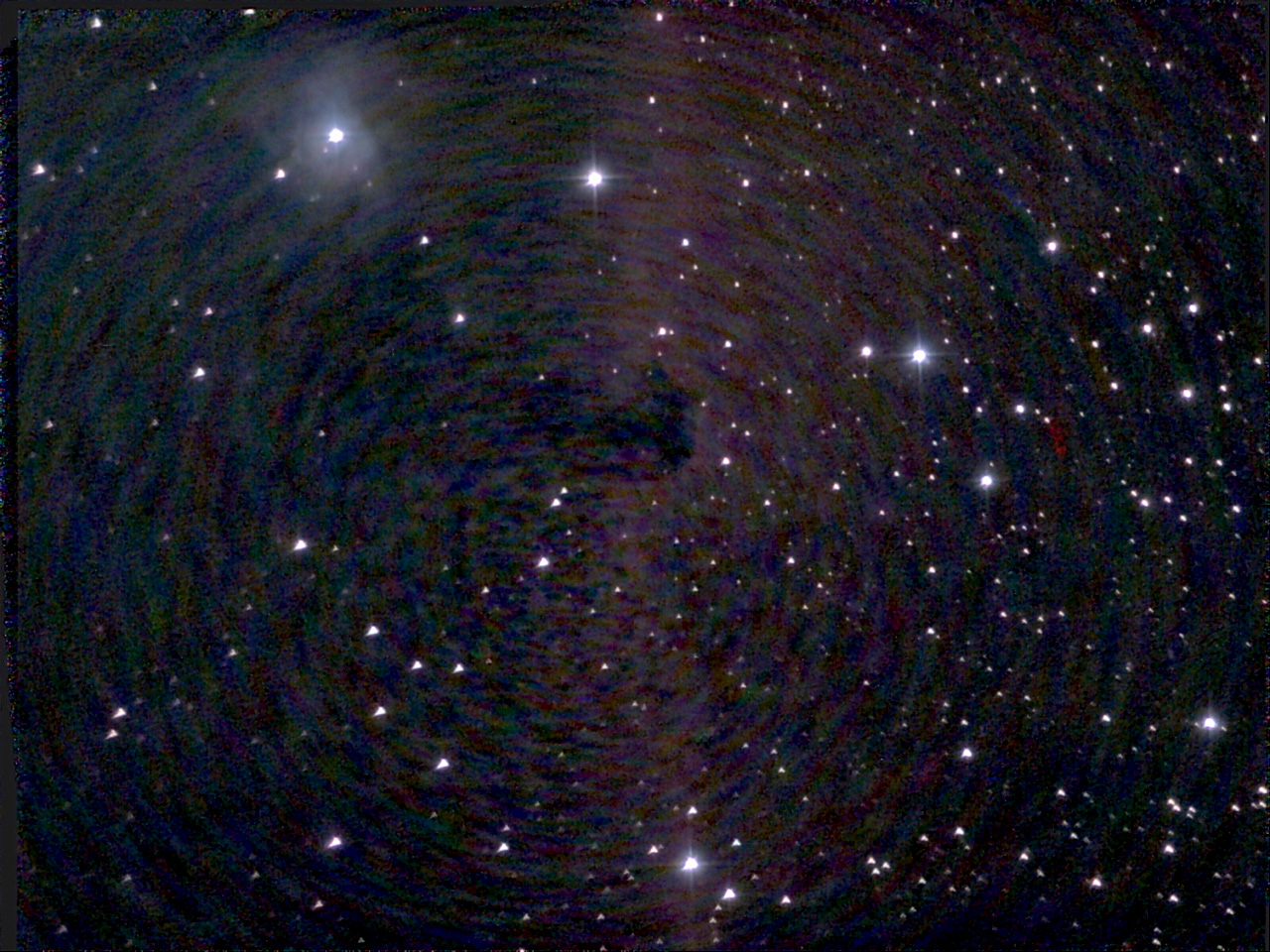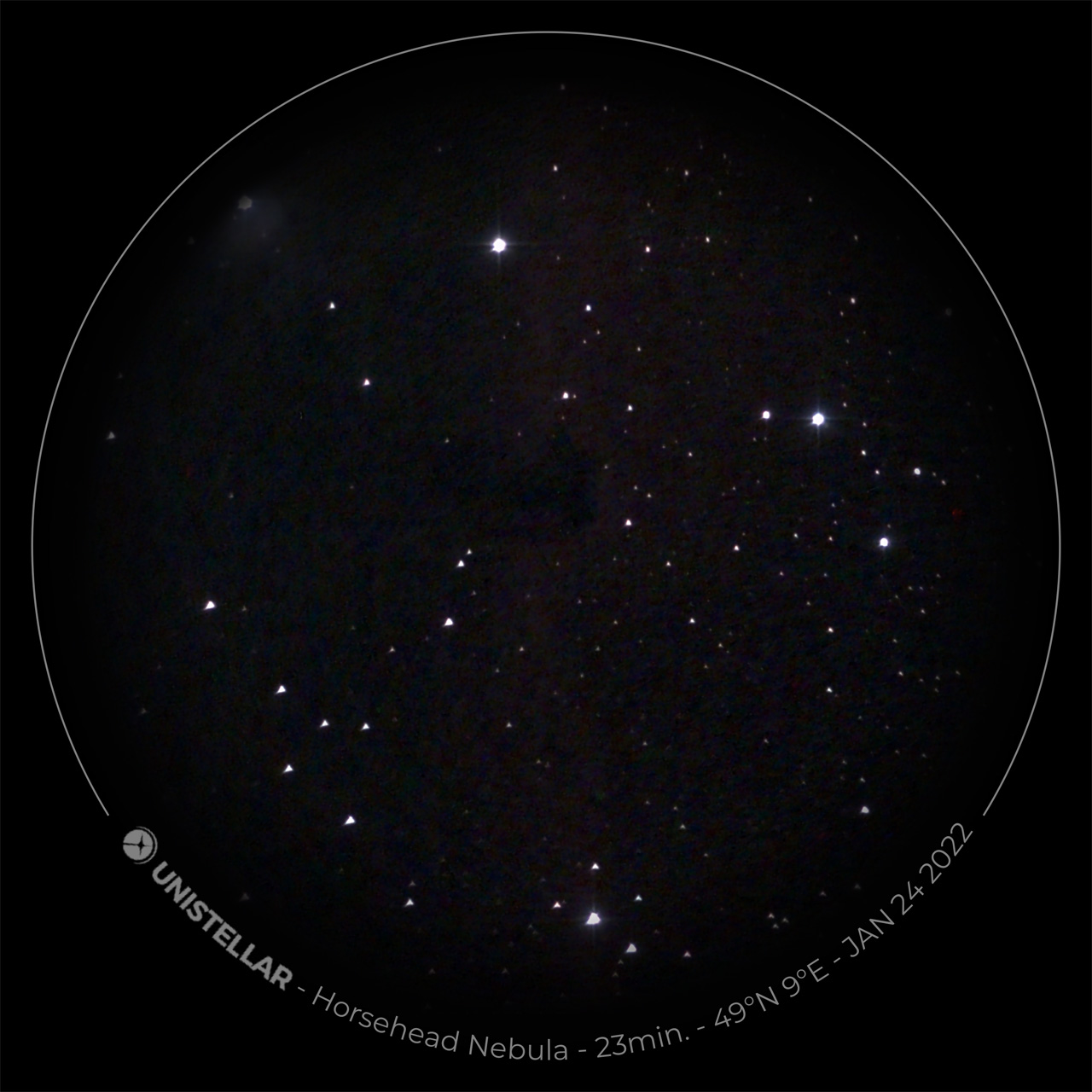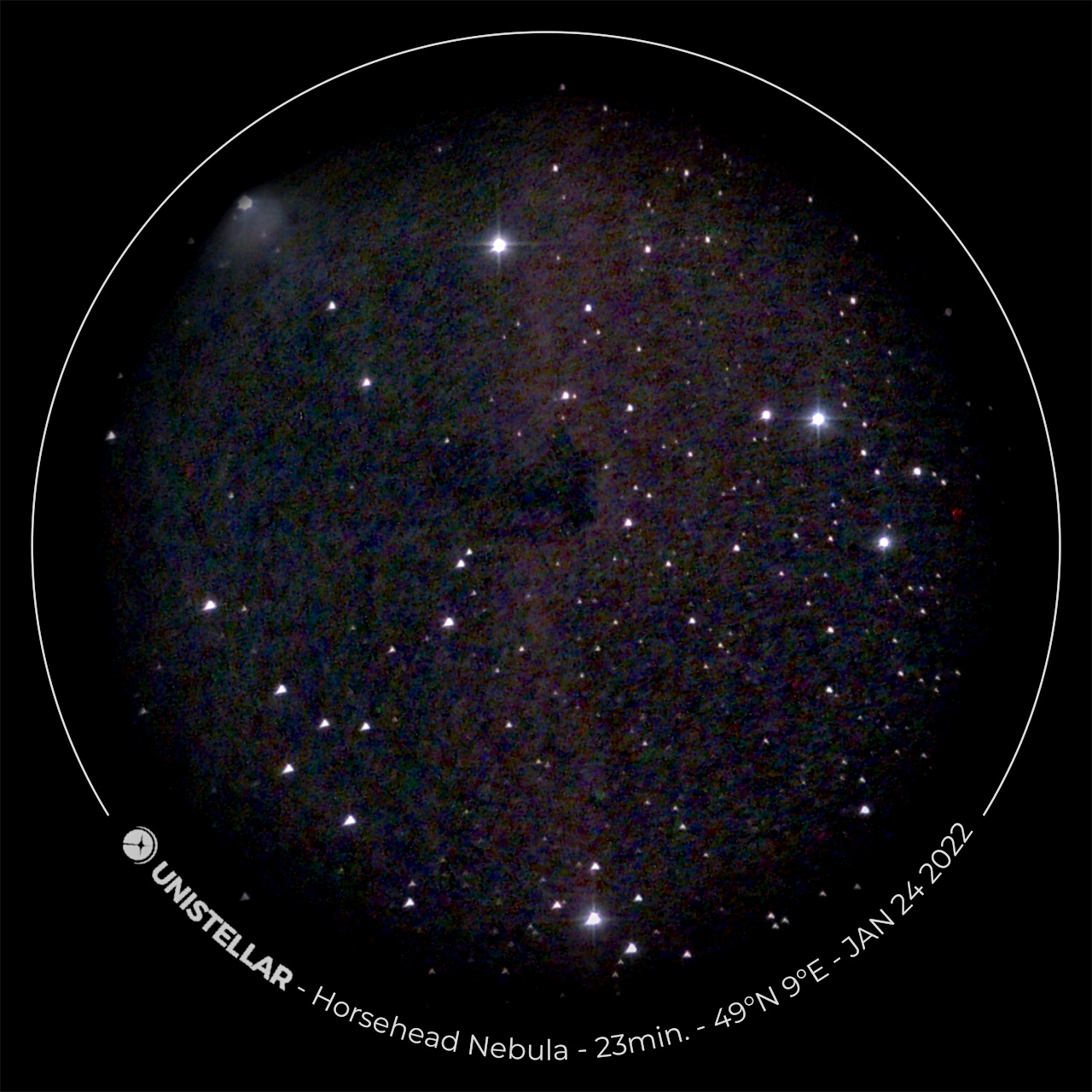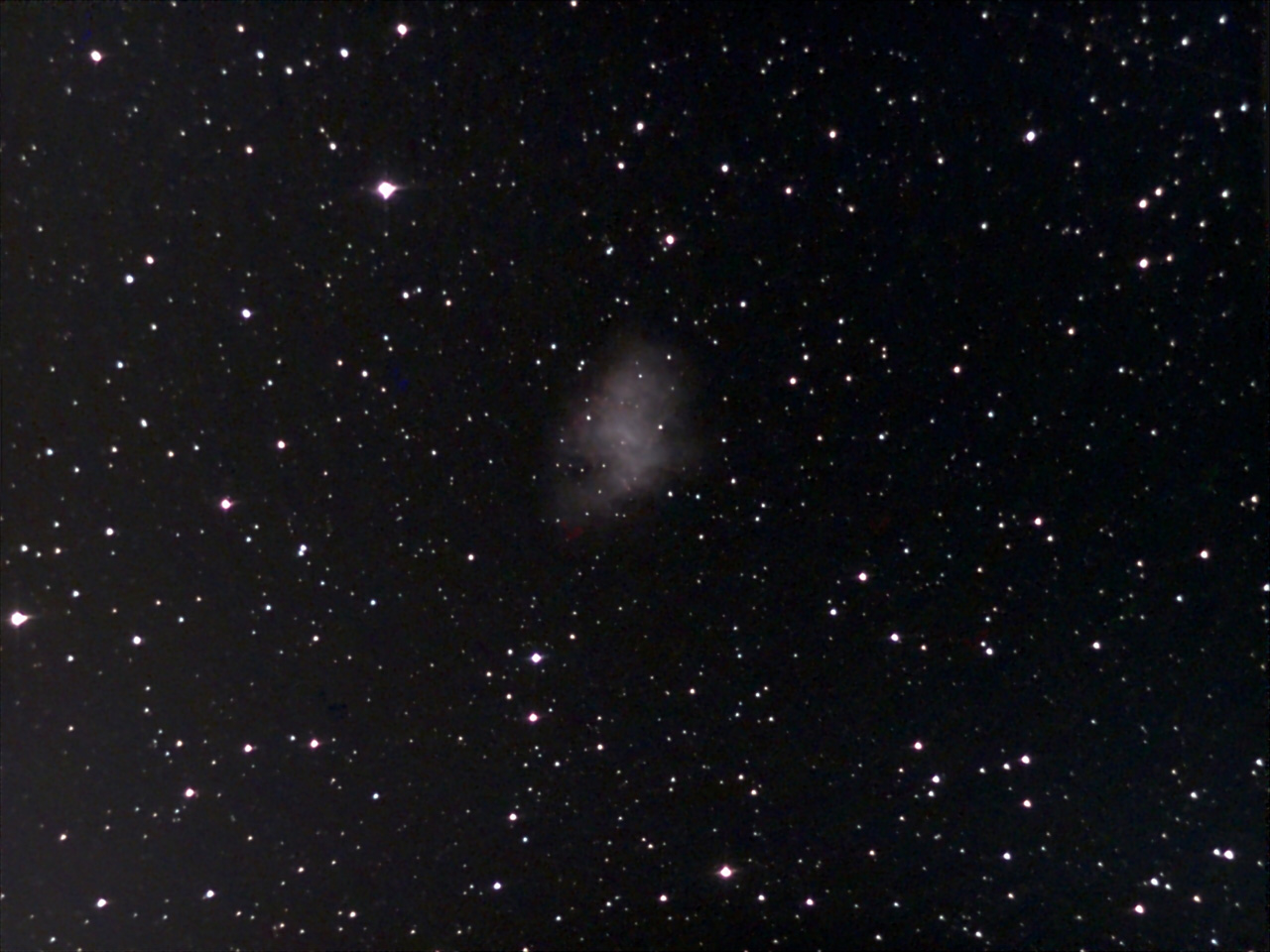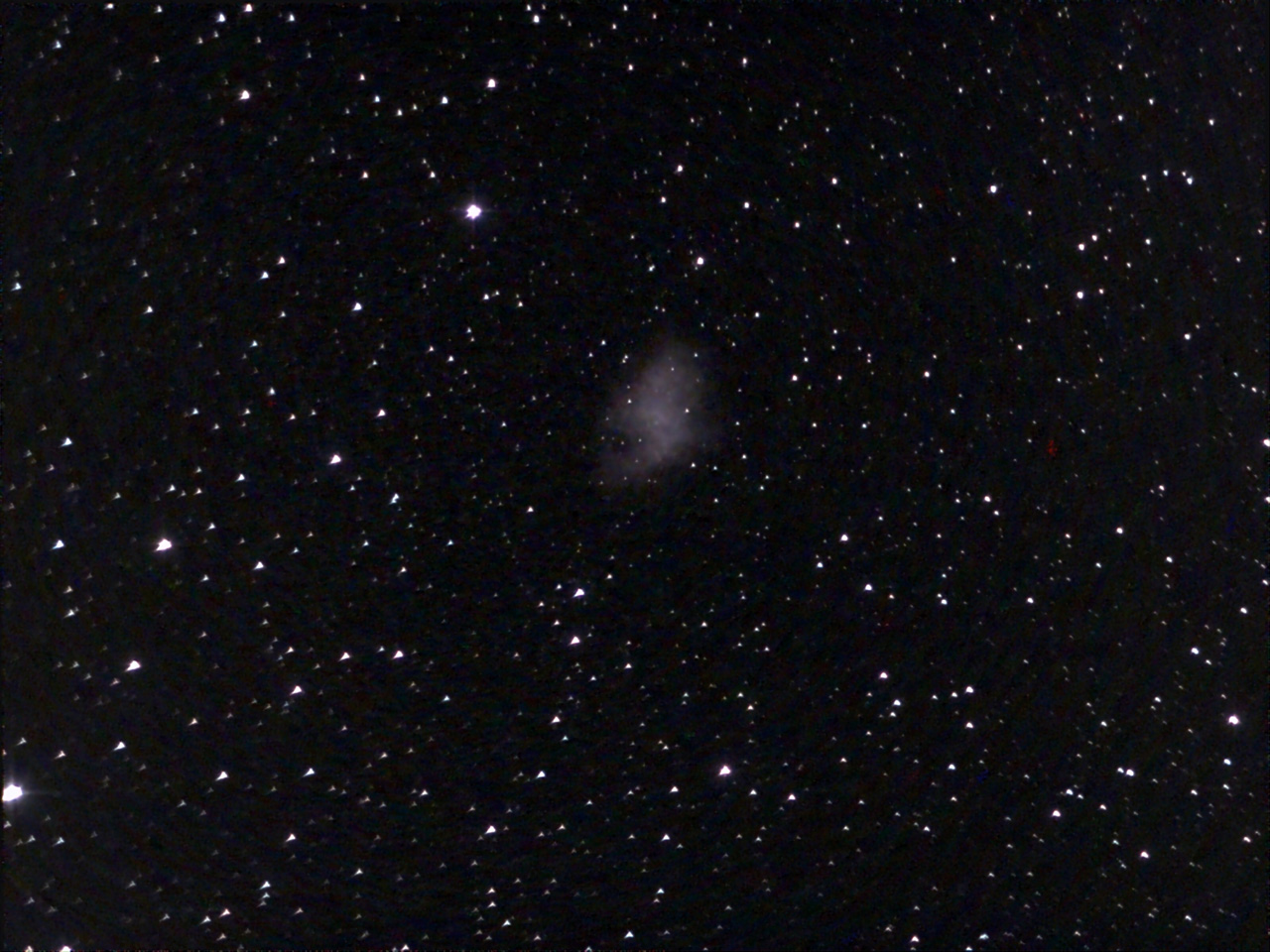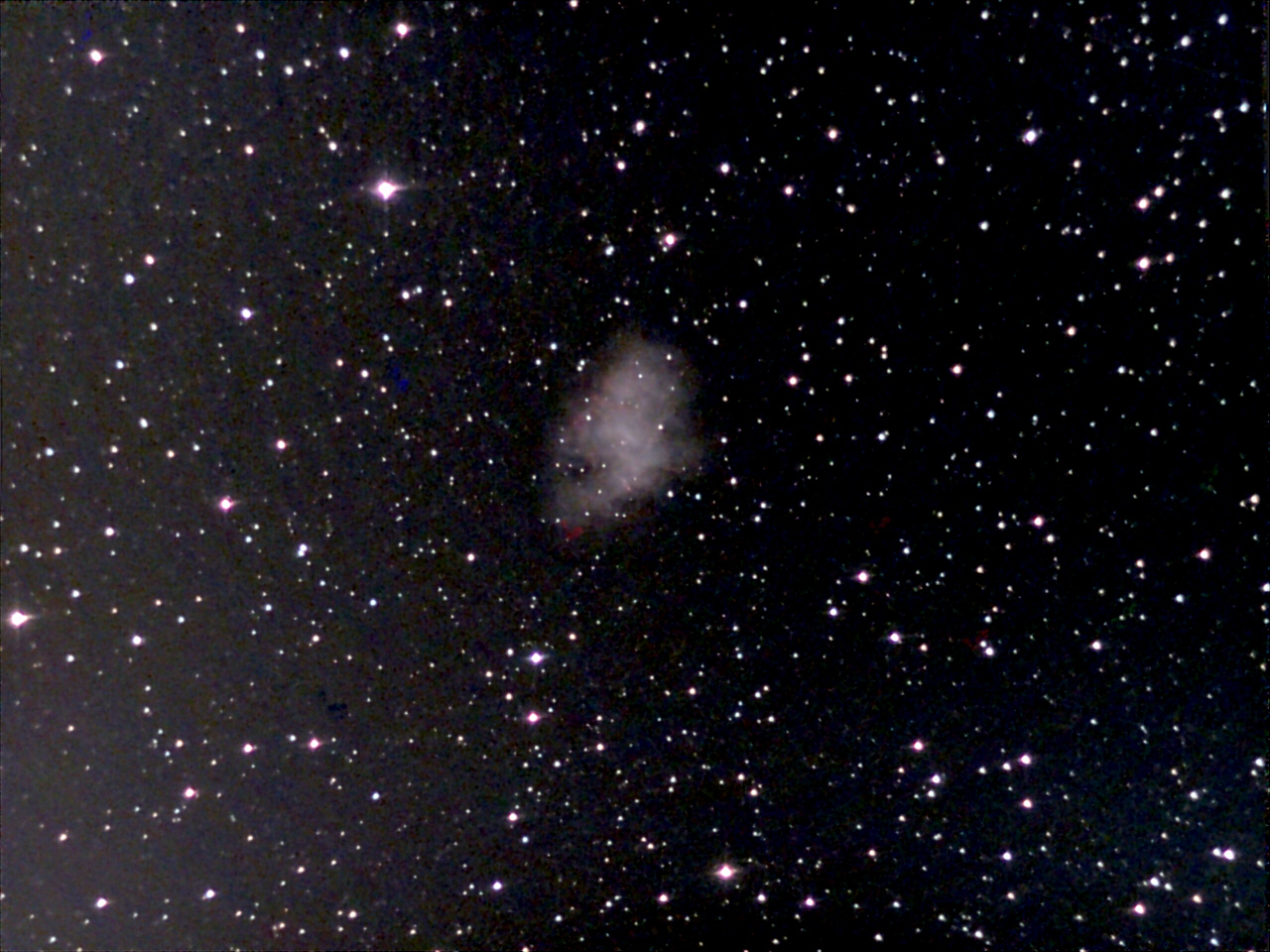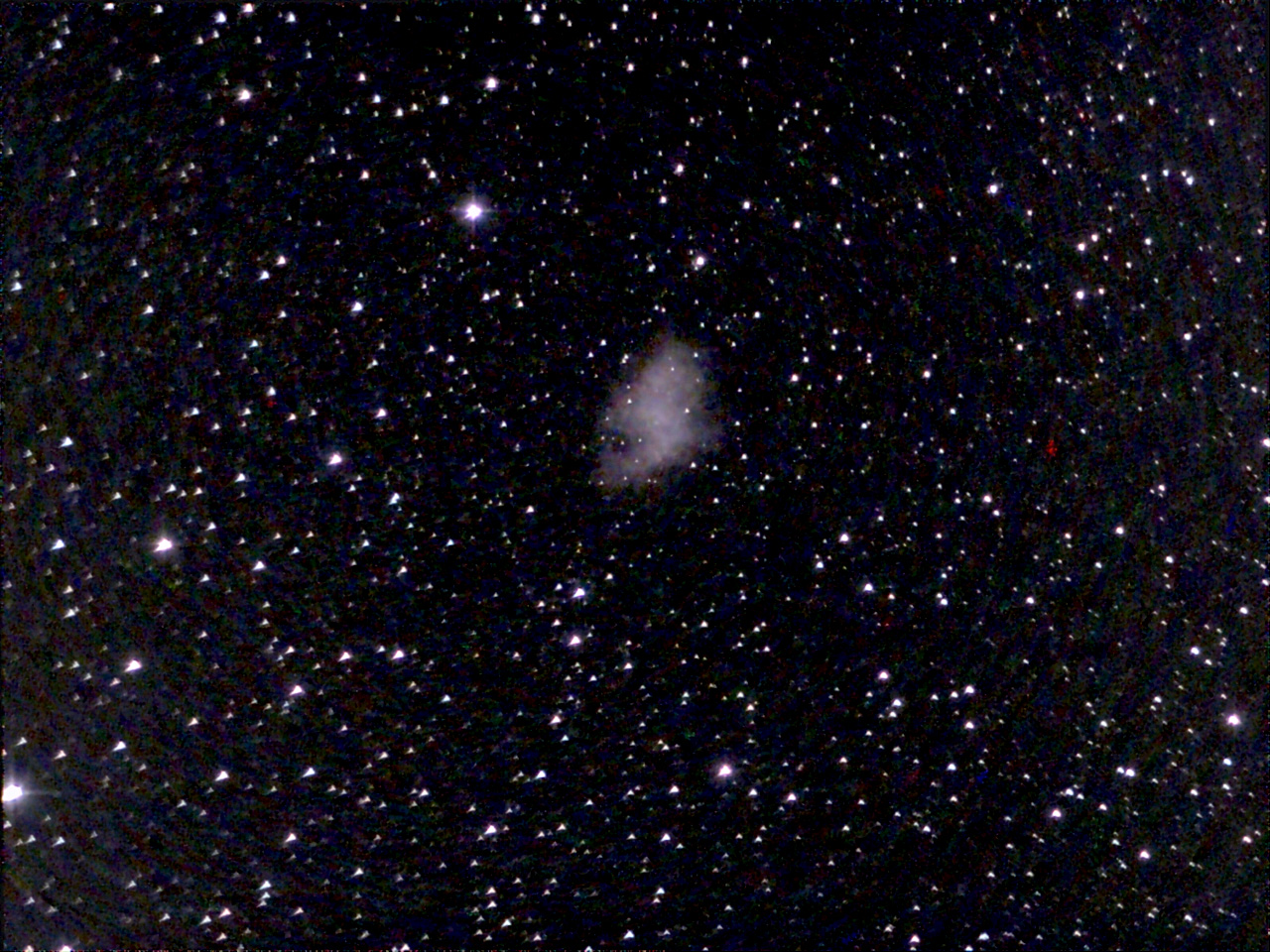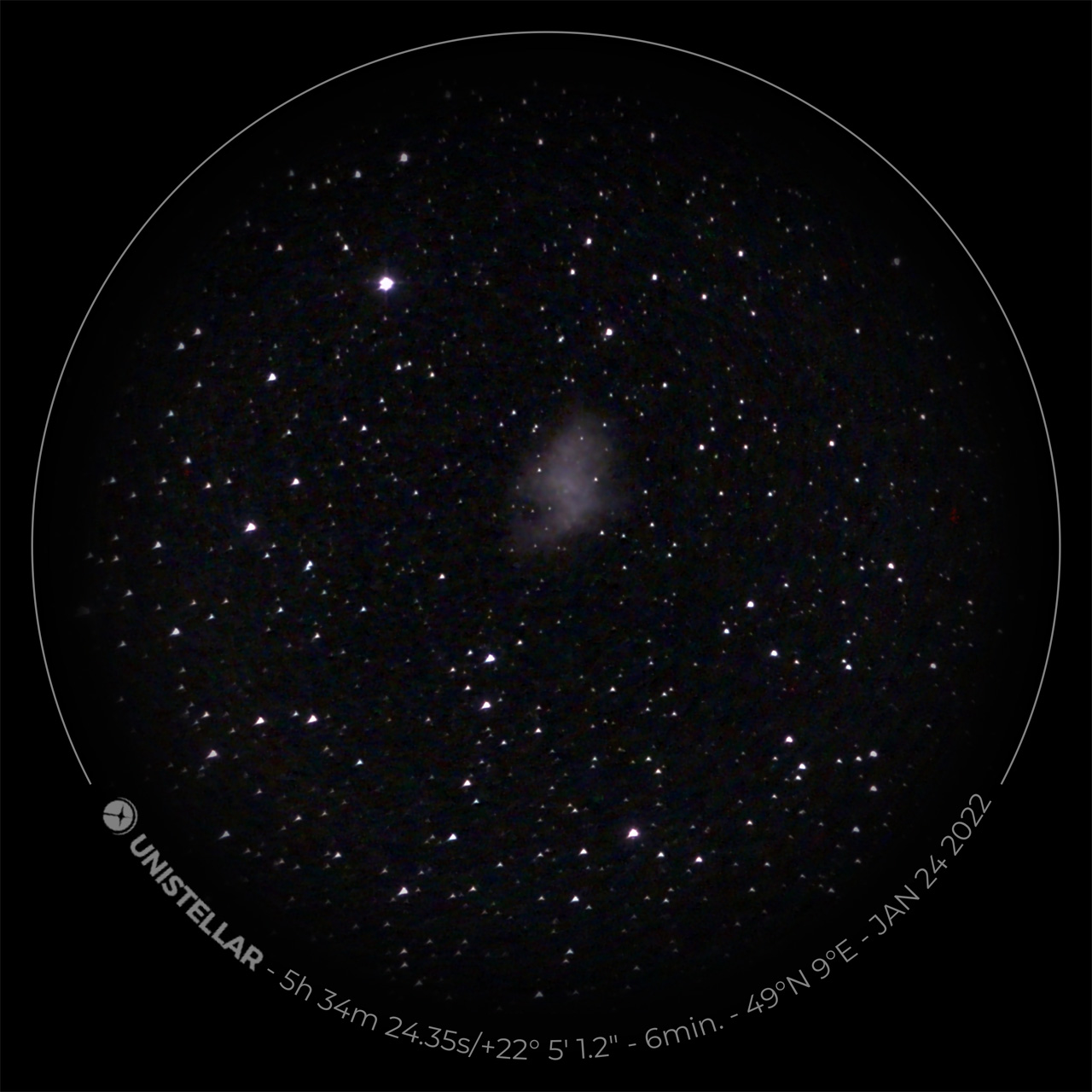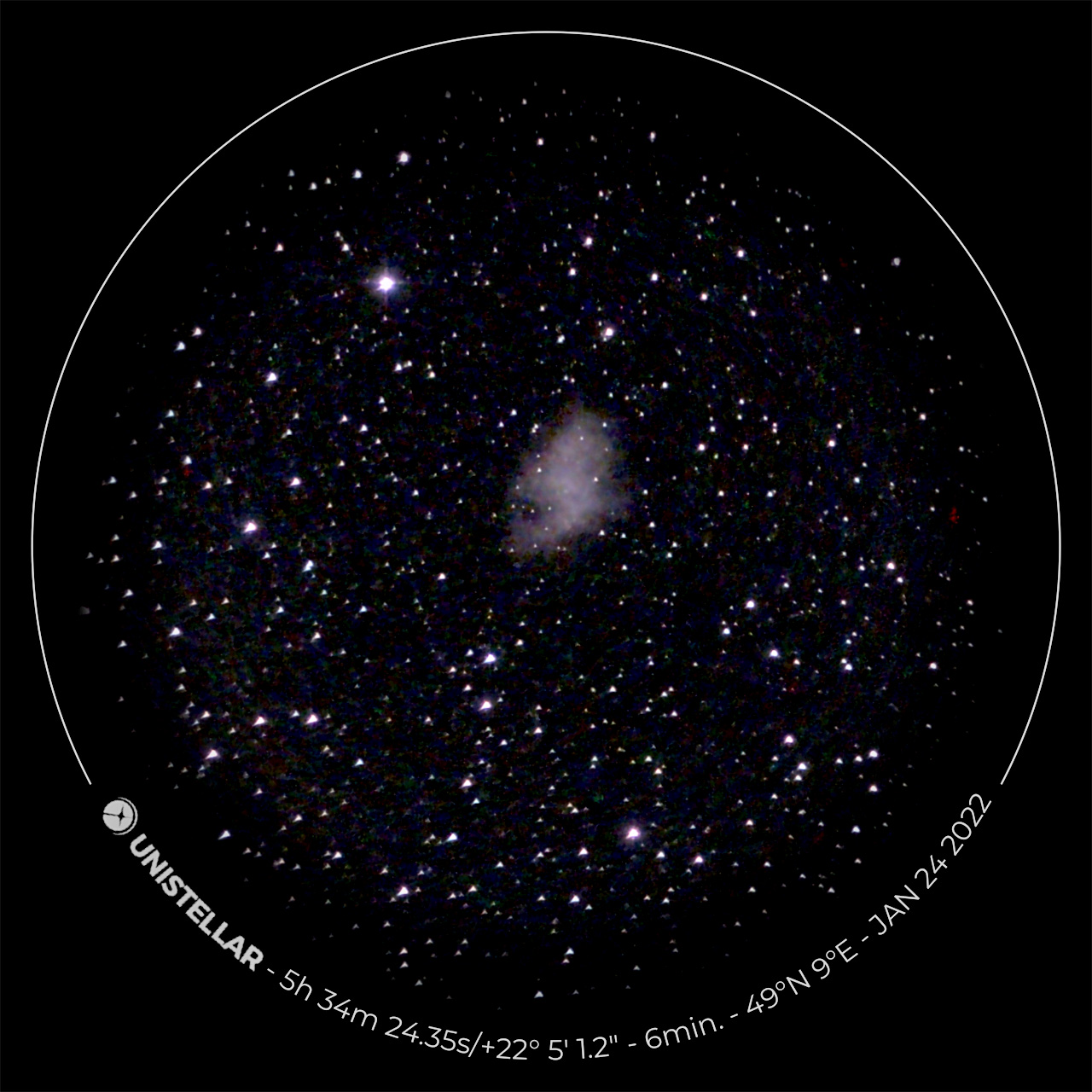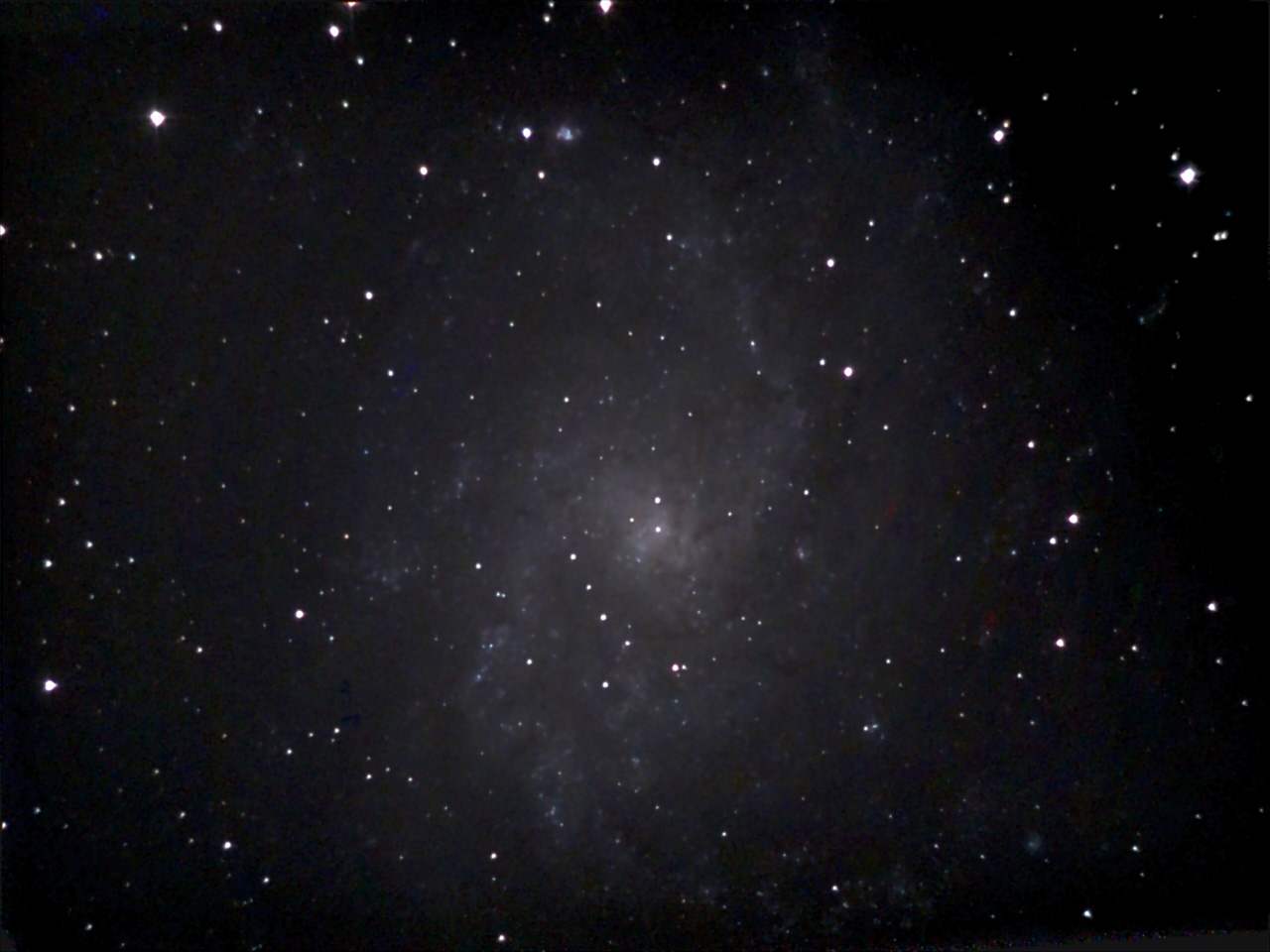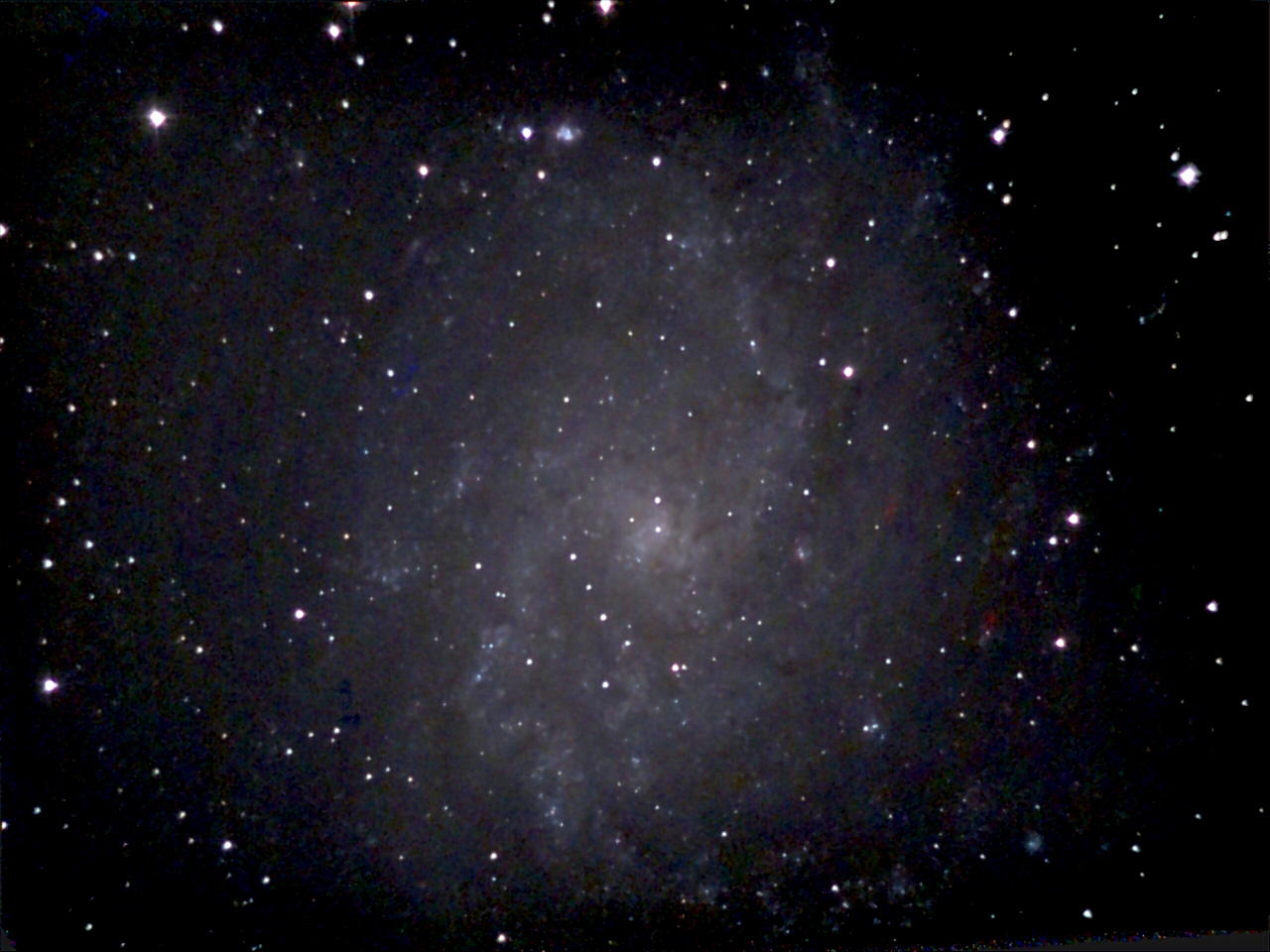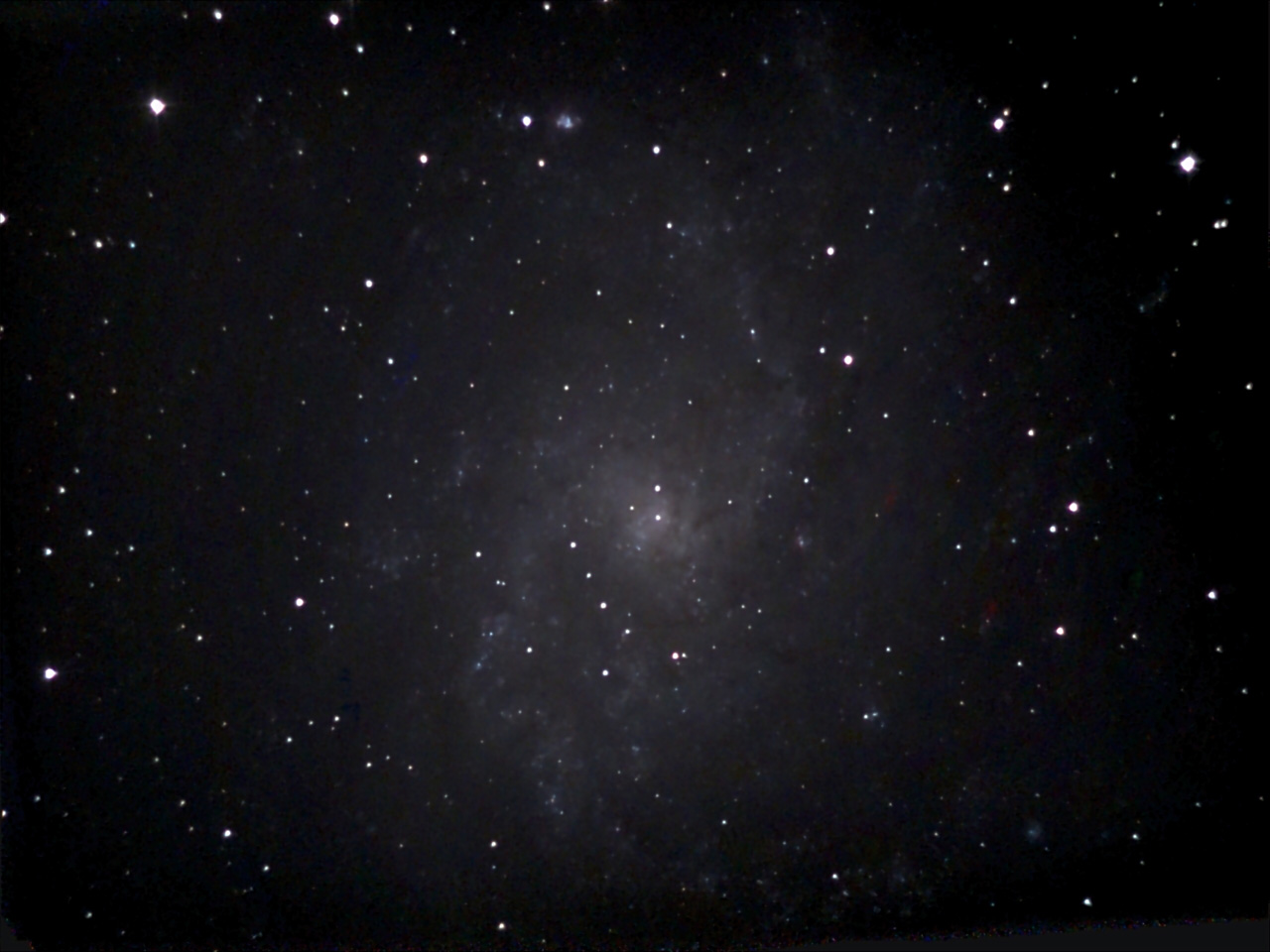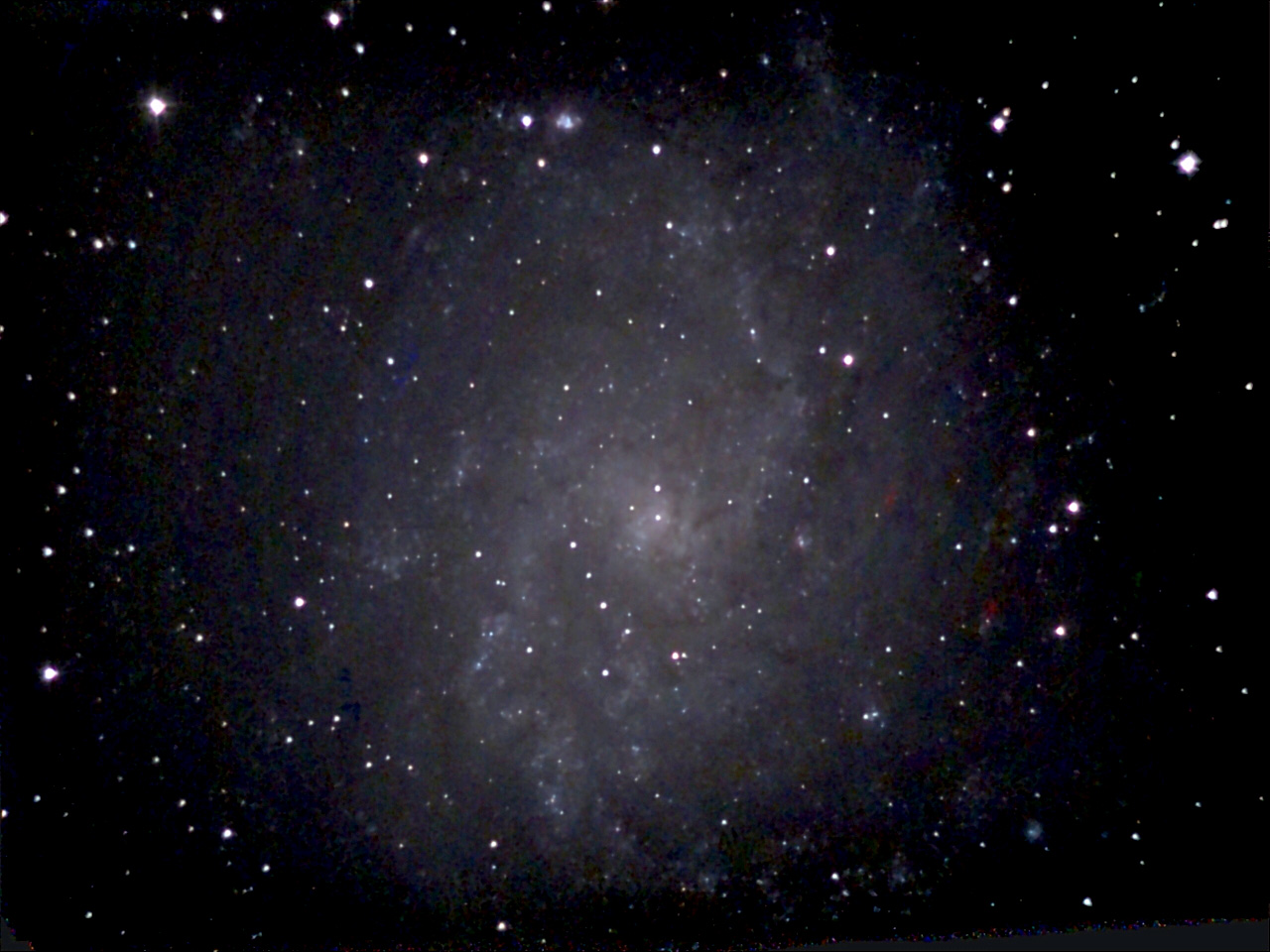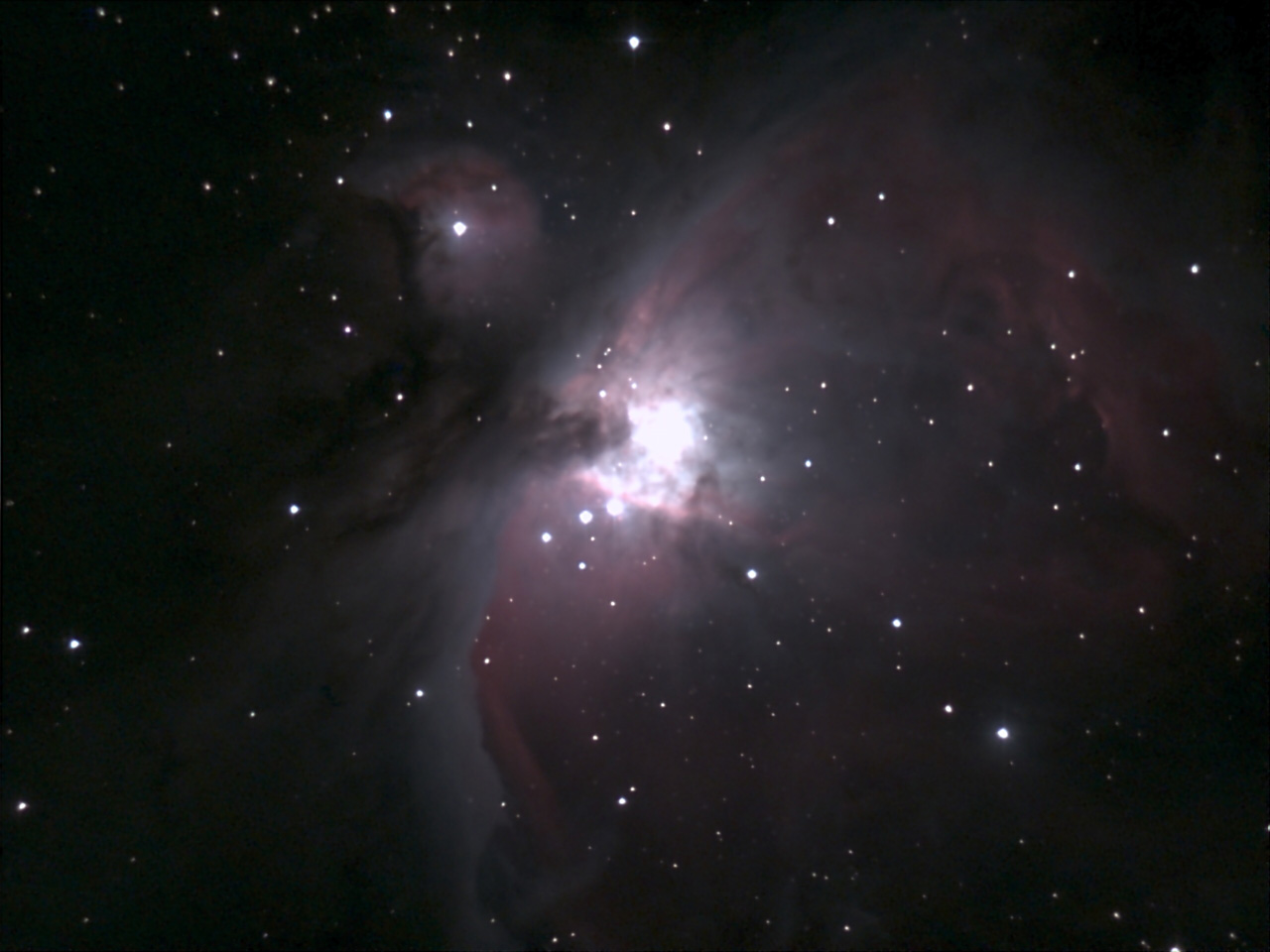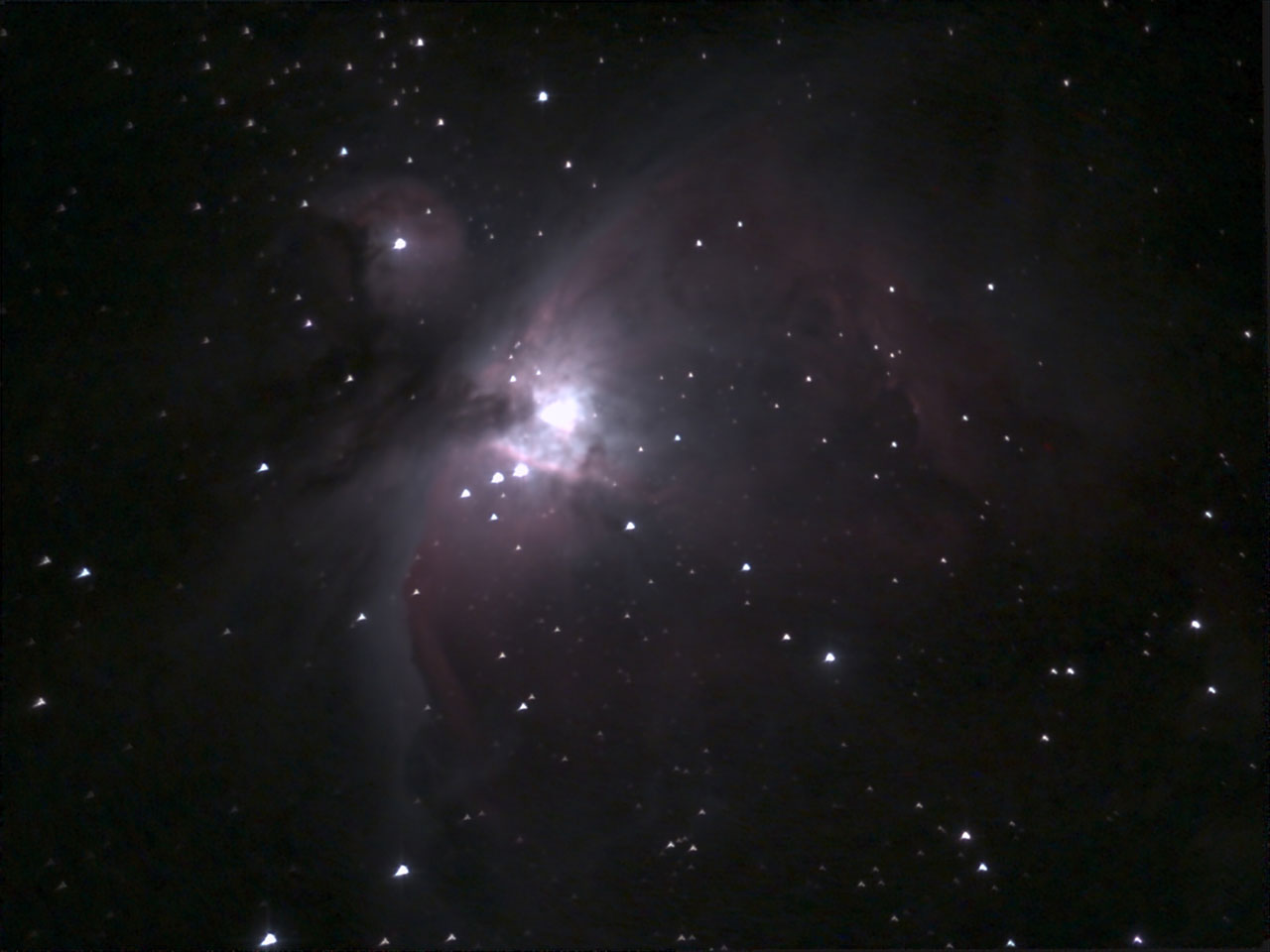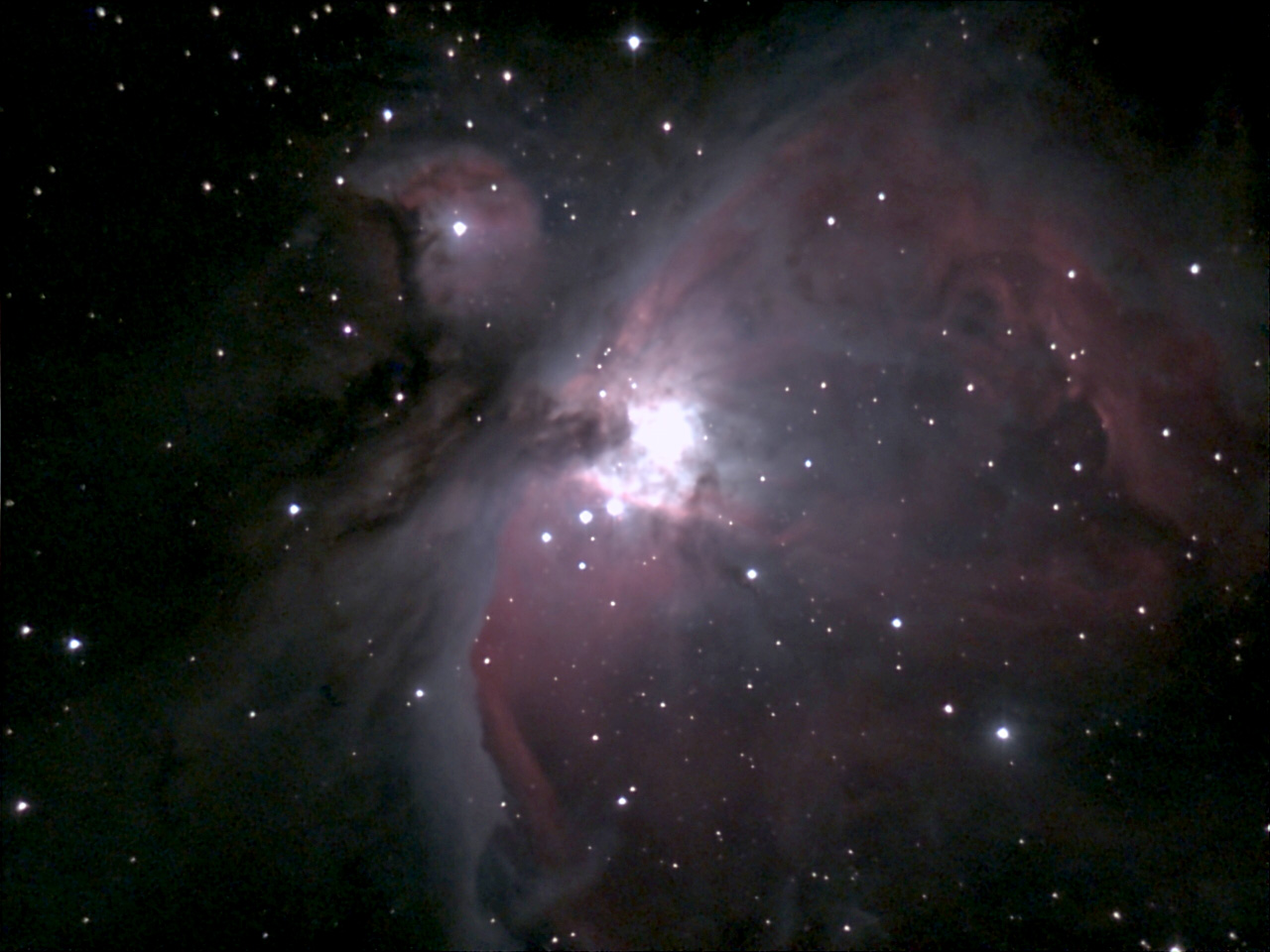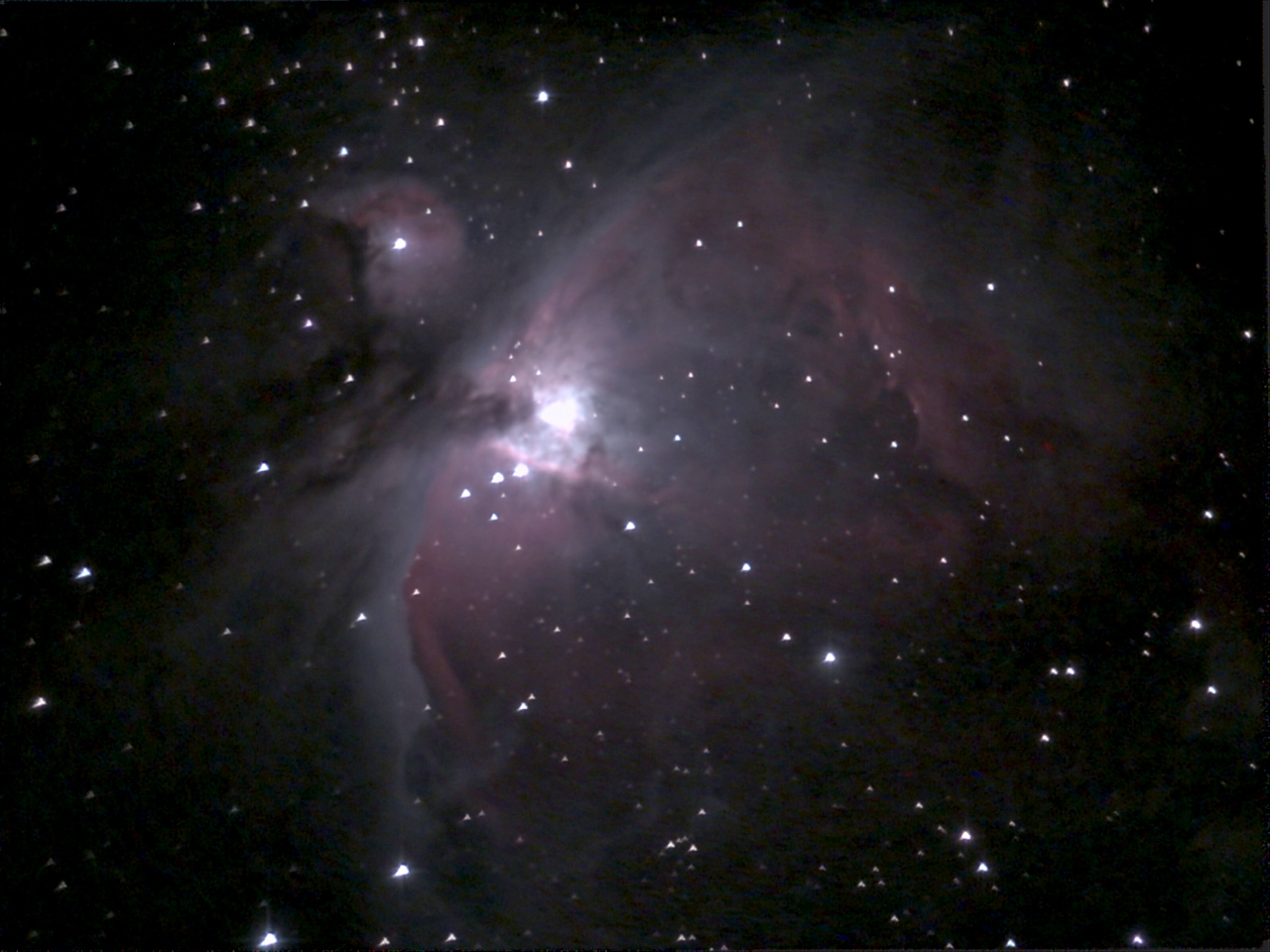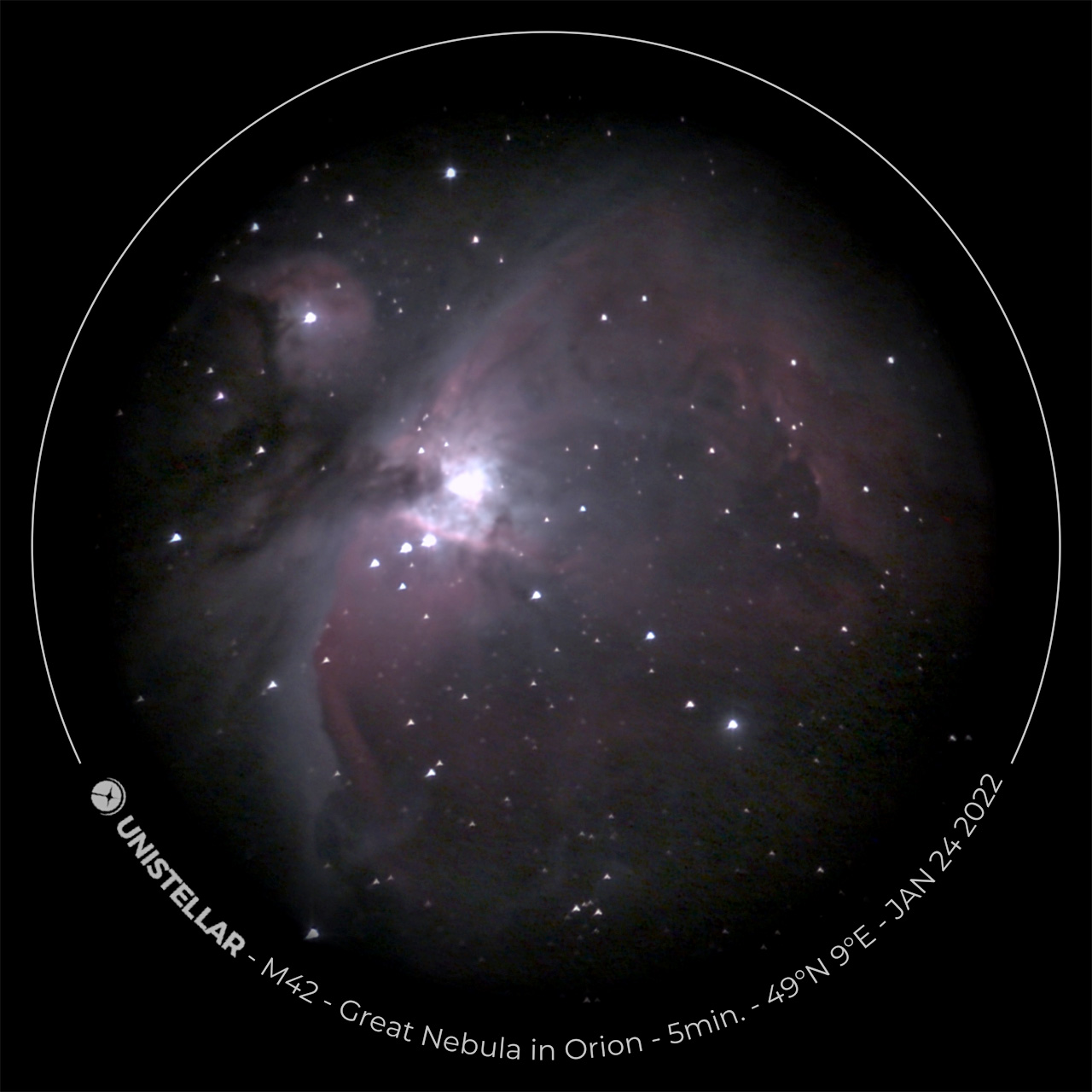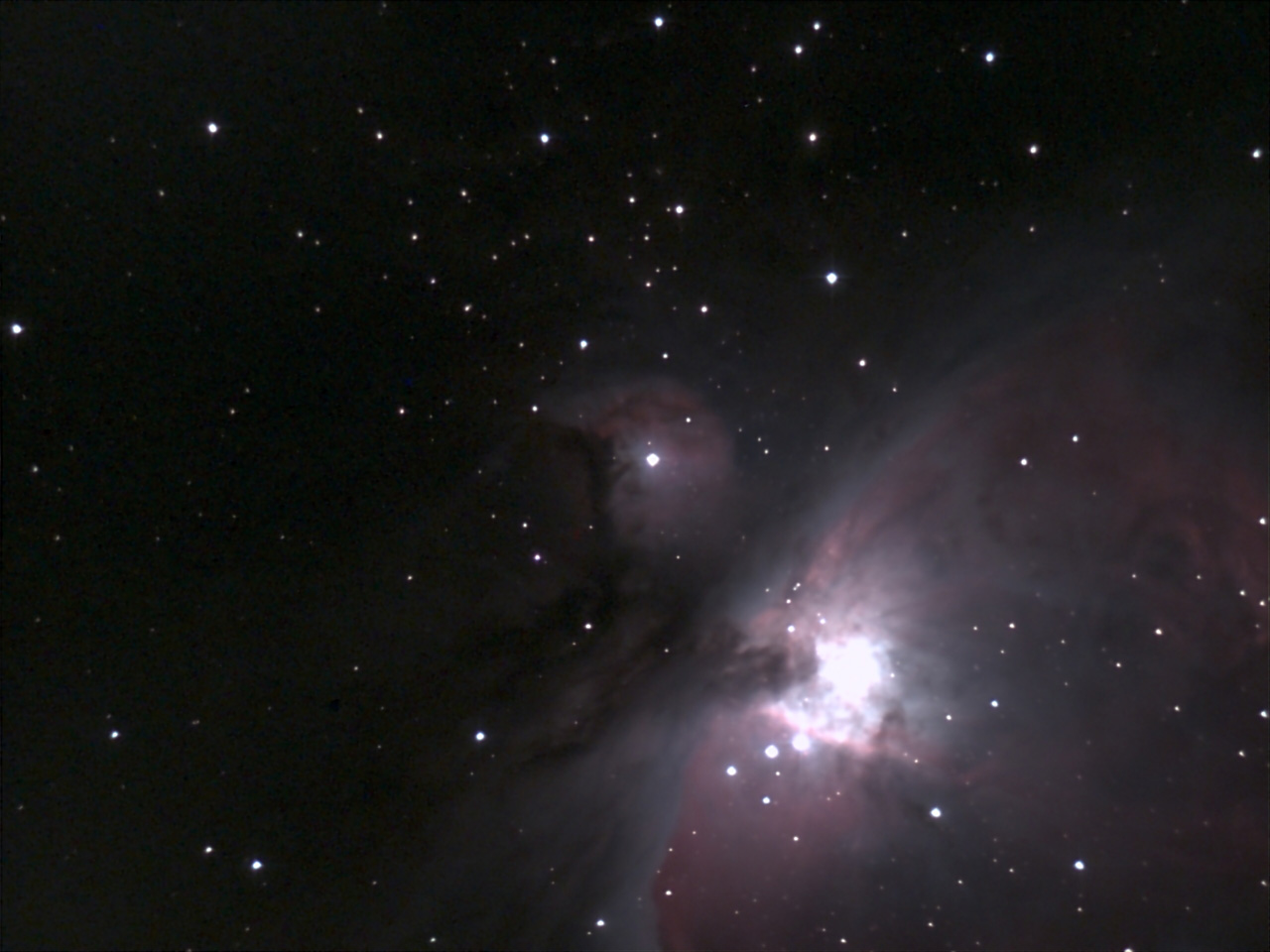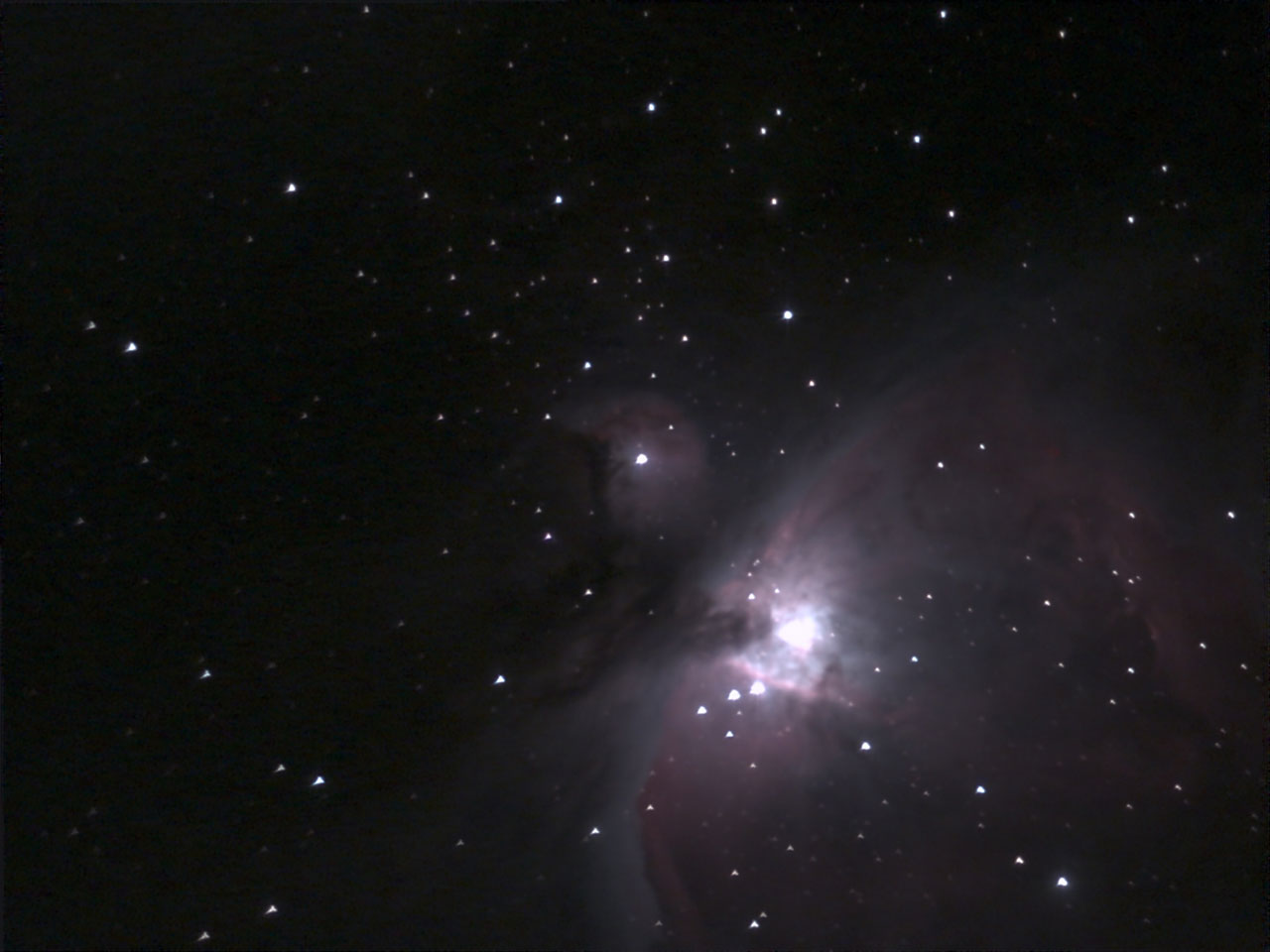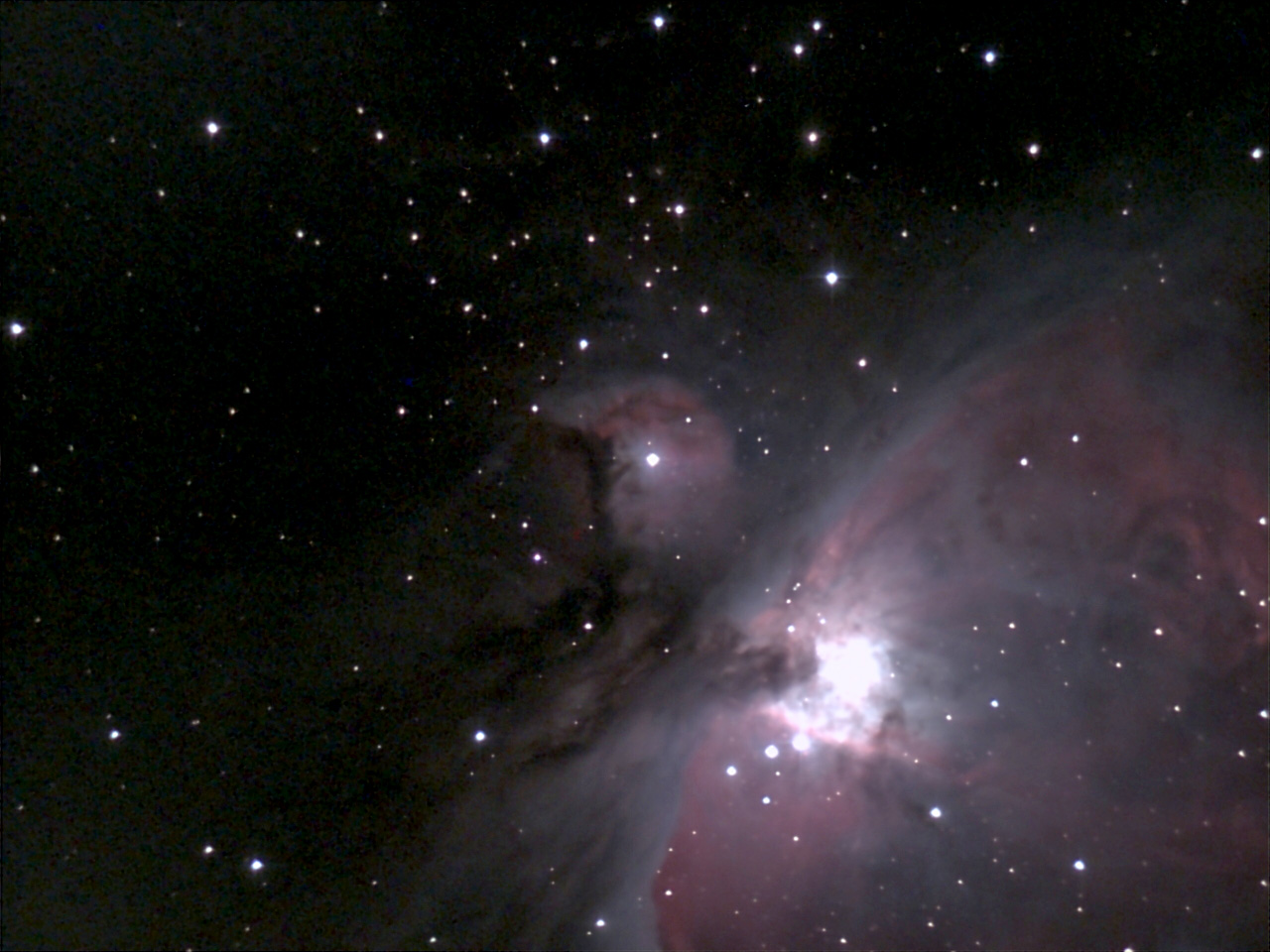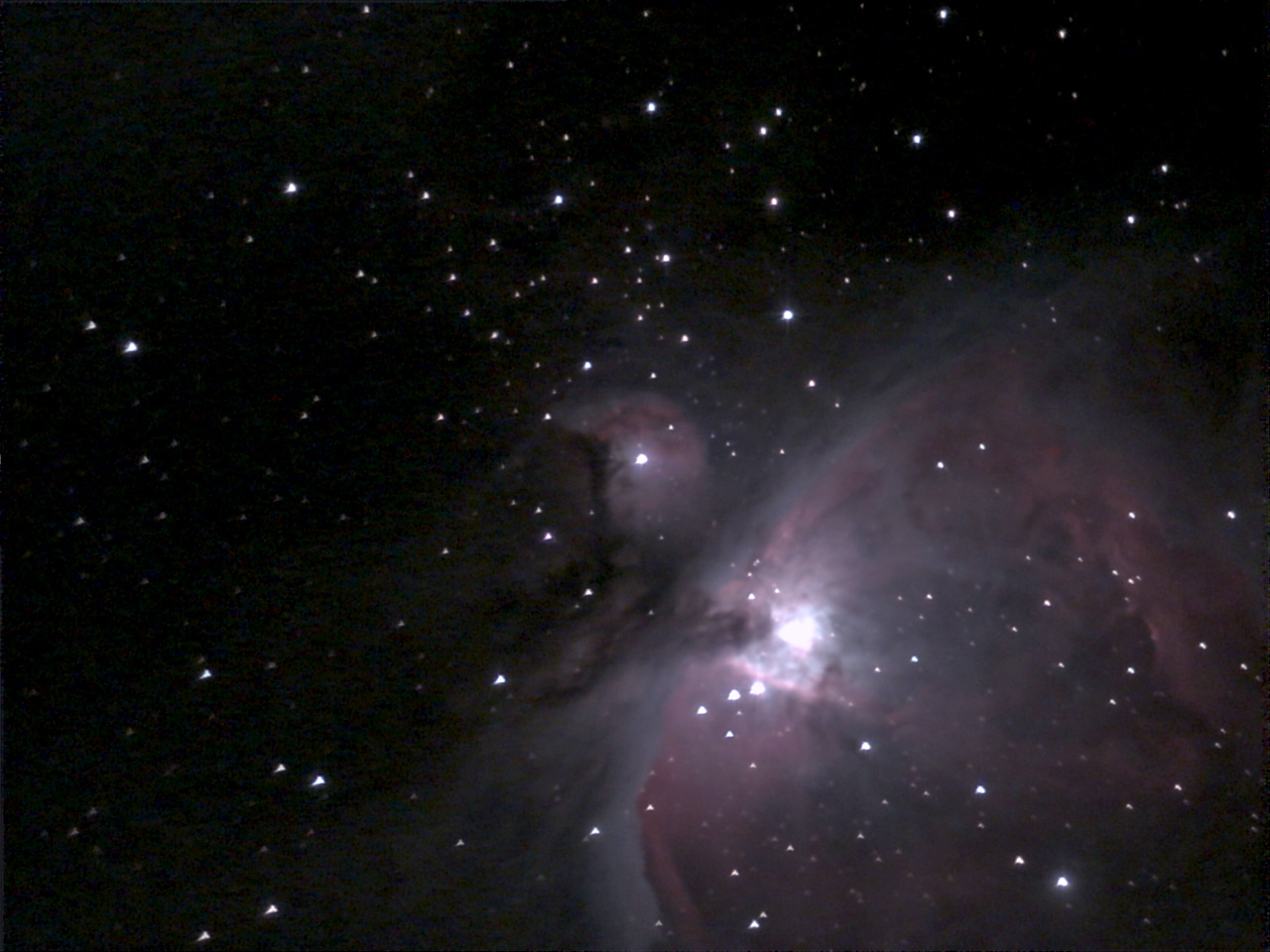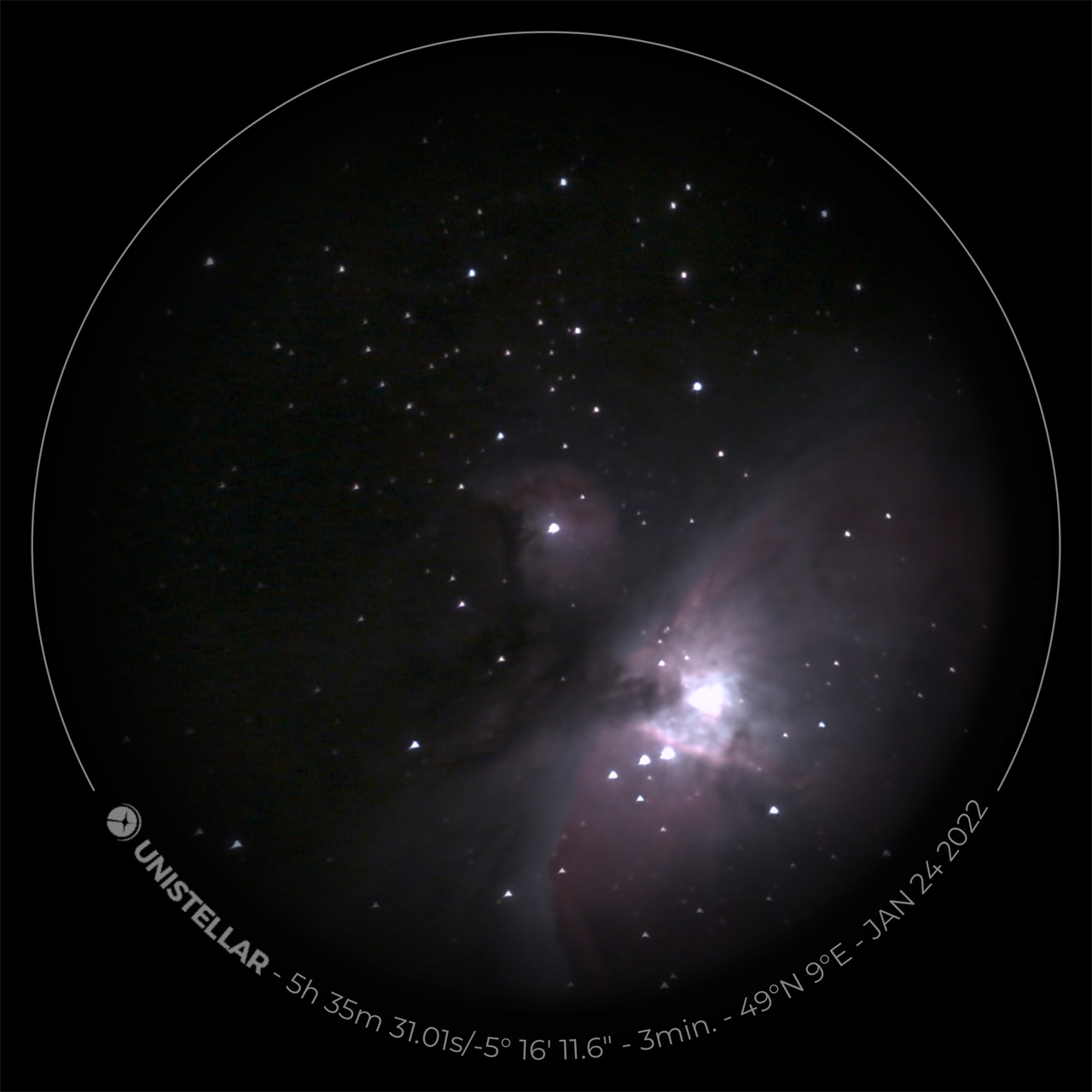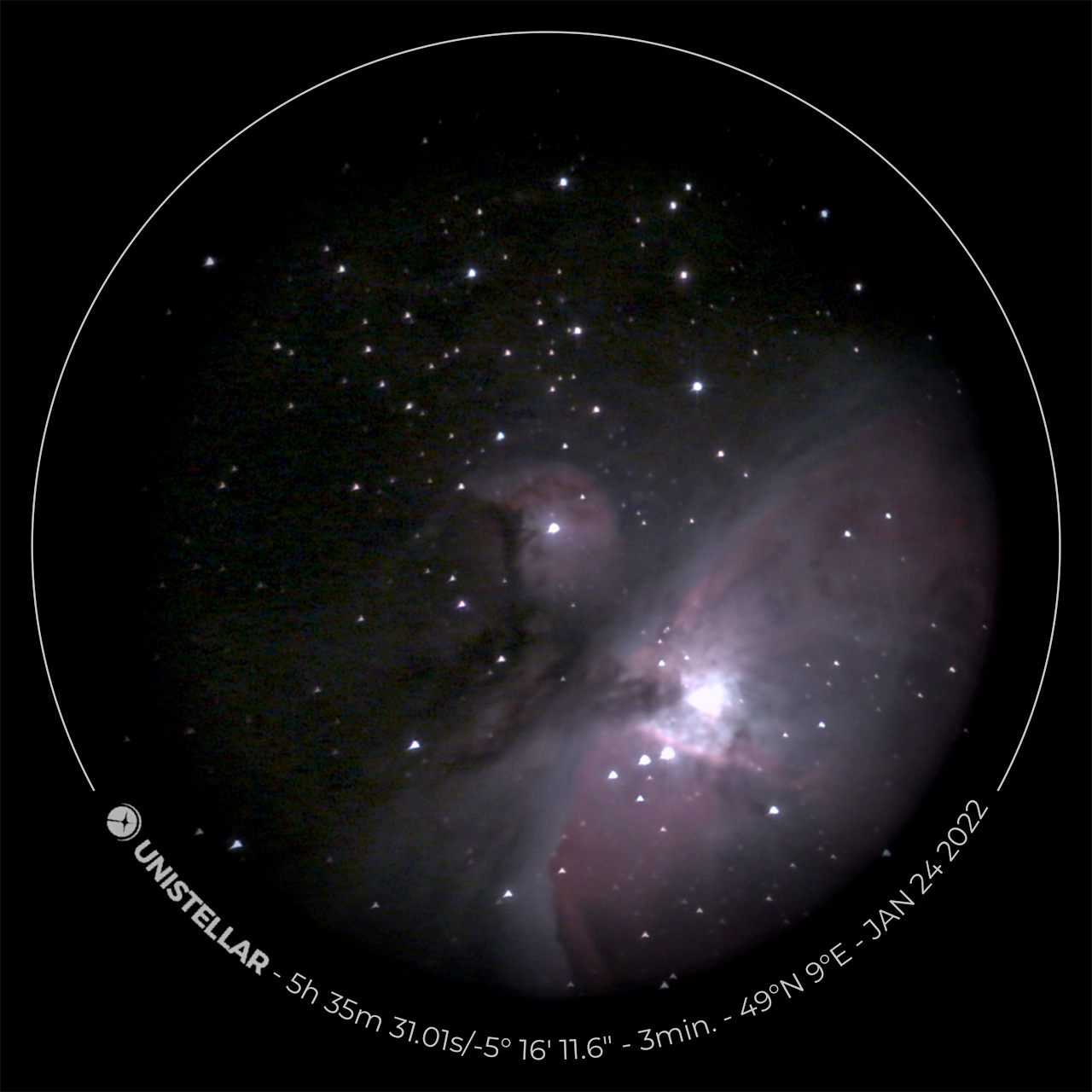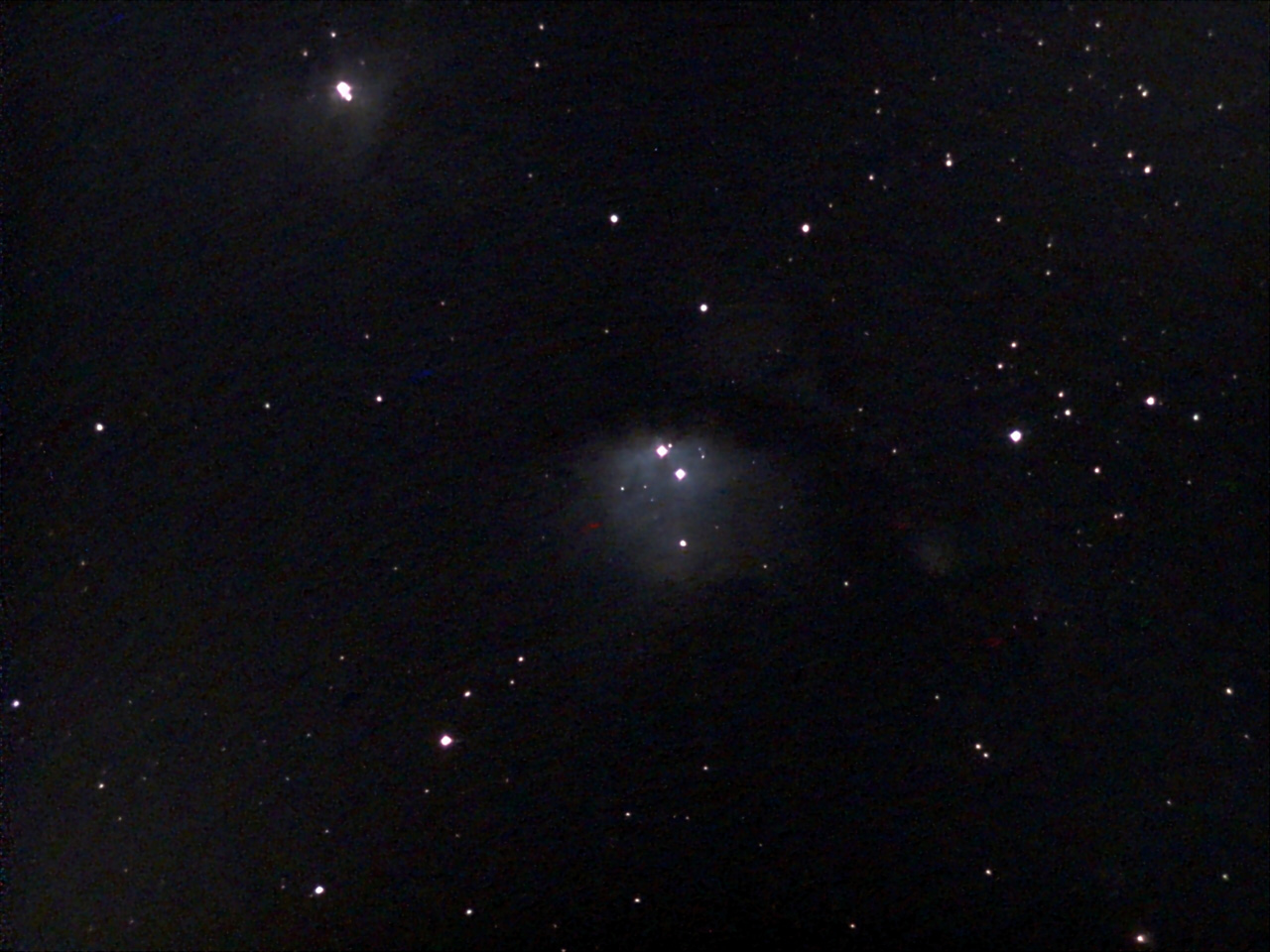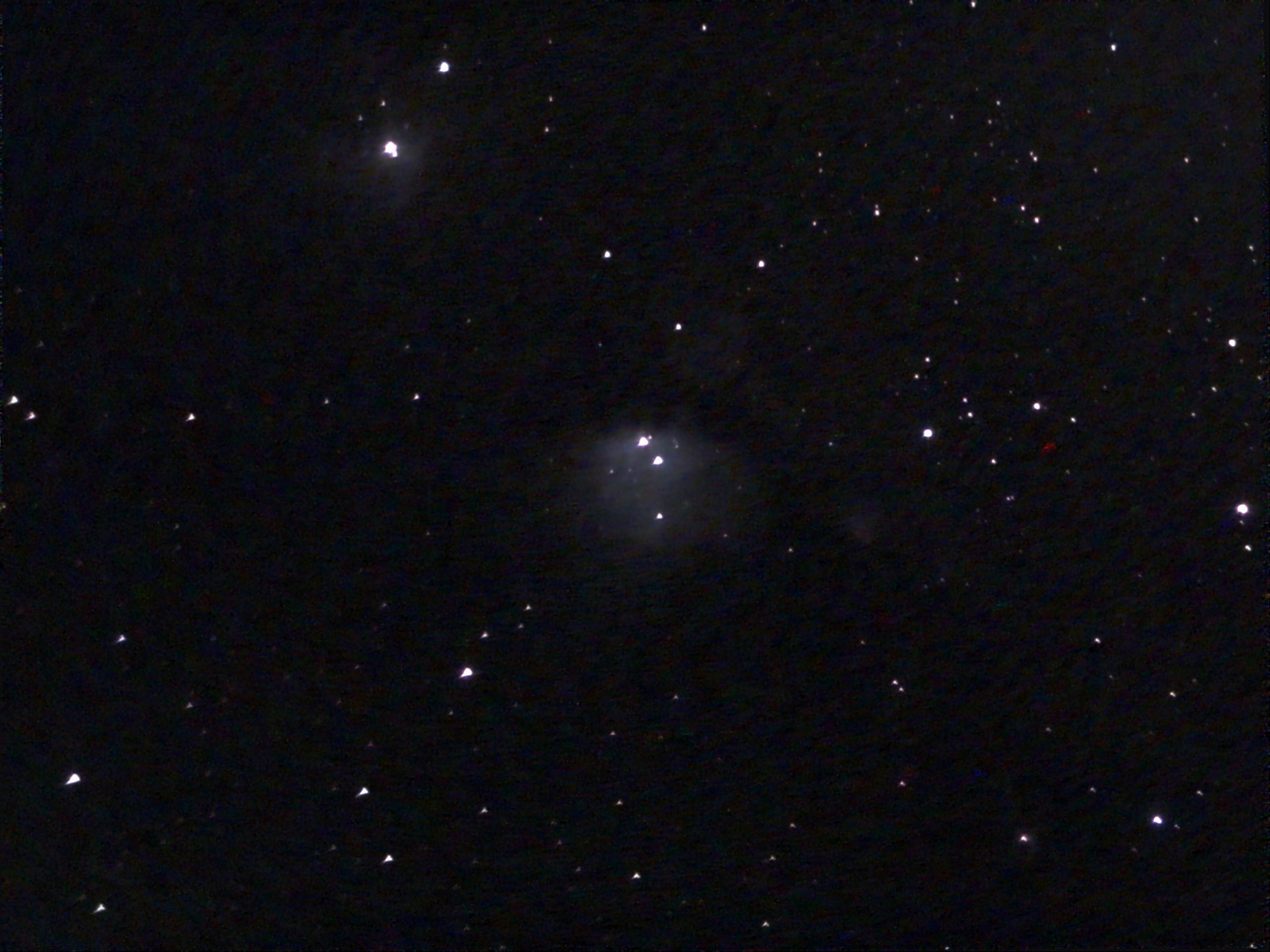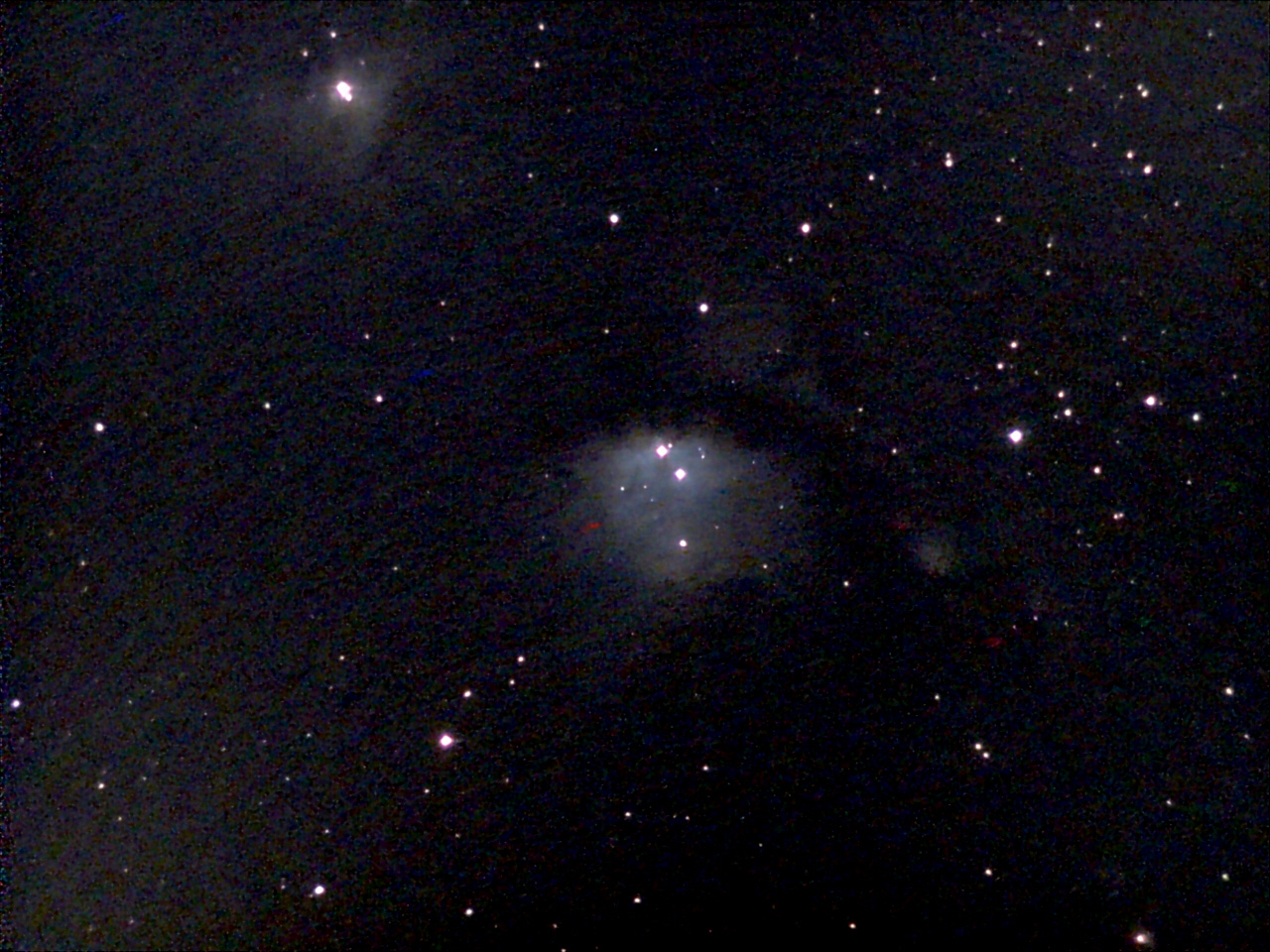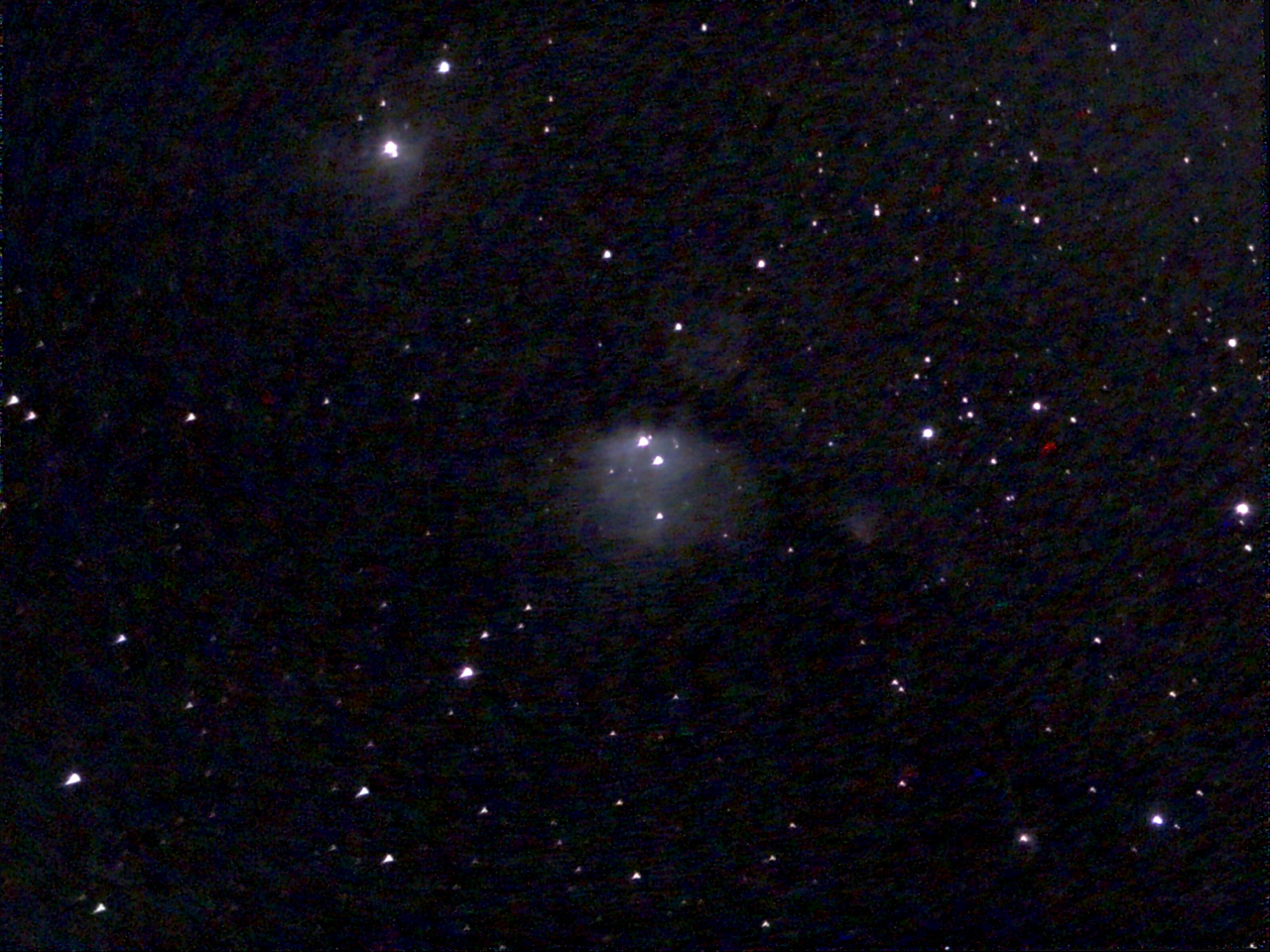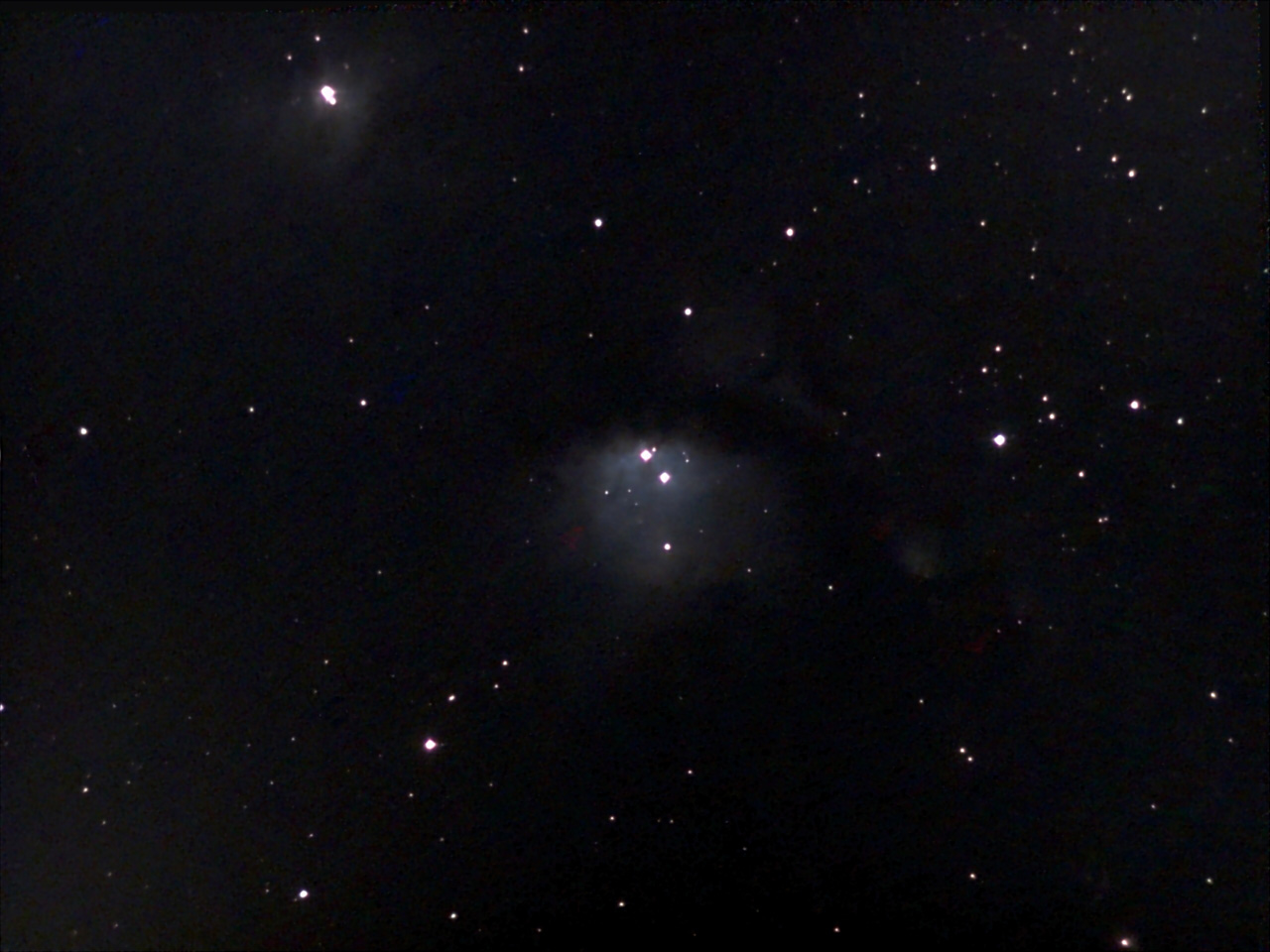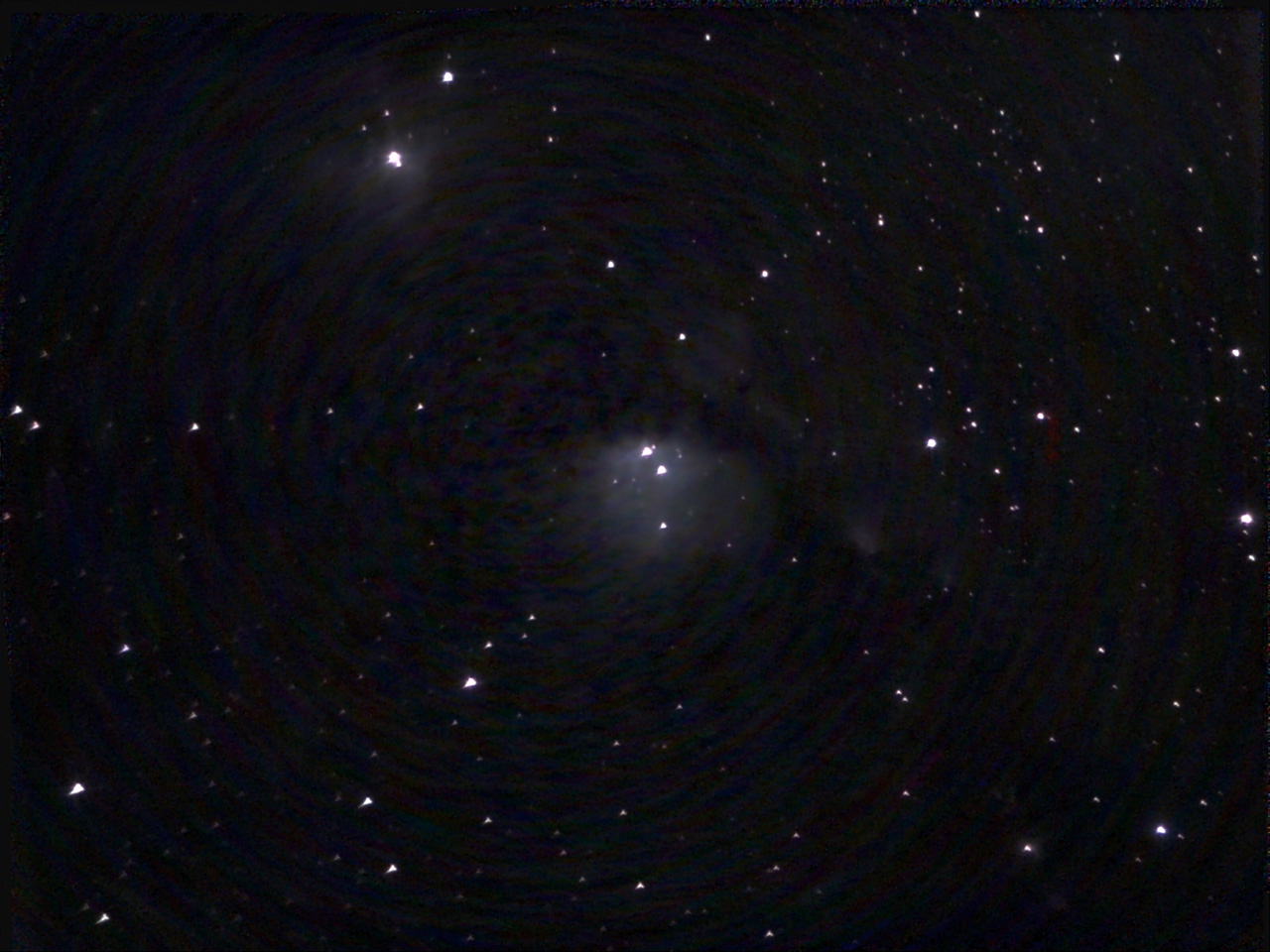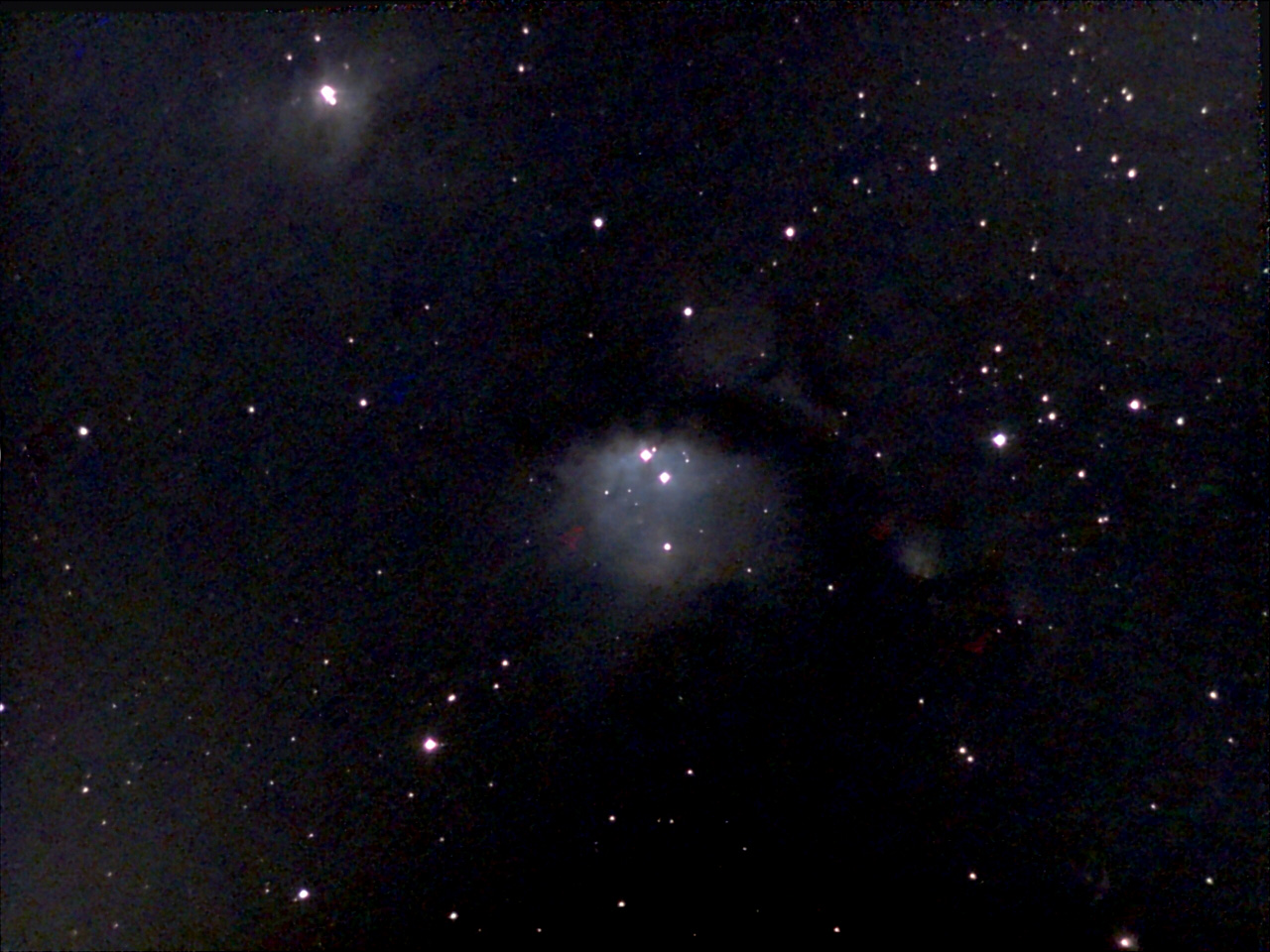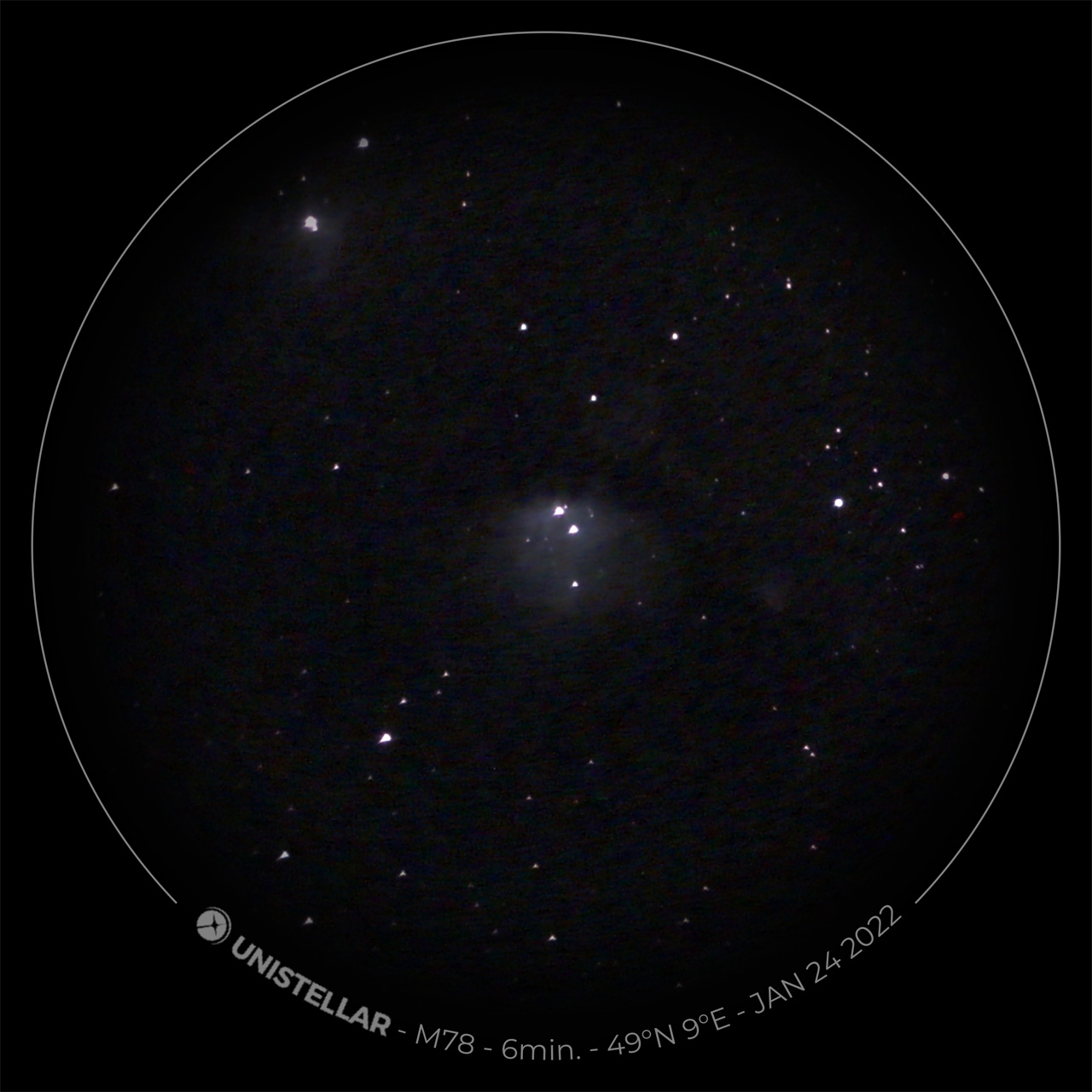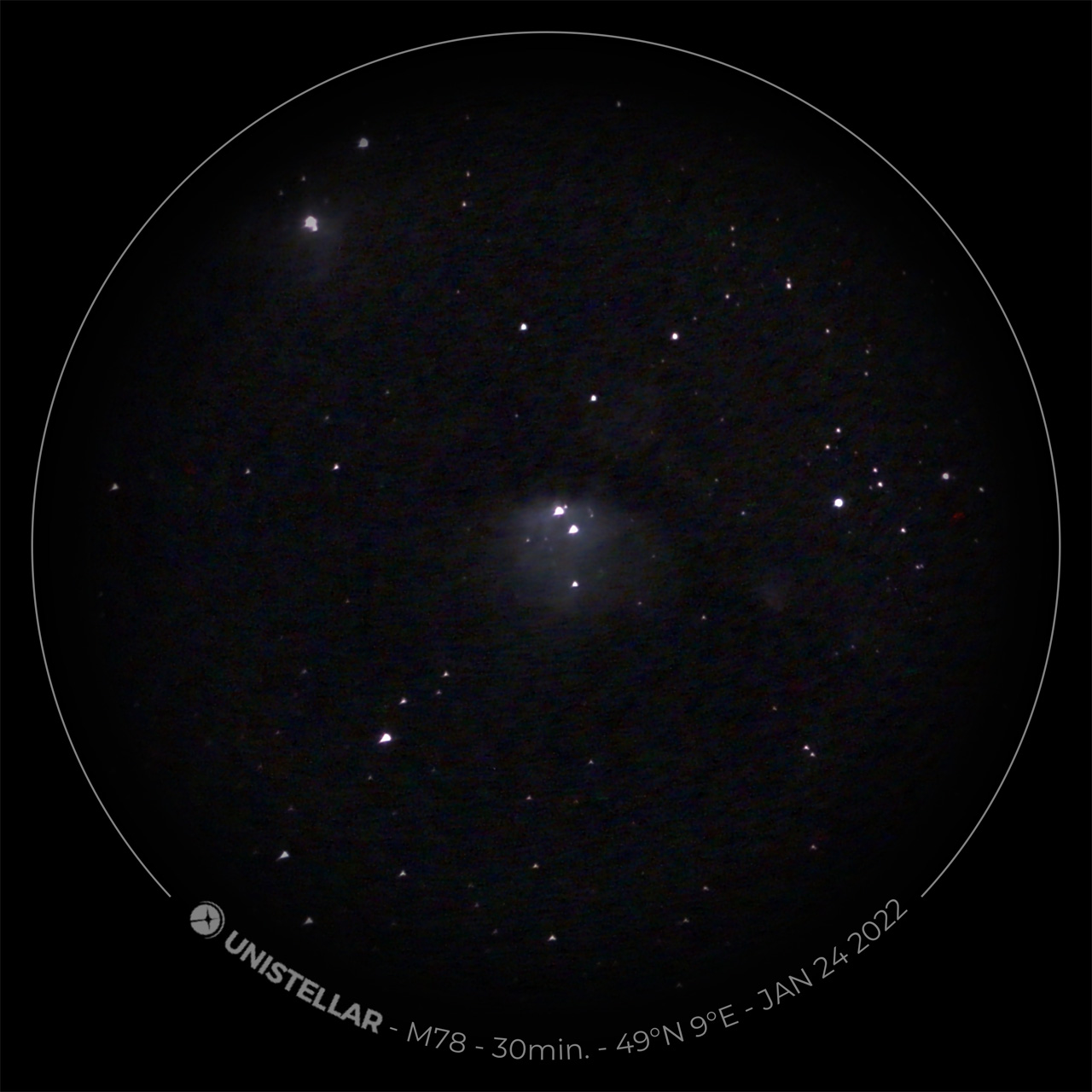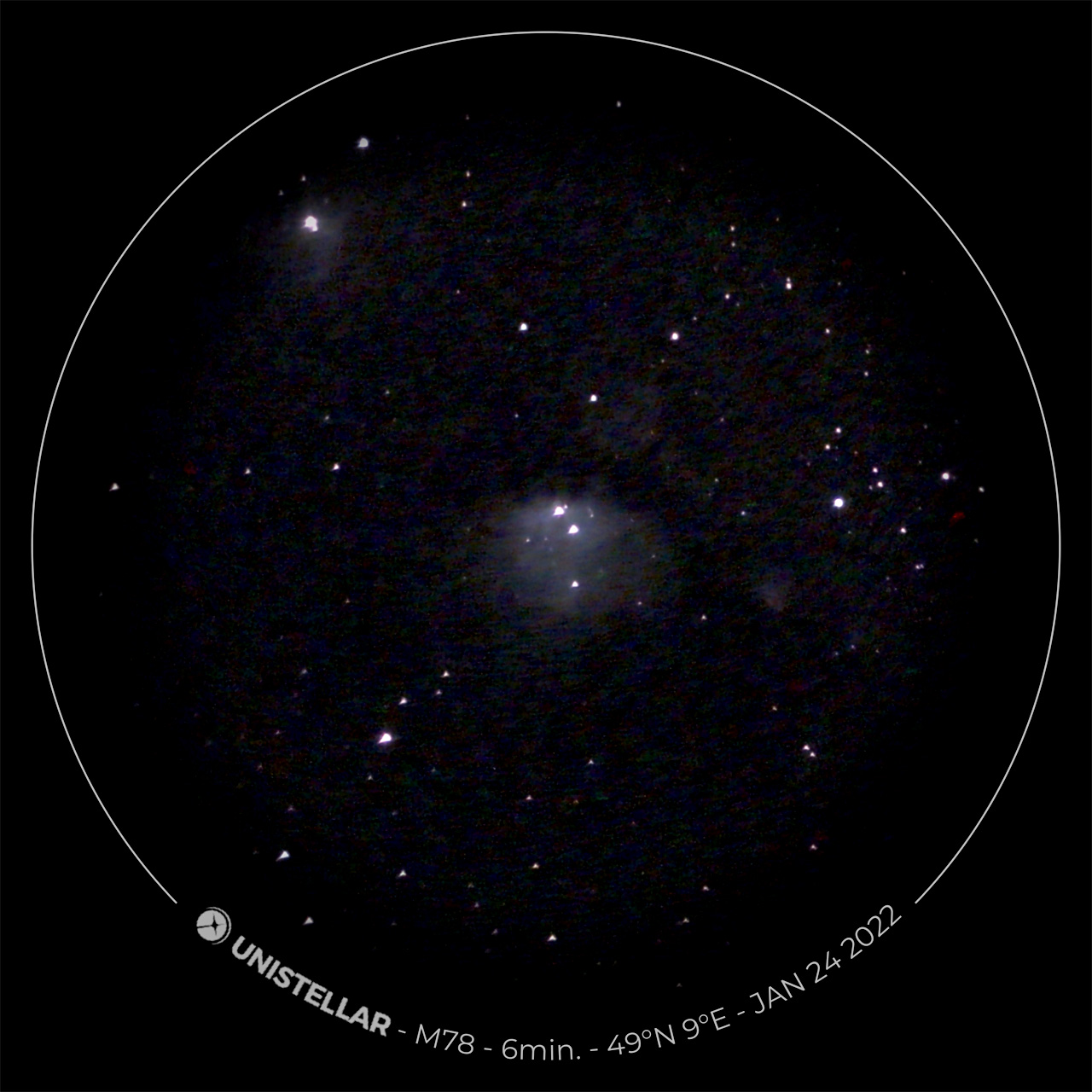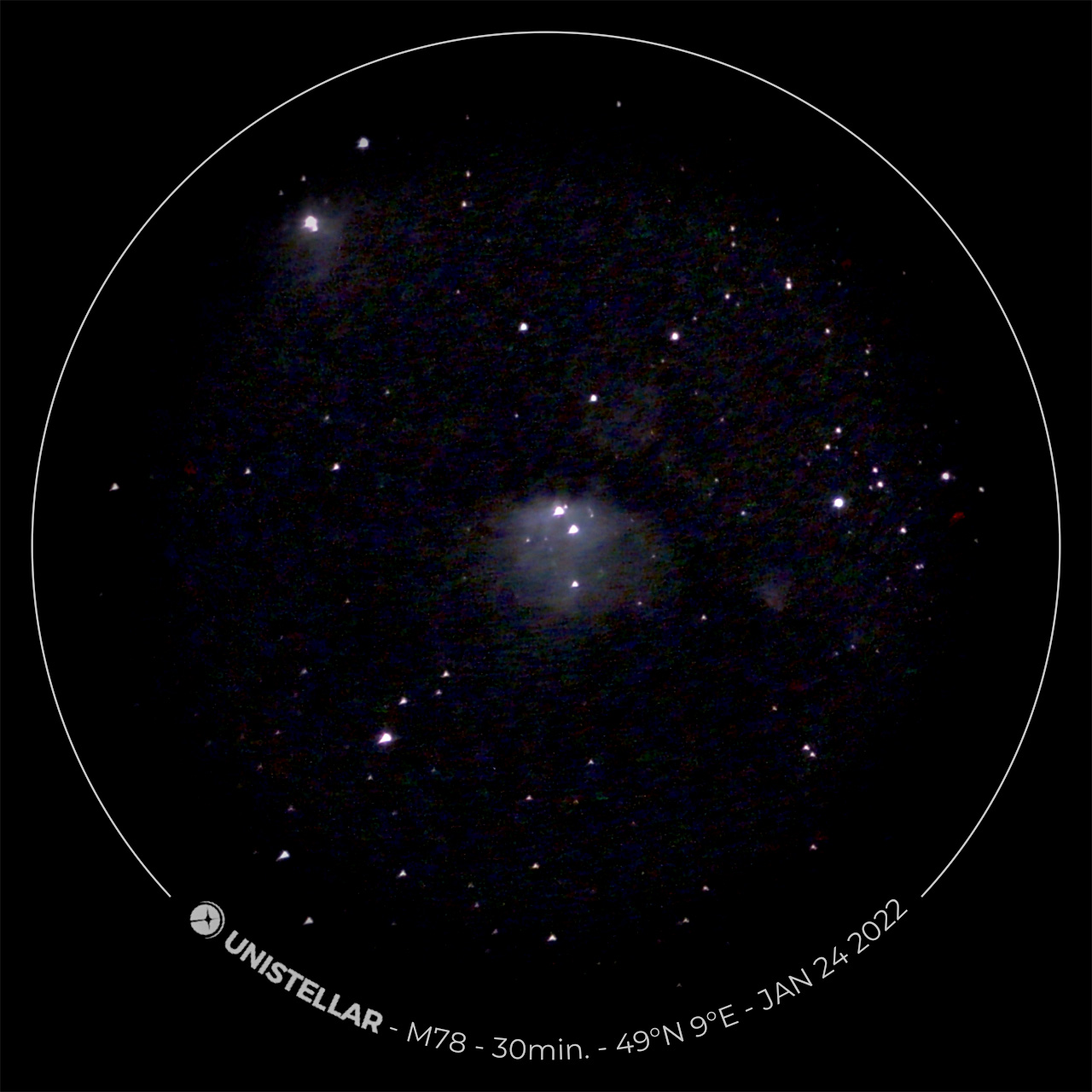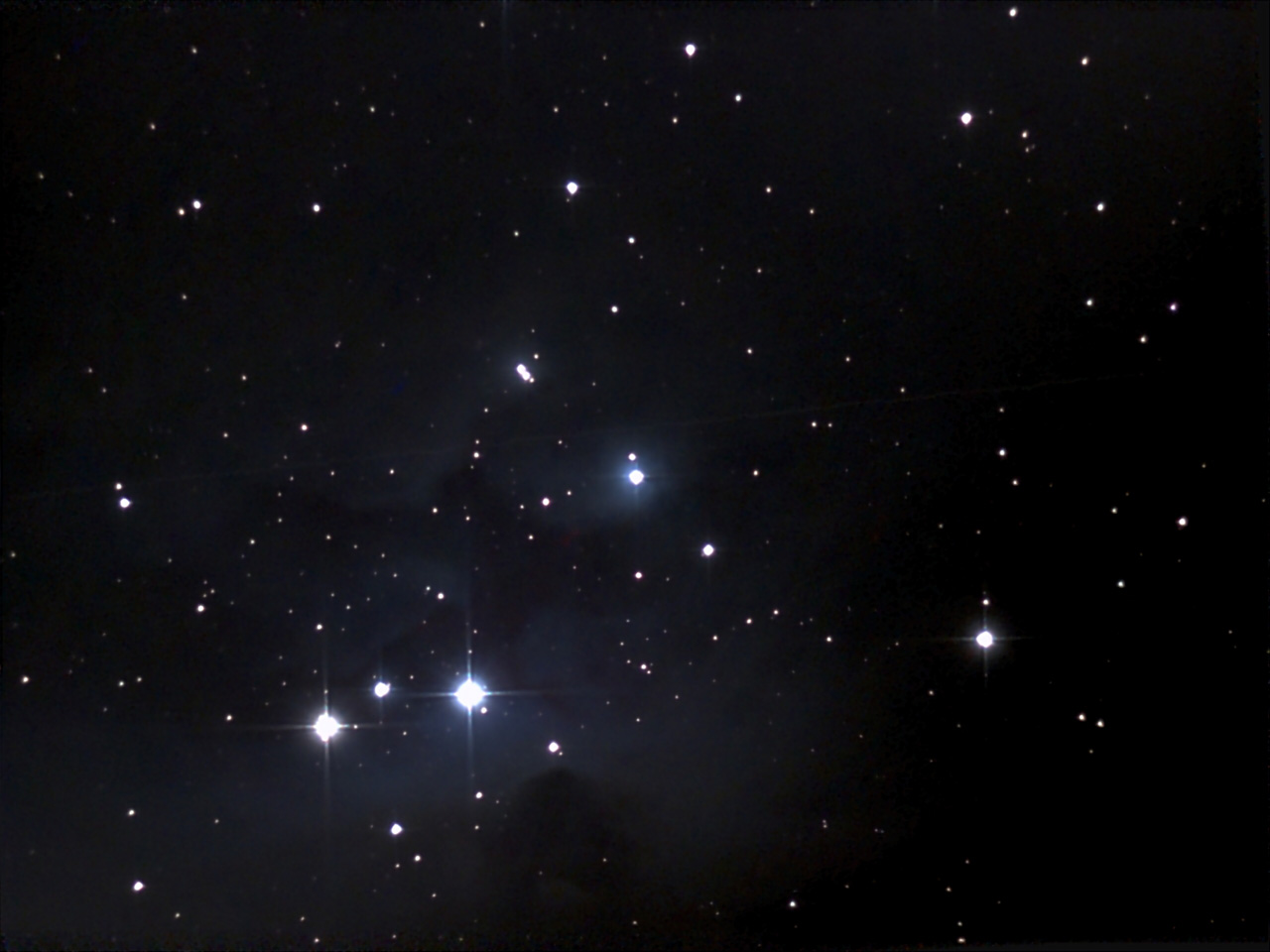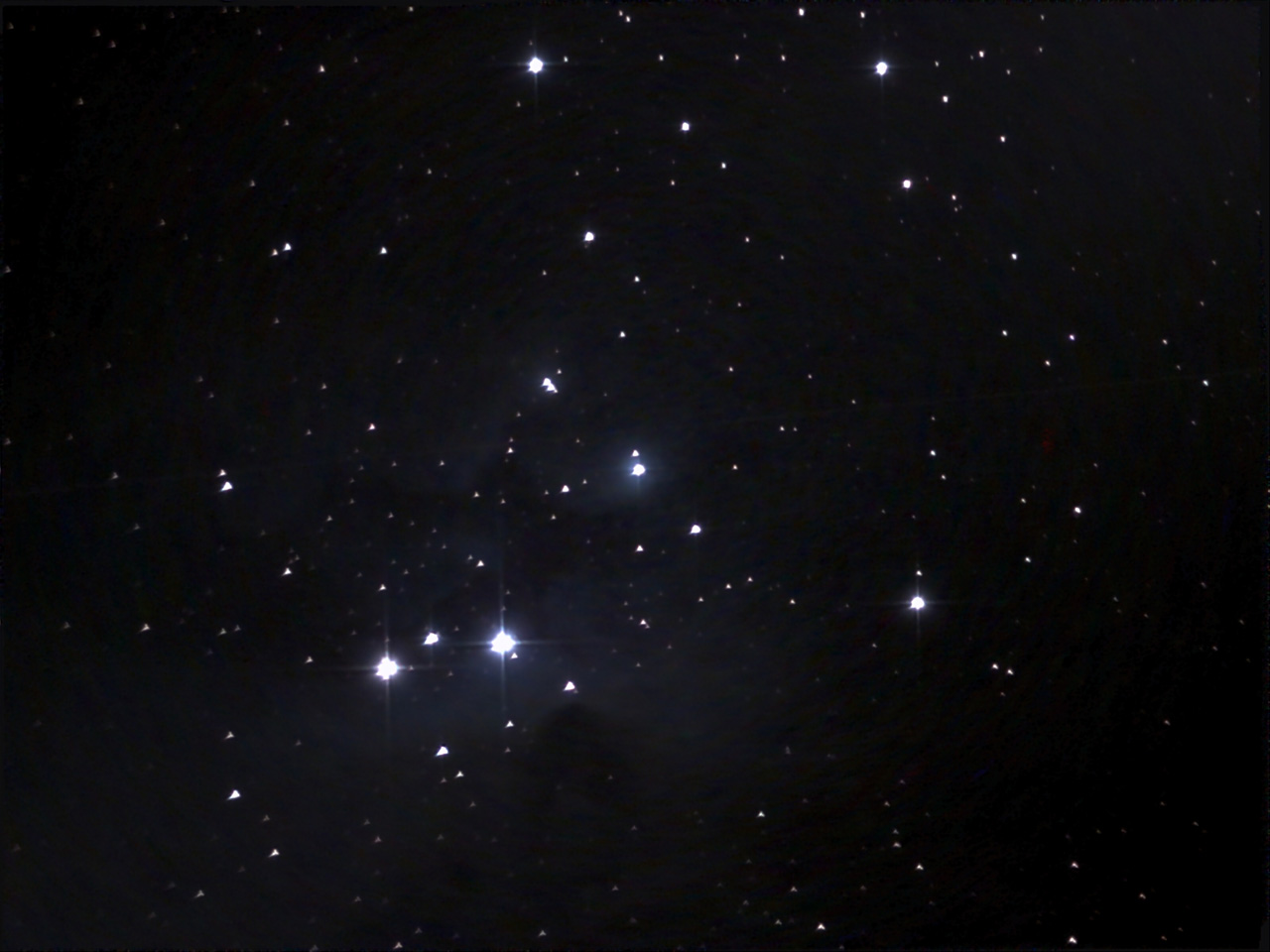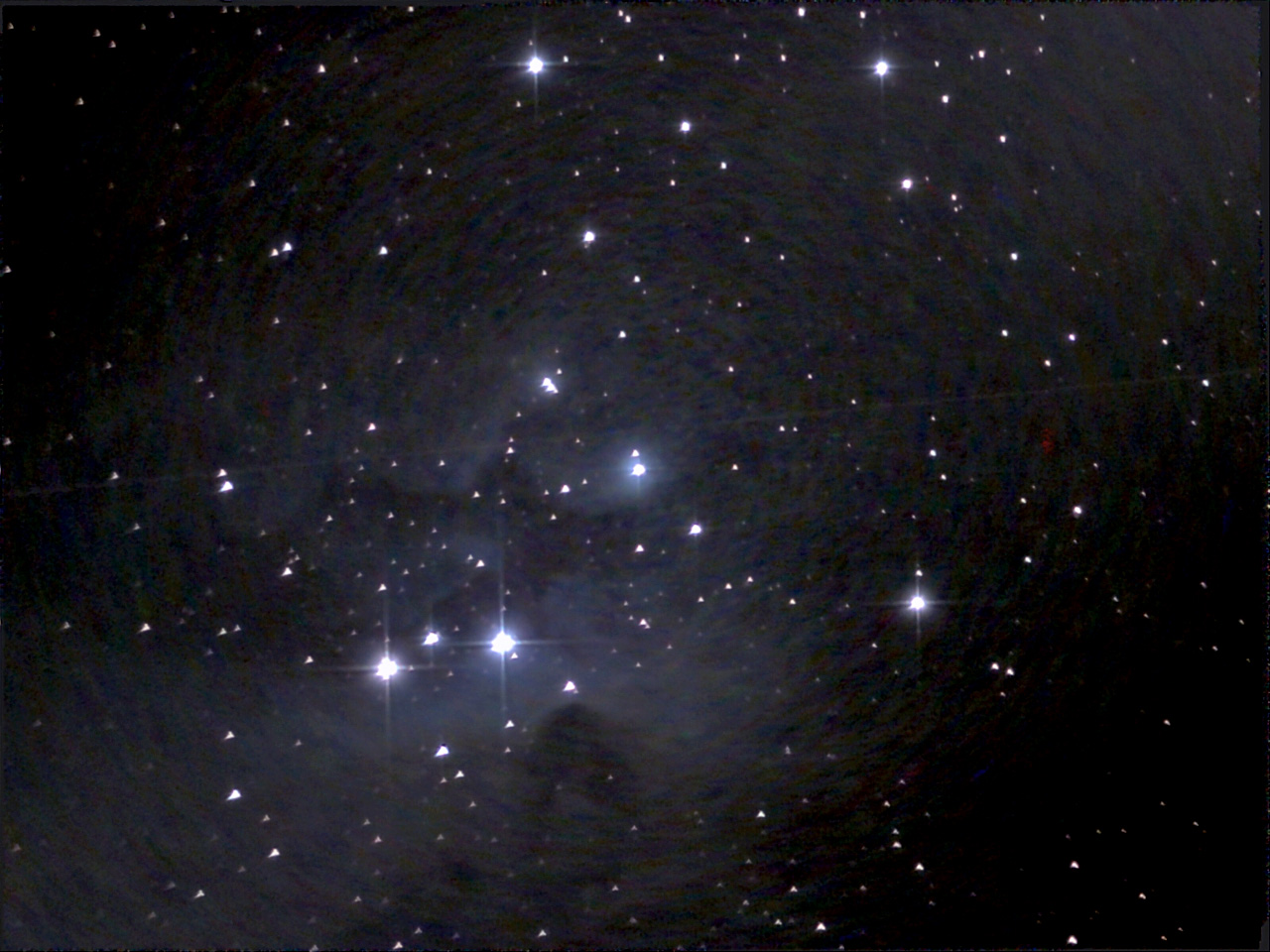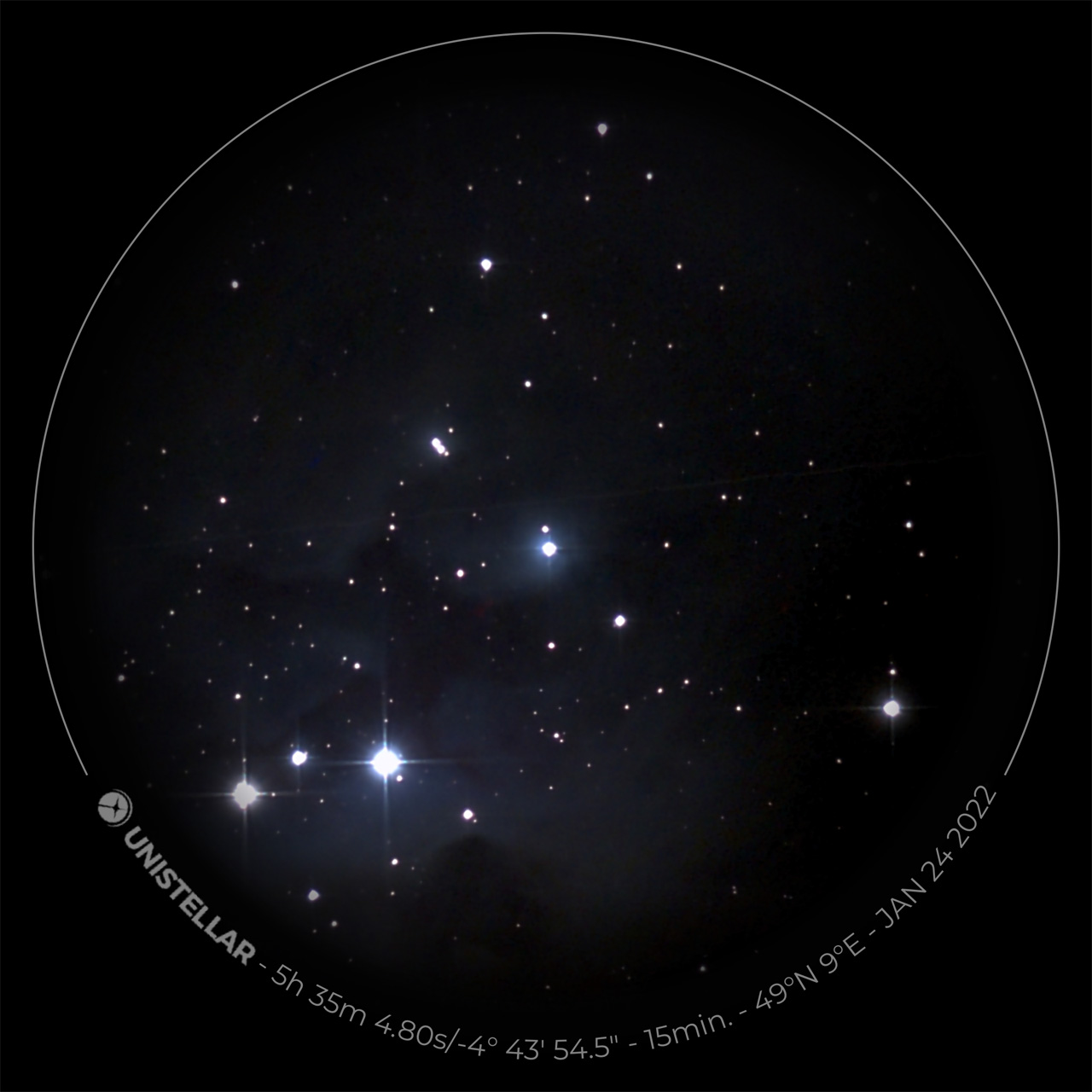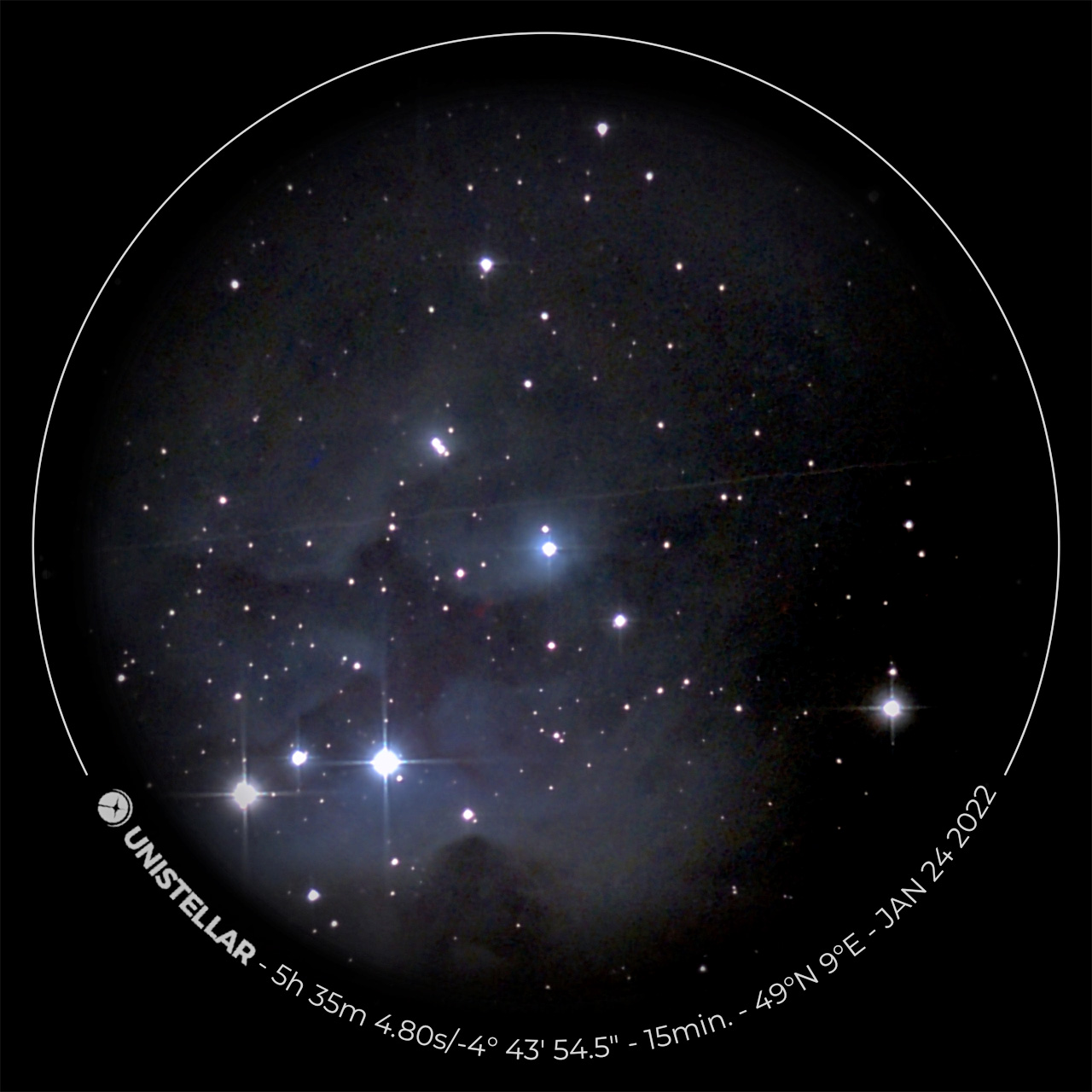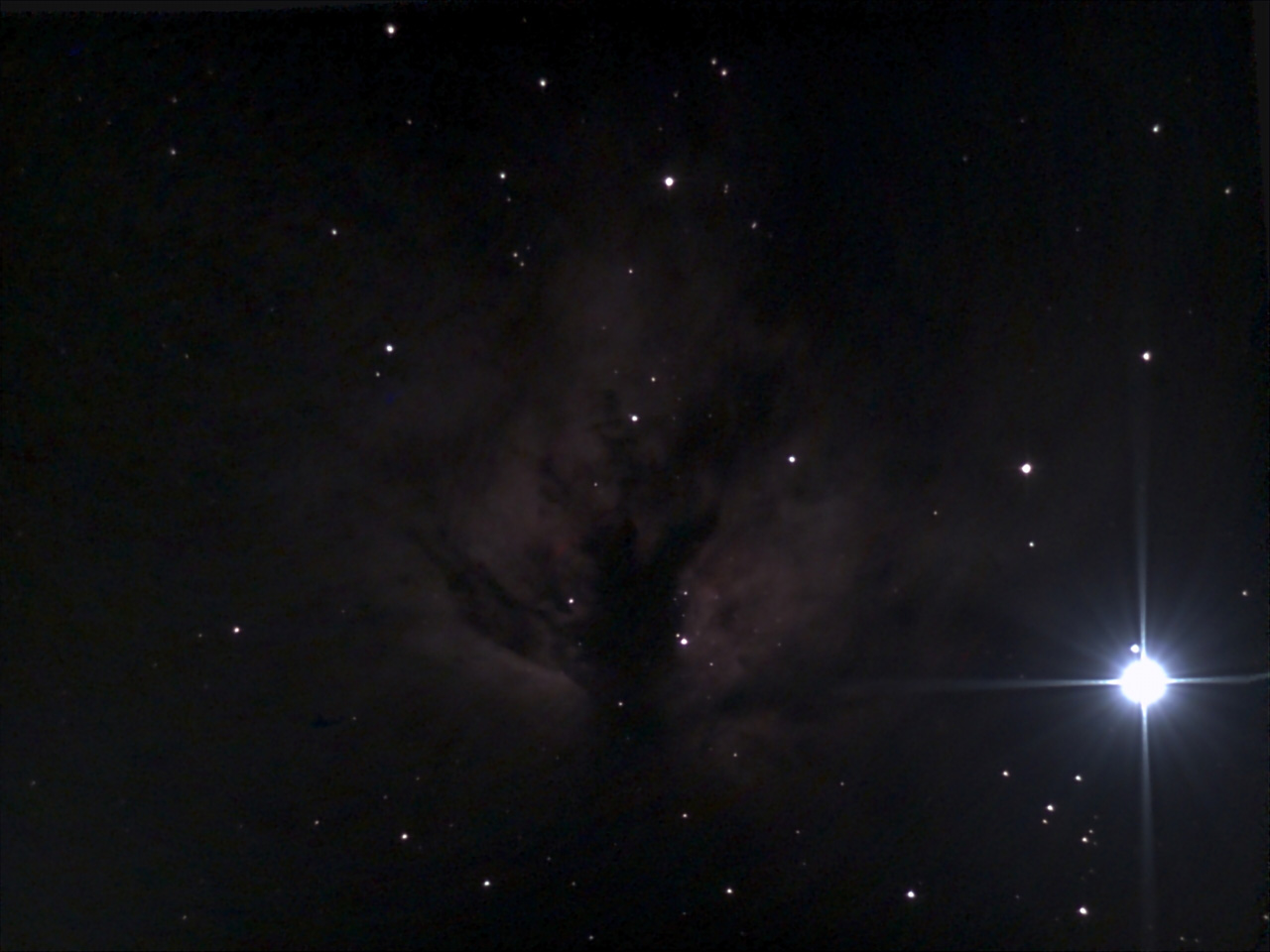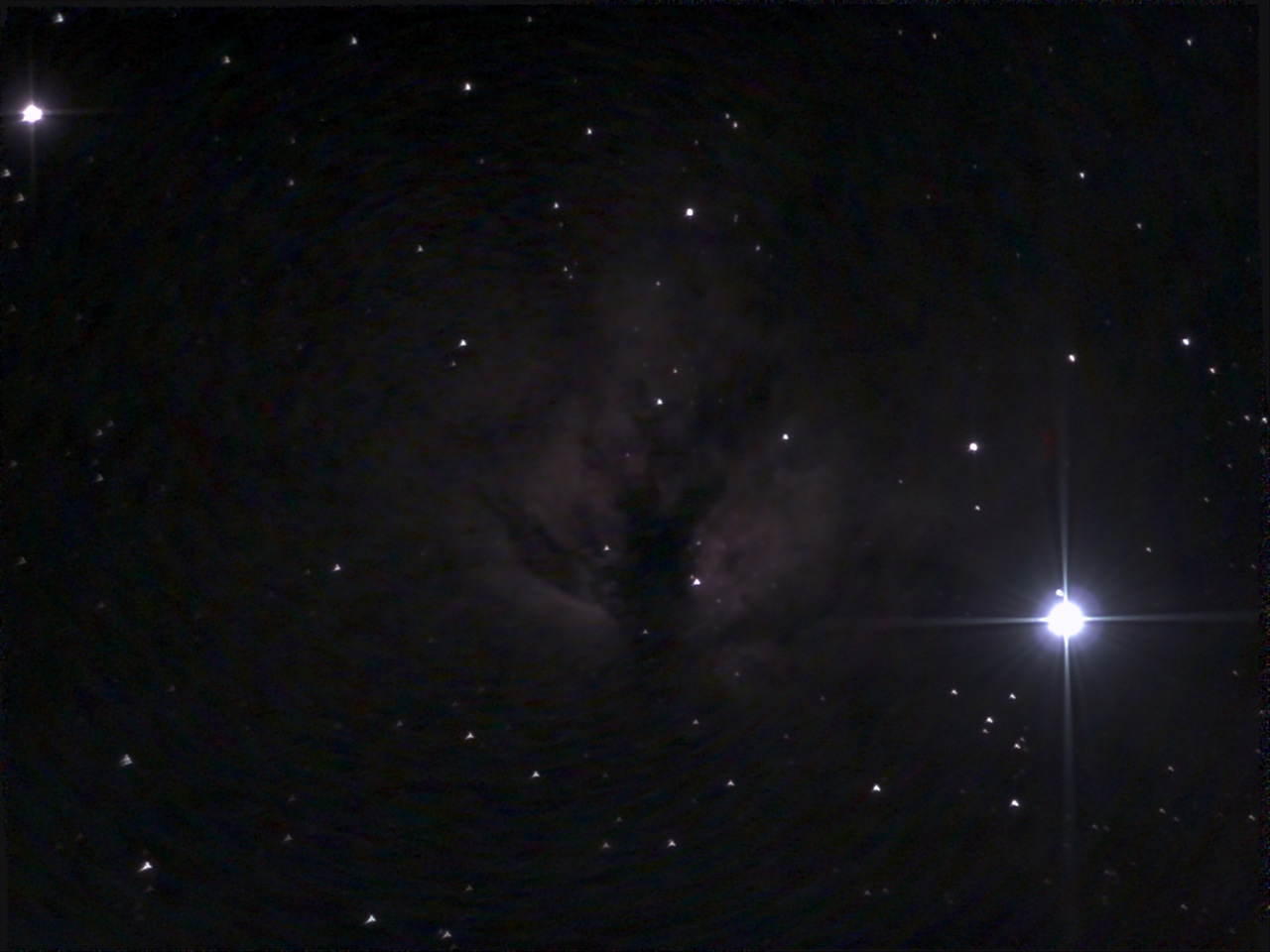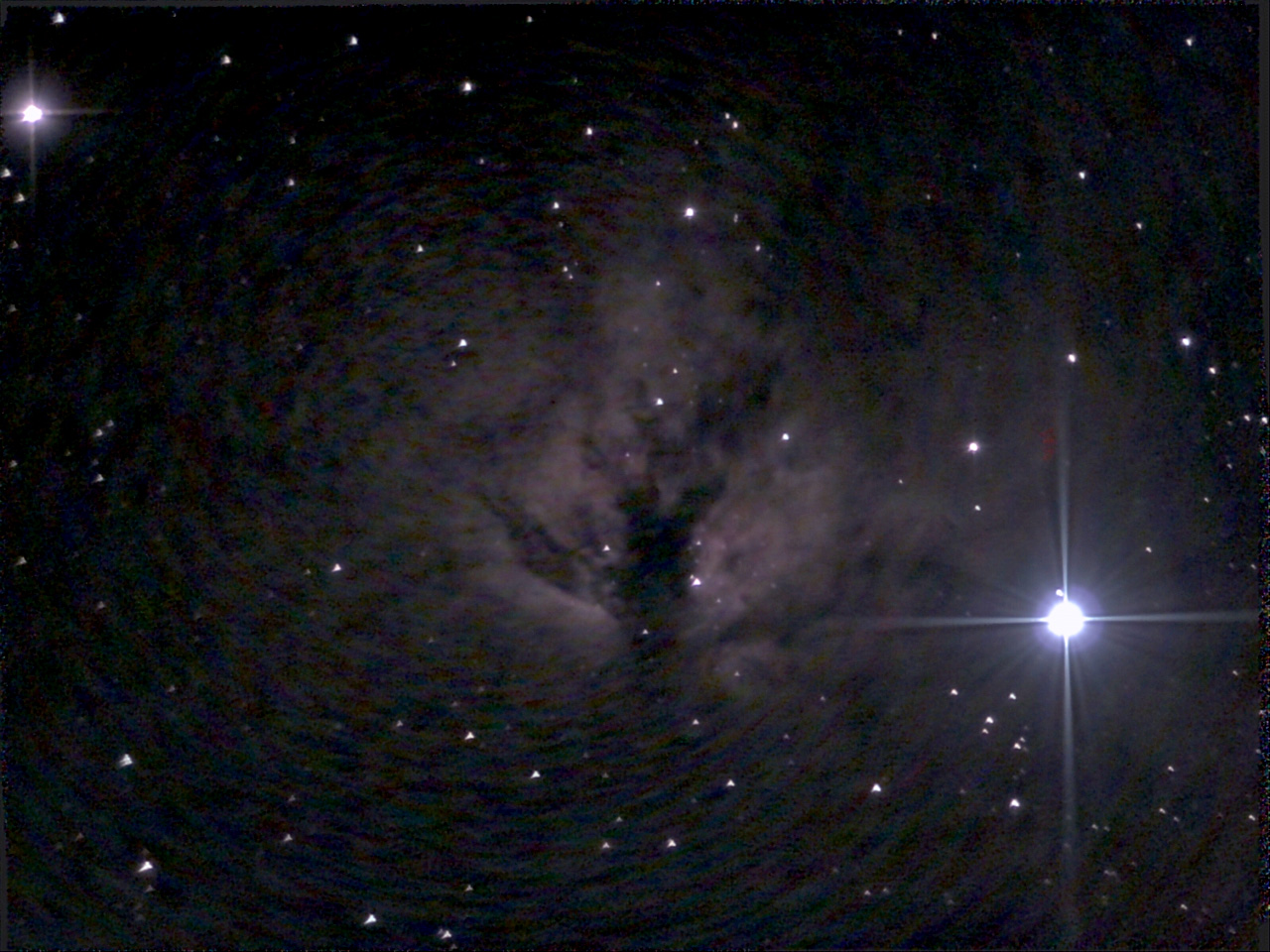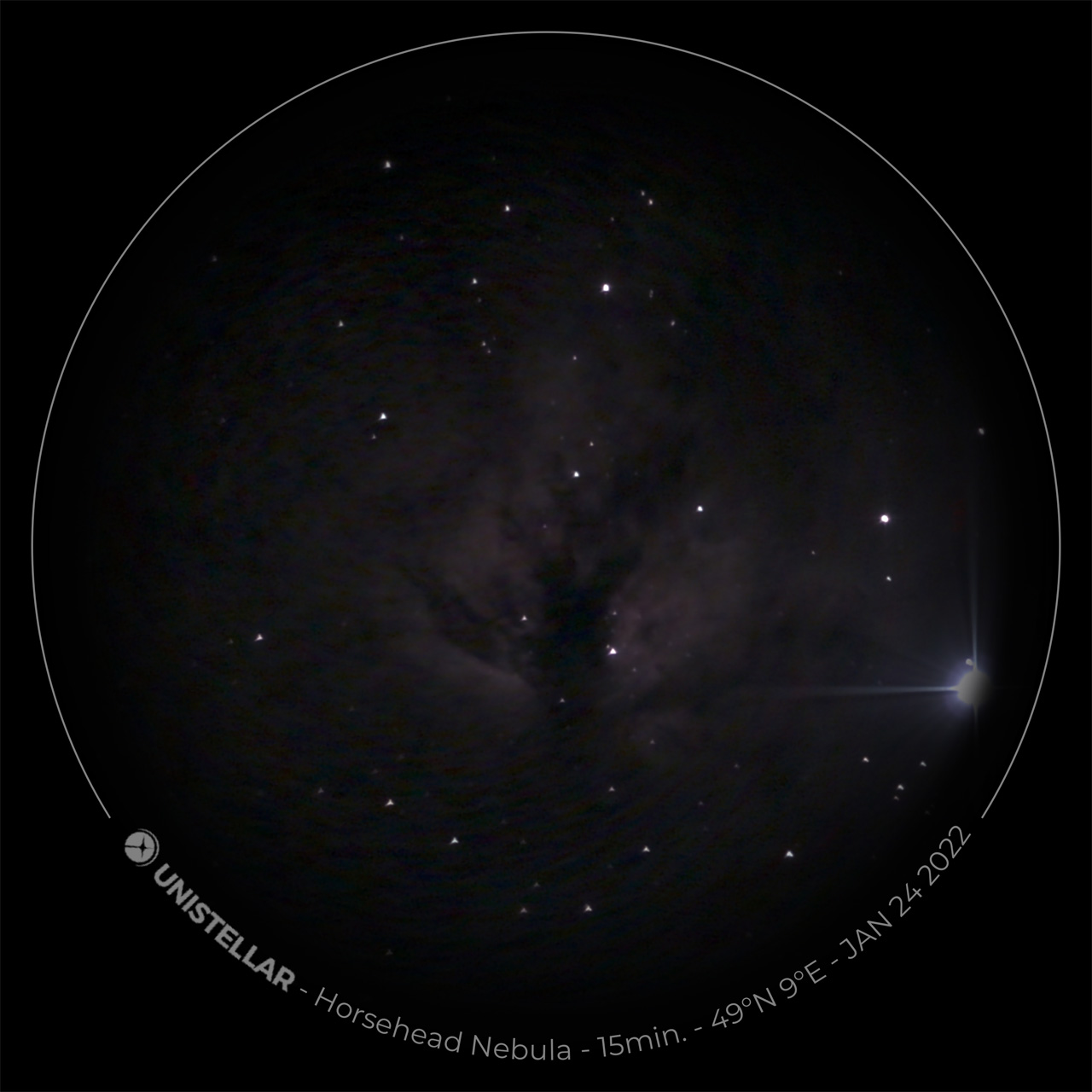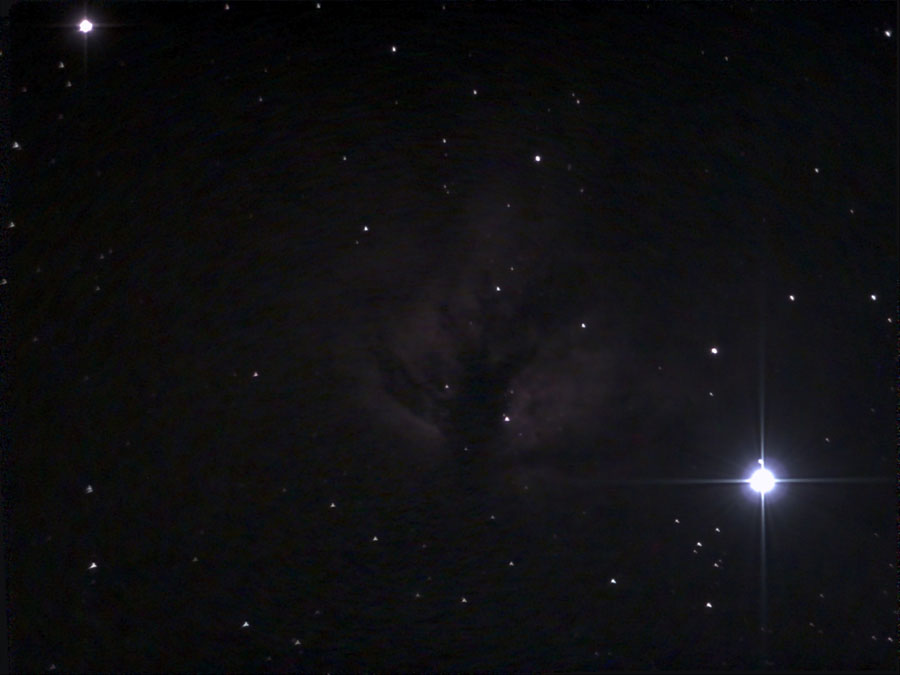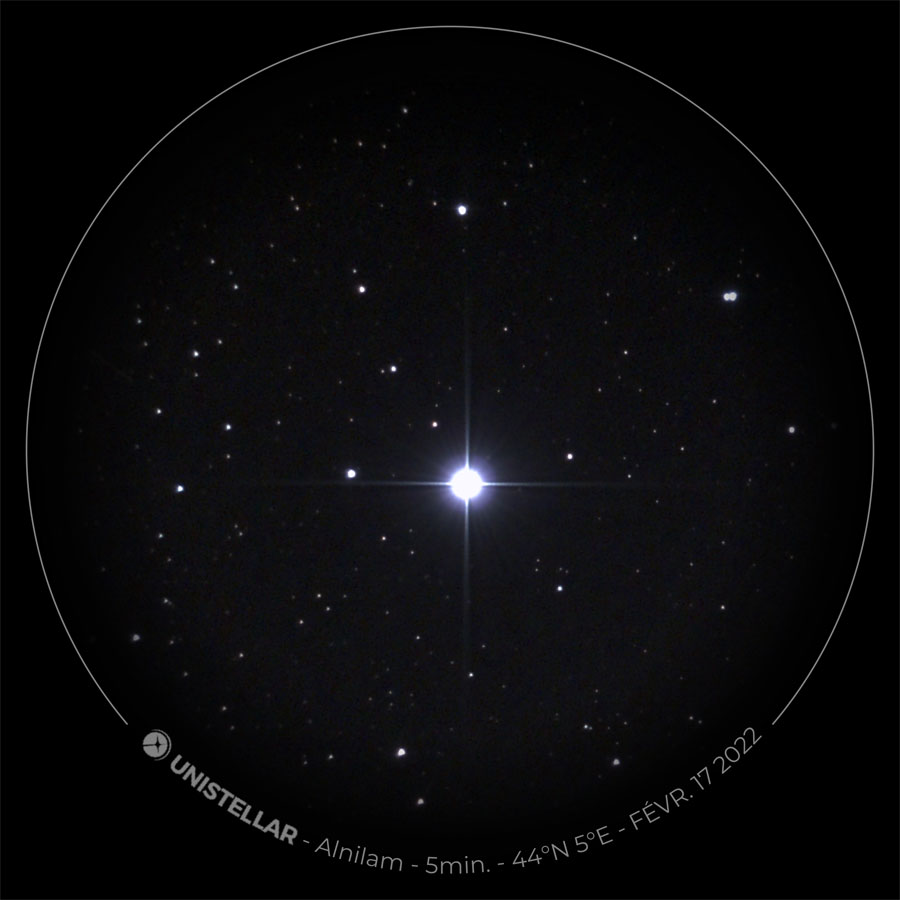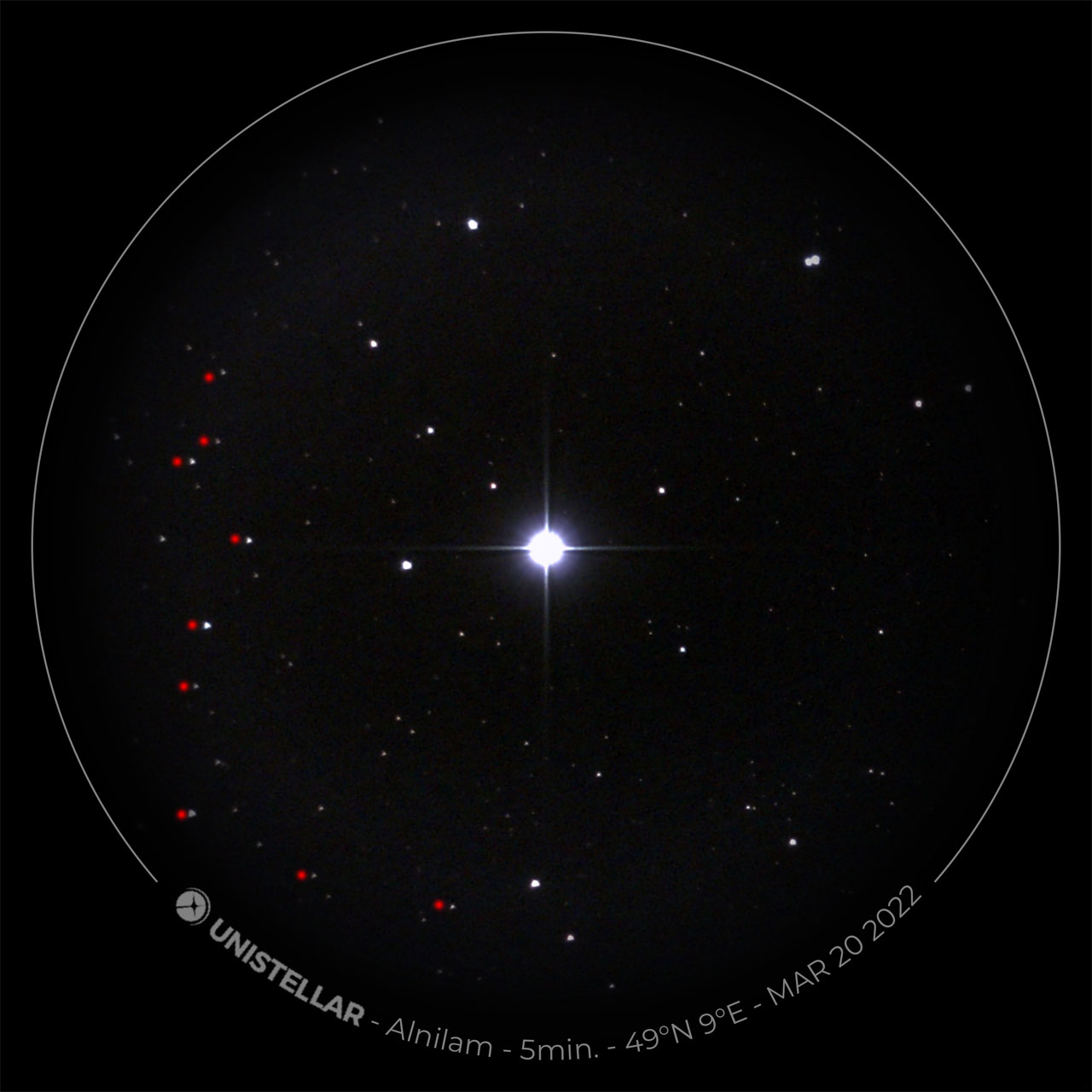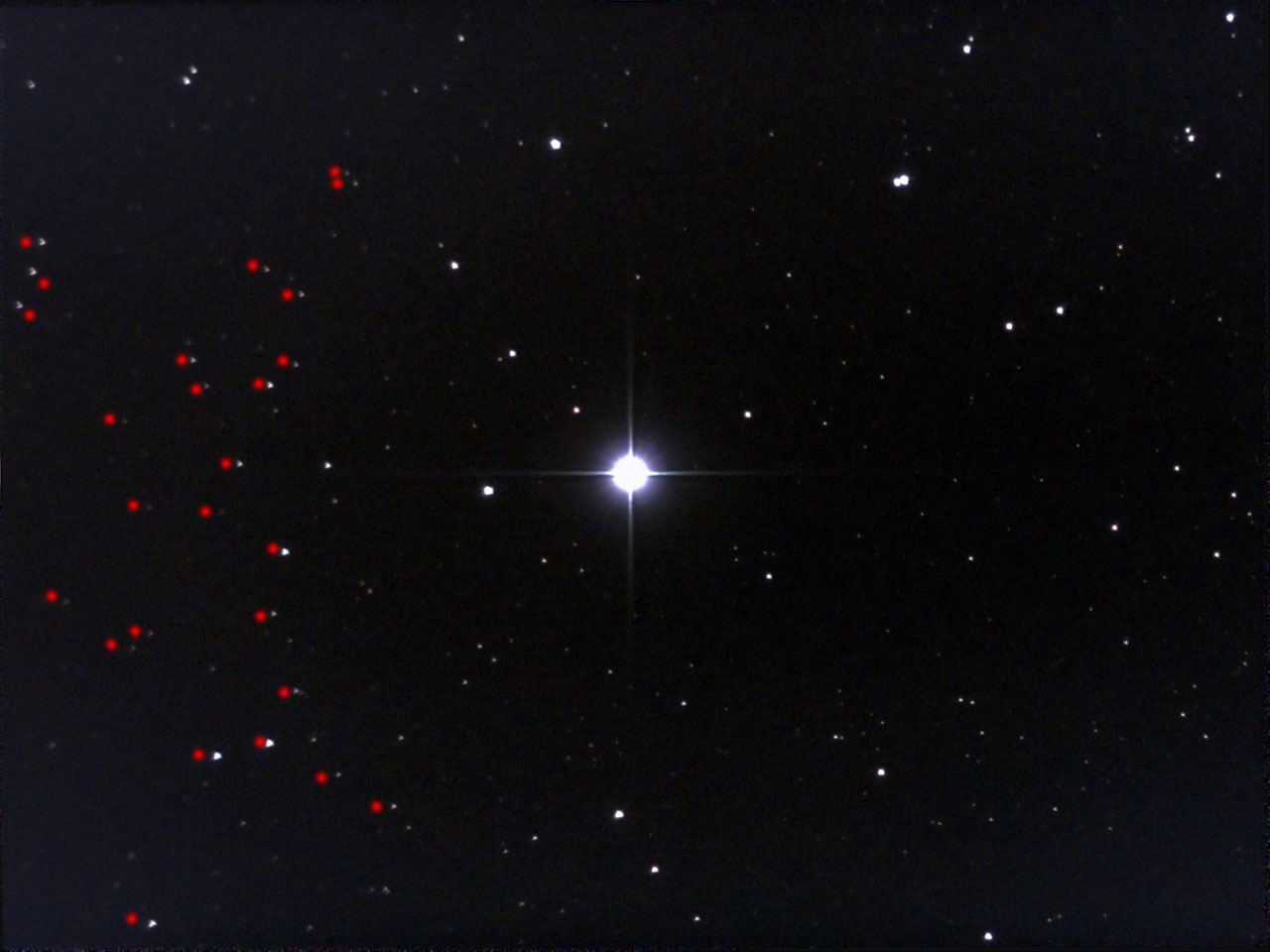Unistellar eVscope 2 - First Experiences (Photo Comparison)
Introduction | DSO Photos | Discussion | First Conclusions | Links
Archive
On this page, I describe my first experiences with a further photo
comparison,
mostly done in parallel, of my electronic 4,5" Newton
telescope Unistellar eVscope 2* with my original Unistellar eVscope (see the following note).
*) I ordered the eVscope 2 in October 2021; it arrived at the beginning of December, 2021; repaired by Unistellar; returned to be exchanged with a new one in March 2022 (the second one).
Note: Since I was not satisfied with the results of my new eVscope 2, Unistellar offered to check and possibly repair my eVscope 2. So, I sent it to Unistellar on February 14, 2022 and received information on February 18 that my eVscope 2 had been repaired and will be returned to me. When asked, I was told that there was a problem with the primary mirror, which was slightly under tension and therefore produced blurry images. As proof of the repair, I received a photo of Alnilam. It looks much better than my similar photo of Alnitak (near the Flame Nebula), but at closer look still exhibits triangular stars). The story still continues! Meanwhile, I was able to test my repaired eVscope 2 and report on my results on pages First Experiences (After Repair - Part 1) and First Experiences (After Repair - Part 2). According to this, the repair resulted in an improvement, but did not completely eliminate the mirror tension. Unistellar therefore offered me to return my eVscope 2 (end of March 2022) and exchange it for a new one. This arrived on April 8, 2022. So I close the pages for my first eVscope 2 sample! So please note that my eVscope 2 photos on this page do not reflect the true performance of the eVscope 2! |
Note: See page Overview of the Unistellar Pages for just that!
Introduction
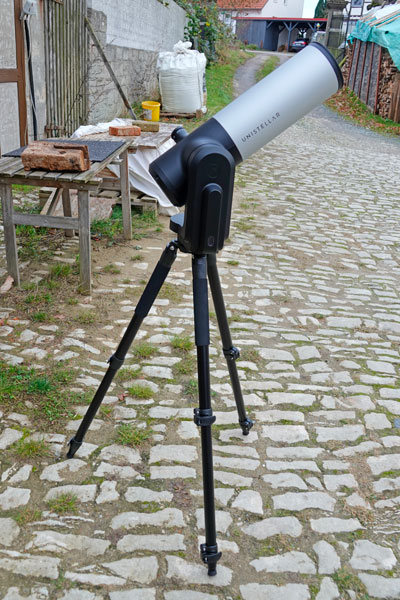 |
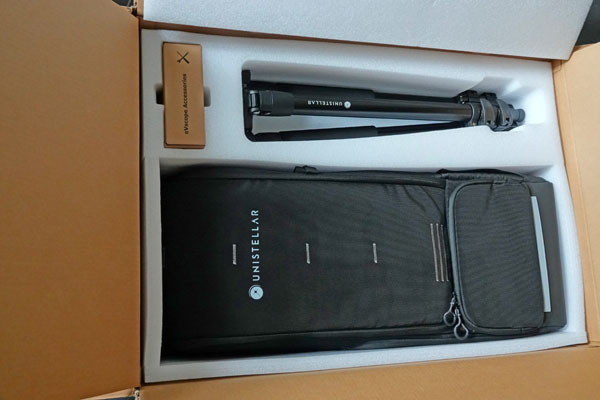 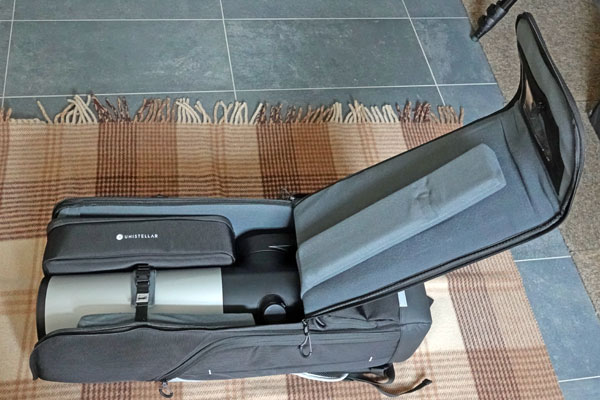 |
 |
Photos: My eVscope 2 (December 3, 2021)
 |
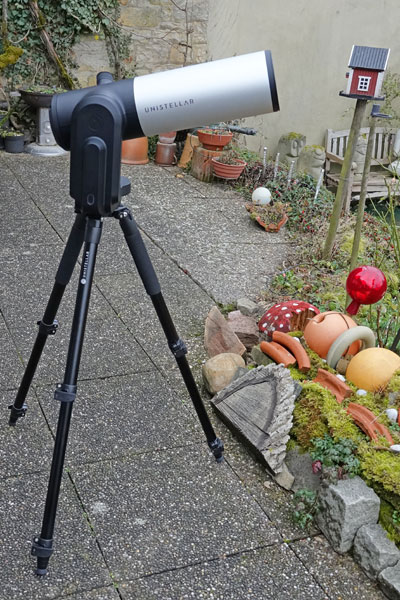 |
 |
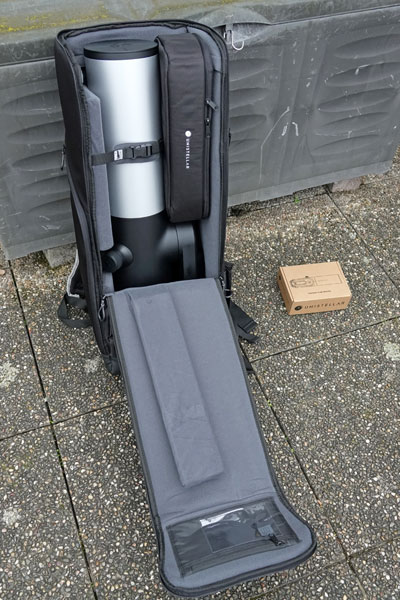 |
Photos: My eVscope (End of January 2020)
To my surprise, the sky was clear on January 24, 2022 (and it was cold), and so I was finally able to compare my new eVscope 2 directly with my original eVscope. In the beginning, the observations were a bit out of sync, but later they were done almost in parallel. I controled the eVscope with my wife's iPhone 6s and the eVscope 2 with my iPad and later also in parallel with my iPhone 7. This allowed for an easier comparison of the screen images. I also set my iPhone 7 for the eVscope 2, to display an "overlay" to get the labeling.
First, however, I set off to re-collimate my eVscope 2, because the existing collimation was inadequate. I first tries this on Jupiter, but that proved difficult. Then, I tried the star Algenib, and, because it was not bright enough, I used the star Aldebaran for the collimation. After observing the Pleiades M 45, I accessed the Triangulum Galaxy M 33 and discovered "triangular" stars on the display. So I collimated once more, and was able to see at M 33 that the collimation was at least a little bit better afterwards. With this collimation, I probably observed all further DSO with the eVscope 2. I also re-collimated the original eVscope, but I forgot the details... In any case, I observed the same objects with it as with the eVscope 2, so the external conditions were comparable this time (SQM between 19.7 and a little more than 20).
DSO Photos
In the following, I present photos of DSO in alphabetical order according to the numbering, which were taken with the eVscope 2 as well as with the original eVscope. With the eVscope 2, I also present more or less identical photos saved with the iPhone 7 with overlay, where available. It turned out, however, that they were not always "identical"....
In the following section I discuss some of the differences between the photos. Here I make just short remarks.
When comparing the photos, please note that the objects in the eVscope appear smaller when the image is projected onto the same surface (as on the iPhones 6s and 7 screens, but also on this page, because the image size in pixels is identical, since I scaled all the photos down to 1280 x 960 pixels). In principle, however, the eVscope 2 objects have slightly more pixels, because the sensor area is 2048 x 1535 versus 1280 x 960 pixels for the eVscope . I will attempt a pixel by pixel comparison later...
Note: Because post-processing is always subjective, I also show the originals, even if they are sometimes quite dark.
B 33 (Horse Head Nebula)
Here I find the eVscope result clearly better than that of the eVscope 2.
M 1 (Crab Nebula)
Here, the results of both telescopes seem quite comparable to me.
M 33 (Triangulum Galaxy)
Although the best M 33 result so far with the eVscope 2, the eVscope also shows one of its best results and seems superior to me.
M 42 (Orion Nebula)
The photo of the eVscope 2 is less washed out, I do not see big differences in favor of the eVscope 2 this time. The crop seems more favorable with the eVscope 2...
M 43 (De Mairans Nebula)
Here, the same applies as to M 42.
M 45 (Pleiades)
 |
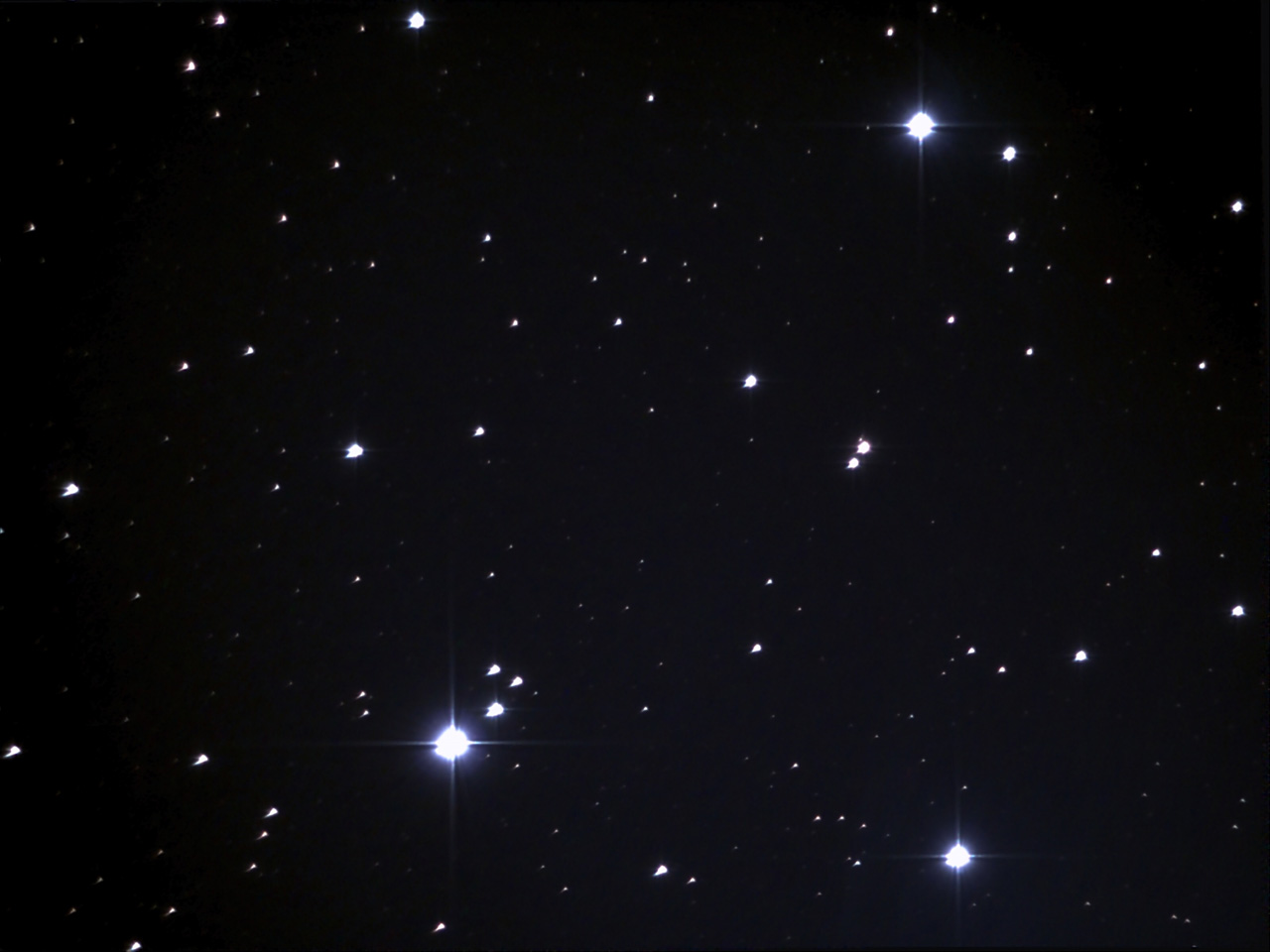 |
|
M 45, Jan 24, 2022, eVscope |
M 45, Jan 24, 2022, eVscope 2 |
|
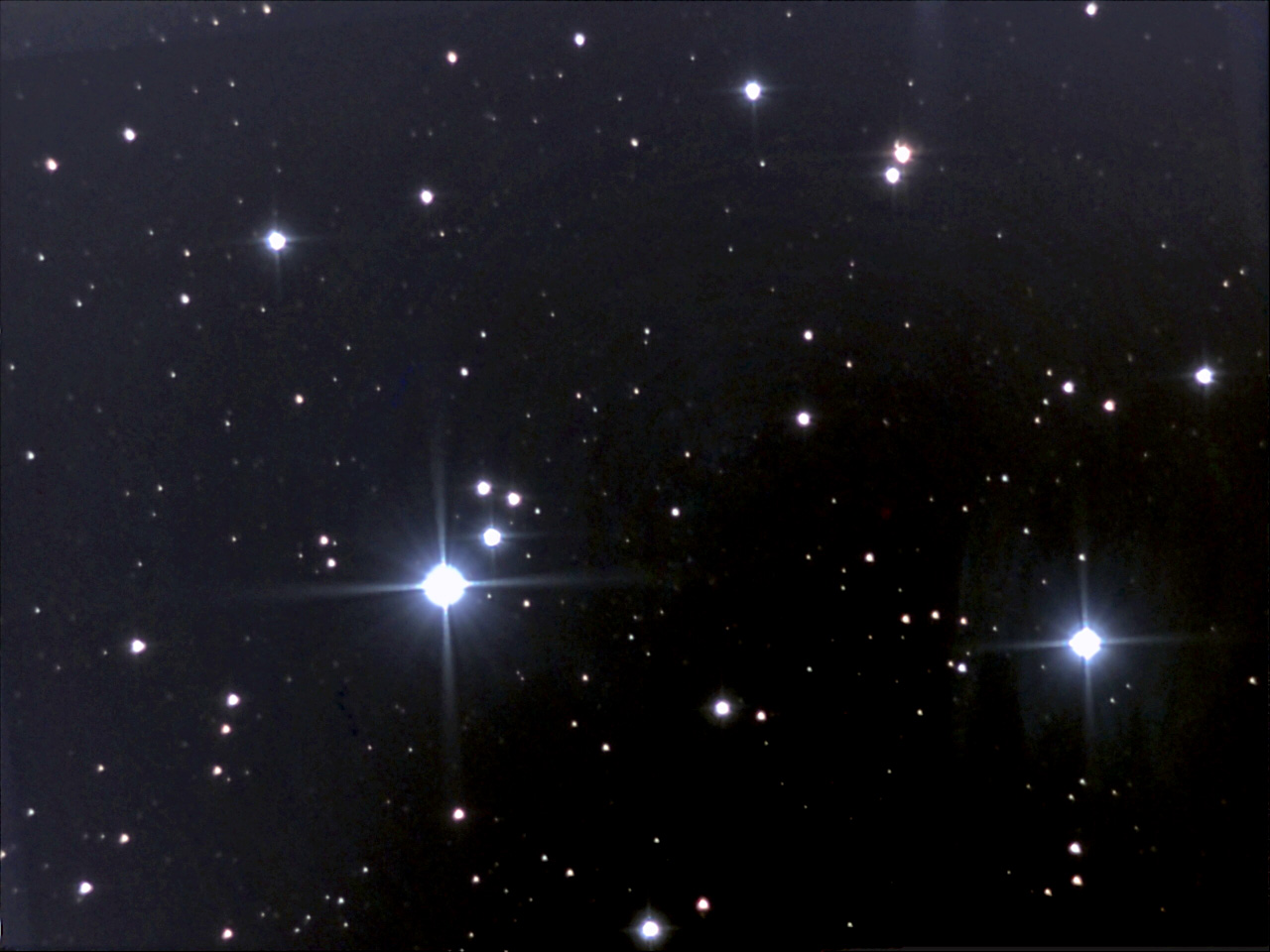 |
 |
|
M 45, Jan 24, 2022, eVscope, processed |
M 45, Jan 24, 2022, eVscope 2, processed |
Apart from the star shapes, I do not see much difference between the two telescopes. As with M 42, the eVscope 2's larger field of view is beneficial for the Pleiades.
M 74
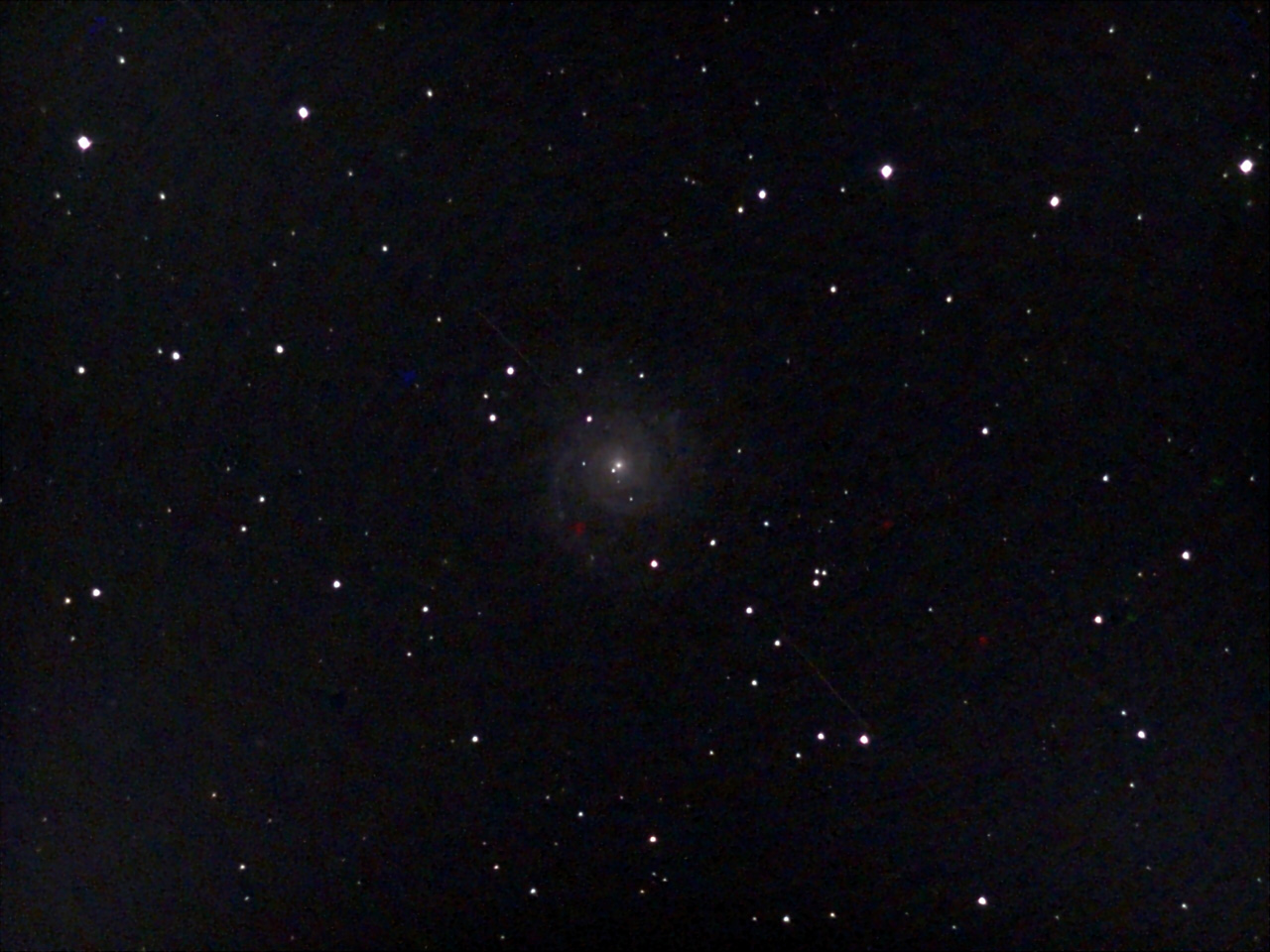 |
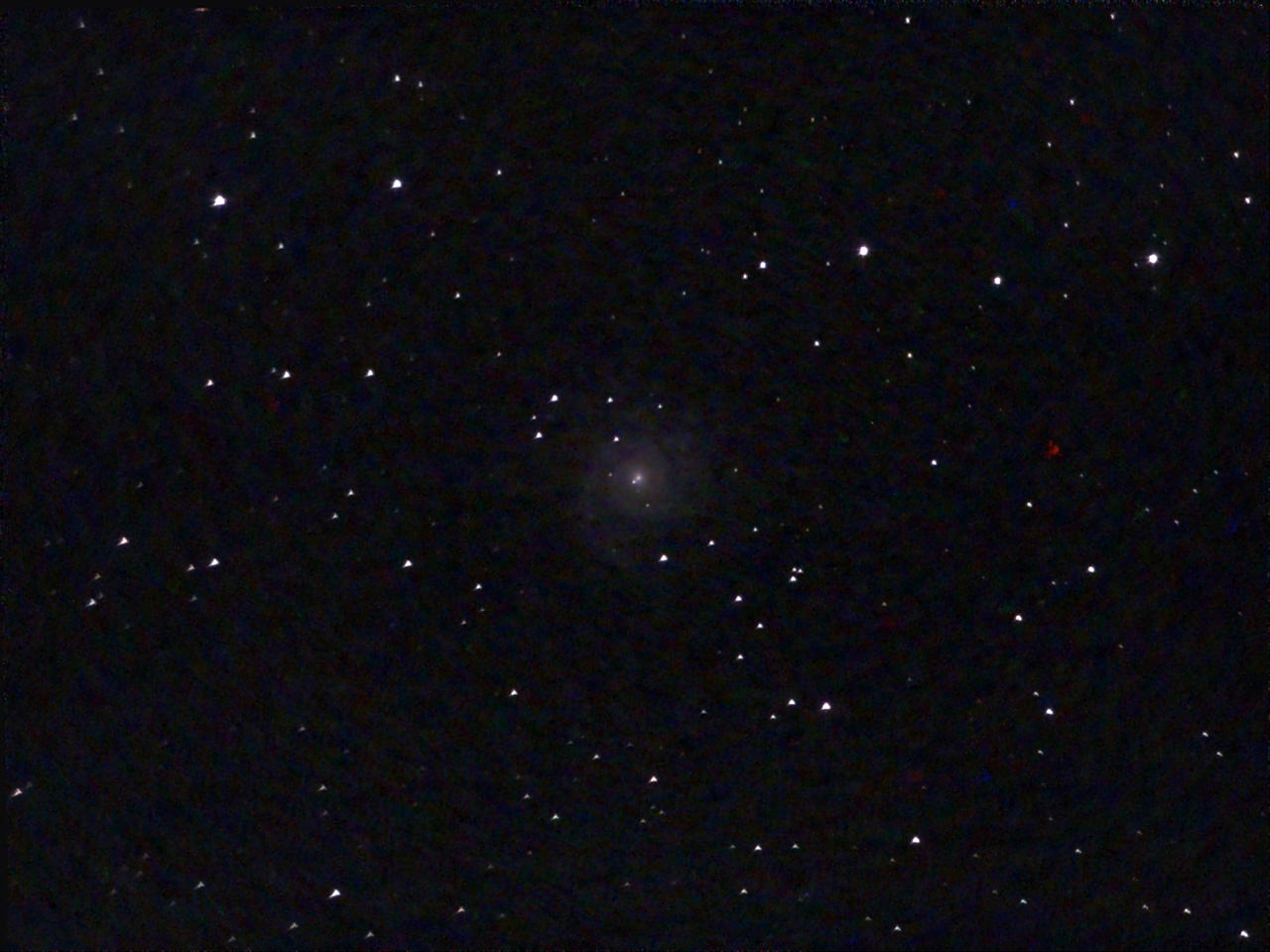 |
|
M 74, Jan 24, 2022, eVscope |
M 74, Jan 24, 2022, eVscope 2 |
|
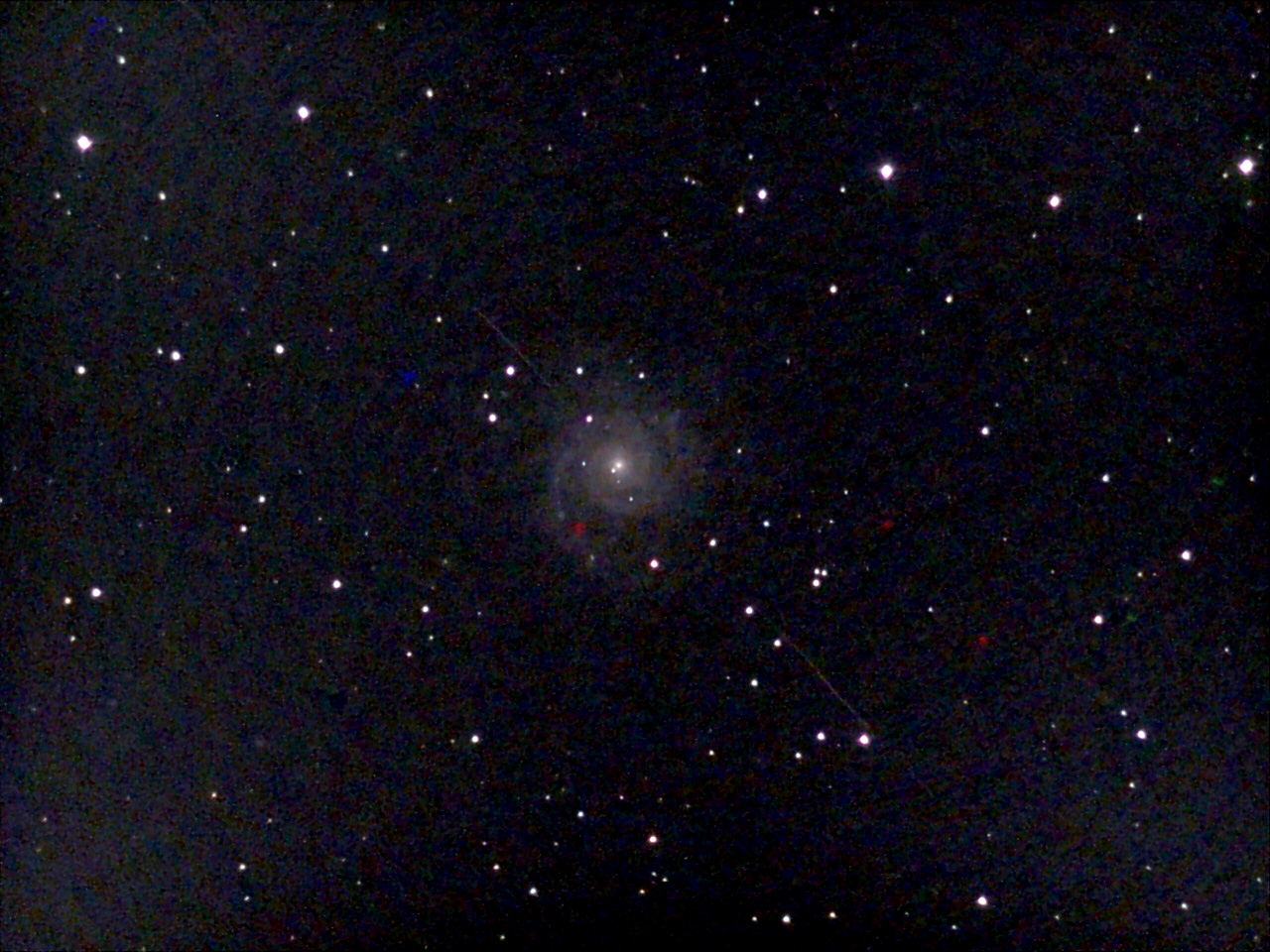 |
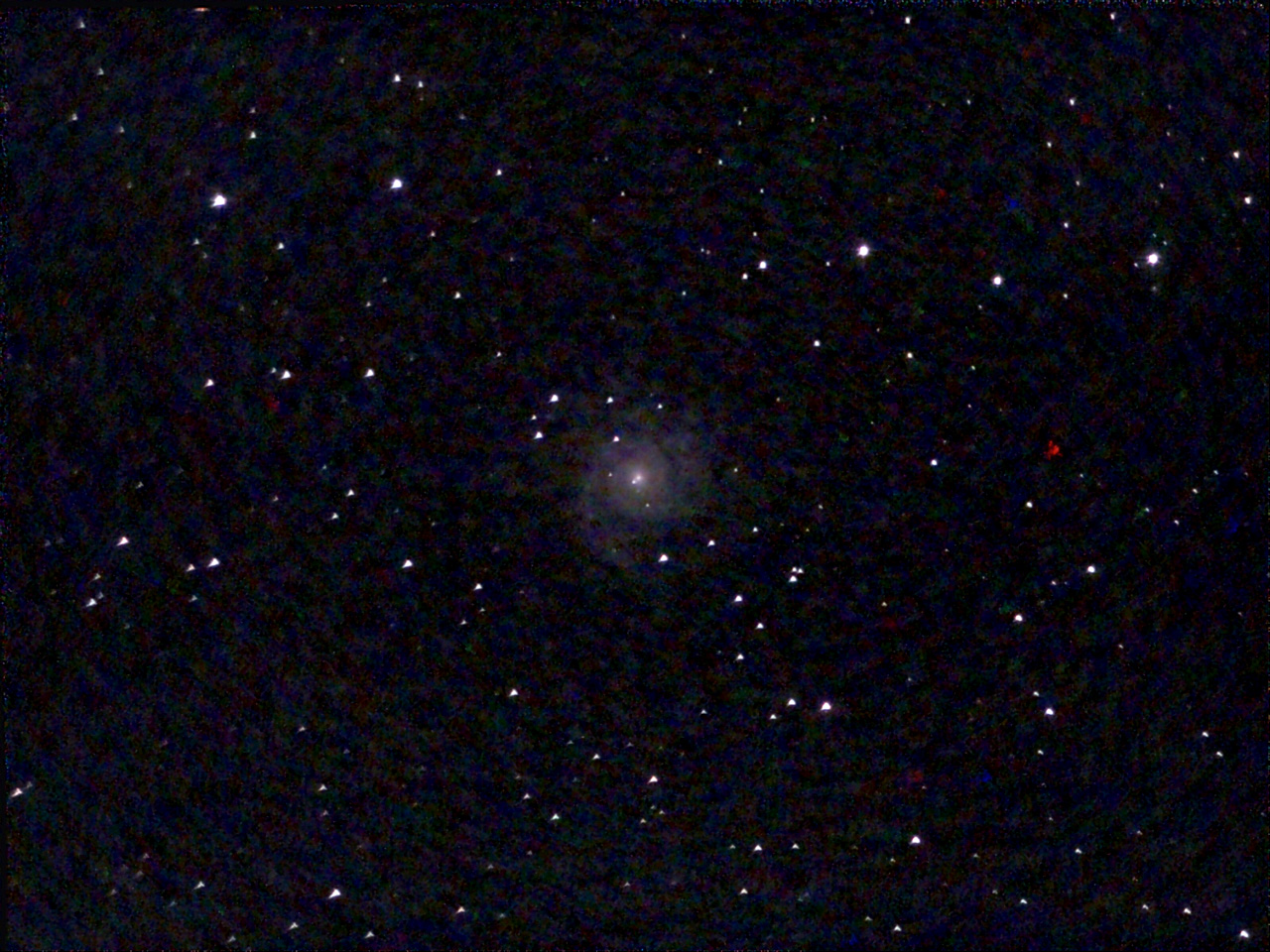 |
|
M 74, Jan 24, 2022, eVscope, processed |
M 74, Jan 24, 2022, eVscope 2, processed |
This is where the smaller field of view of the original eVscope comes in handy. The eVscope photo may also be a tad better than that of the eVscope 2.
M 77
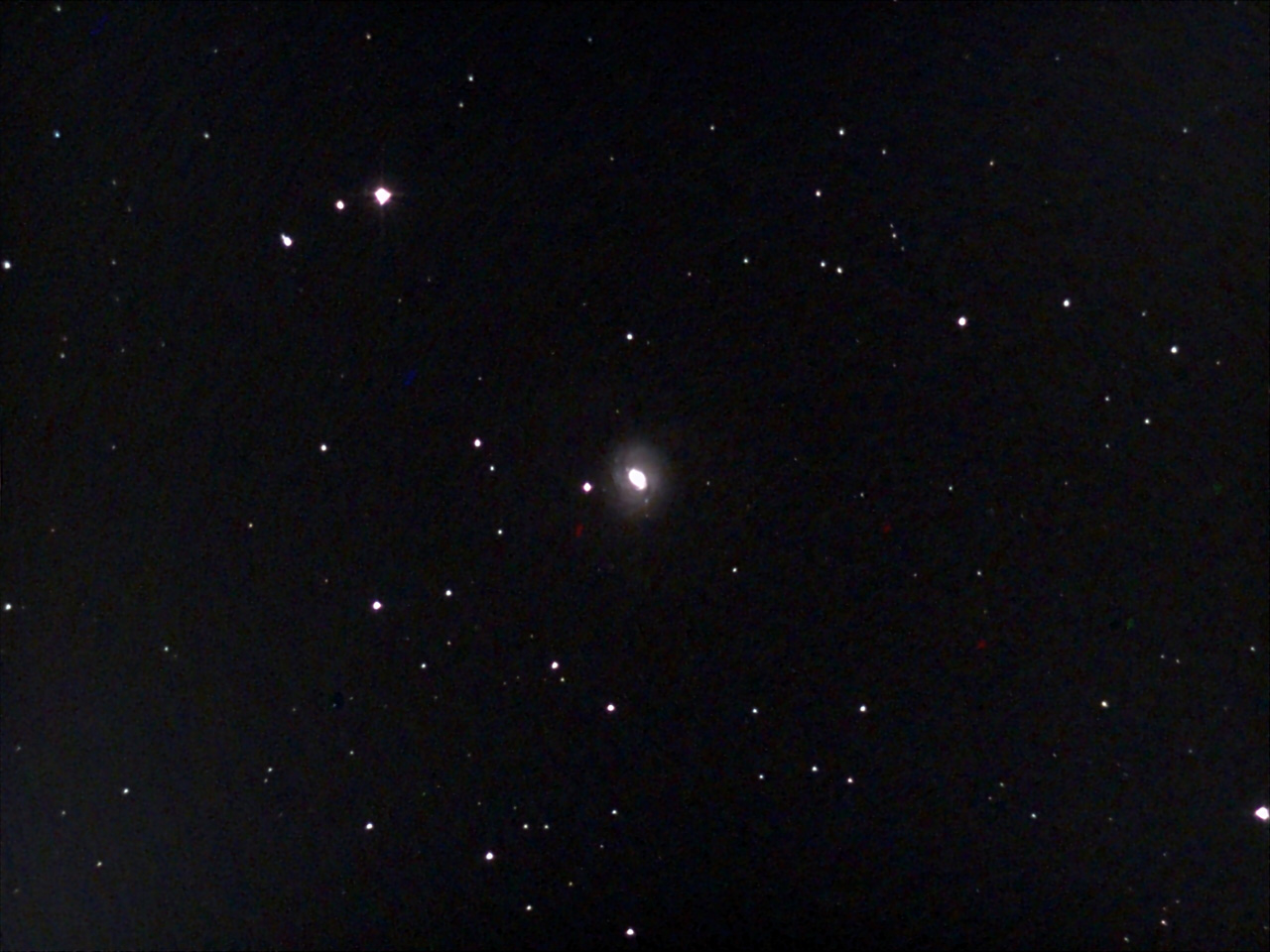 |
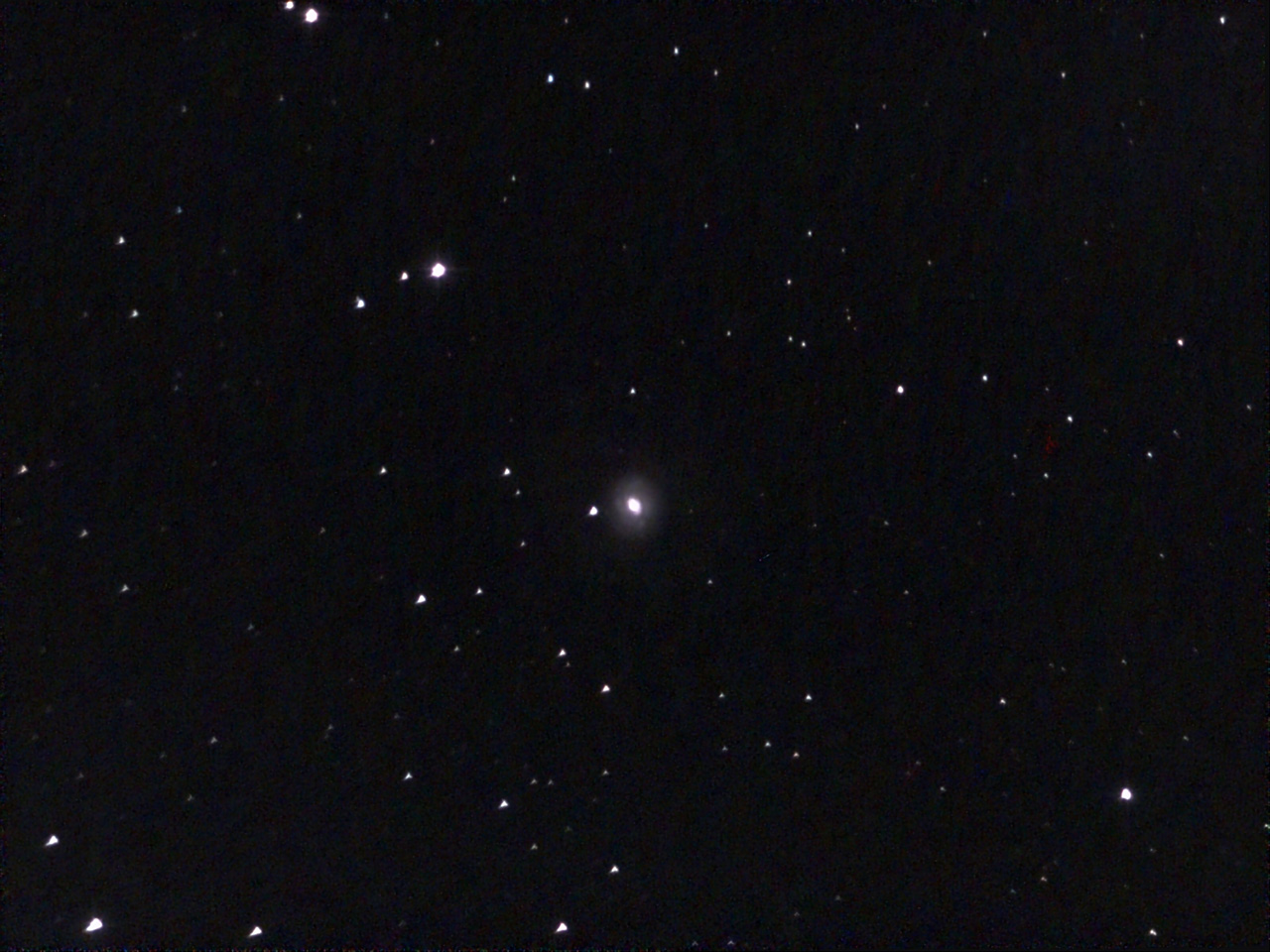 |
|
M 77, Jan 24, 2022, eVscope |
M 77, Jan 24, 2022, eVscope 2 |
|
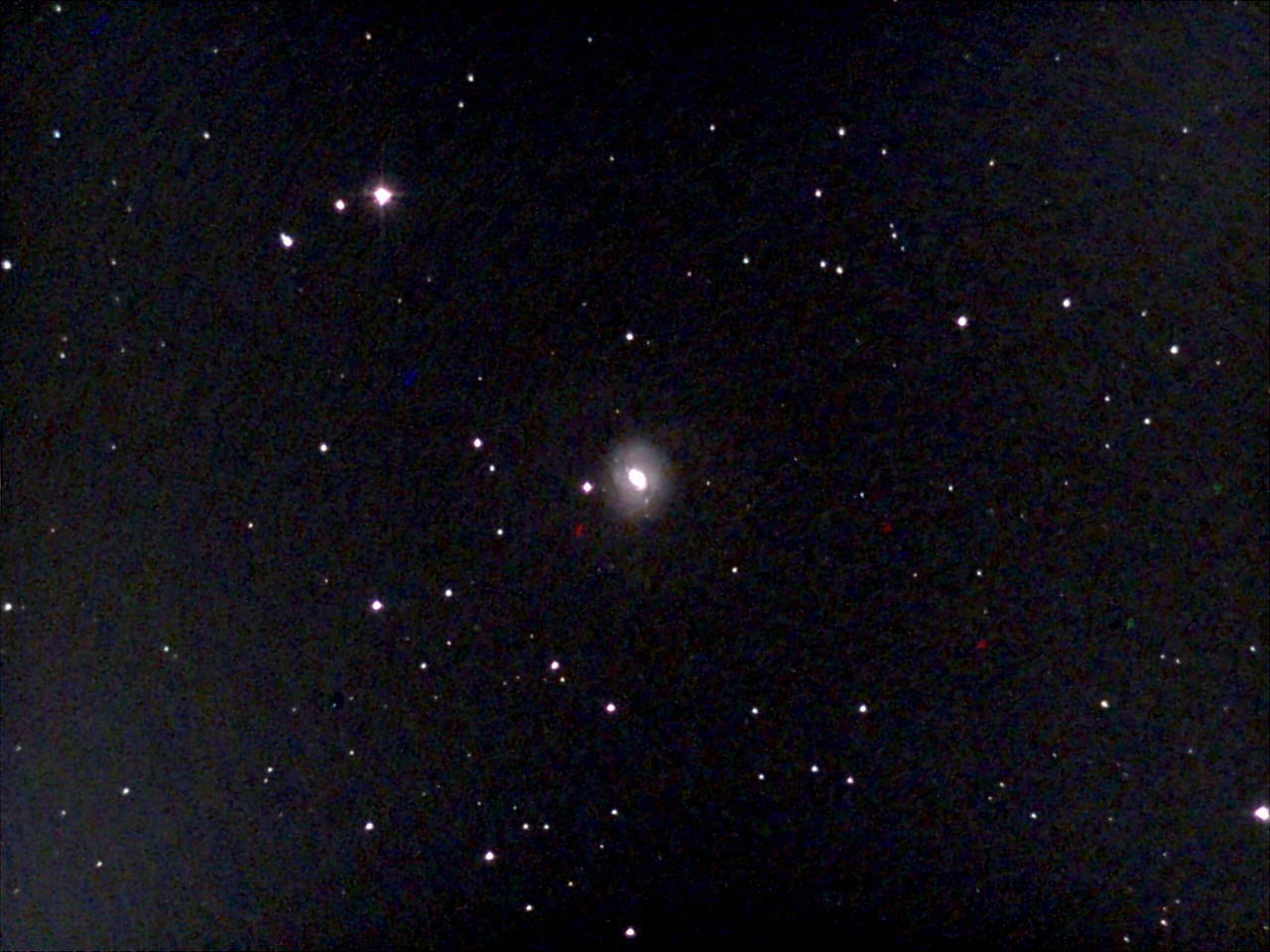 |
 |
|
M 77, Jan 24, 2022, eVscope, processed |
M 77, Jan 24, 2022, eVscope 2, processed |
This is where the smaller field of view of the original eVscope comes in handy. The eVscope photo may also be a tad better than that of the eVscope 2.
M 78
On closer inspection, the eVscope photo seems to me to be better than the eVscope 2 photo because it handles the contrasts better.
NGC 1977 (Running Man Nebula)
The result of the eVscope seems to me a tad better.
NGC 2024 (Flame Nebula)
The result of the eVscope seems definitely better to me.
Discussion
Since my eVscope 2 was initially out of order, I do not want to discuss the results of this photo comparison here.
First Conclusions
Update: Since I was not satisfied with the results of my new eVscope 2, Unistellar offered to check and possibly repair my eVscope 2. So, I sent it to Unistellar on February 14, 2022 and received information on February 18 that my eVscope 2 had been repaired and will be returned to me. When asked, I was told that there was a problem with the primary mirror, which was slightly under tension and therefore produced blurry images. As proof of the repair, I received a photo of Alnilam, which was taken with my eVscope 2 after the repair. It looks much better than my similar photo of Alnitak (near the Flame Nebula), but at closer look still exhibits triangular stars):
In March 2022, I was able to take first photos with my repaired eVscope 2. Read pages First Experiences (After Repair - Part 1) and First Experiences (After Repair - Part 2) for more information! According to this, the repair resulted in an improvement, but did not completely eliminate the mirror tension. Unistellar therefore offered me to return my eVscope 2 (end of March 2022) and exchange it for a new one. This arrived on April 8, 2022. So I close the pages for my first eVscope 2 sample!
So please note that my eVscope 2 photos on this page do not reflect the true performance of the eVscope 2!
Links
- Unistellar Website: unistellaroptics.com
- eVscope 2 product page: unistellaroptics.com/evscope2
- See also my page offering Astronomy Links.
| 20.09.2022 |
